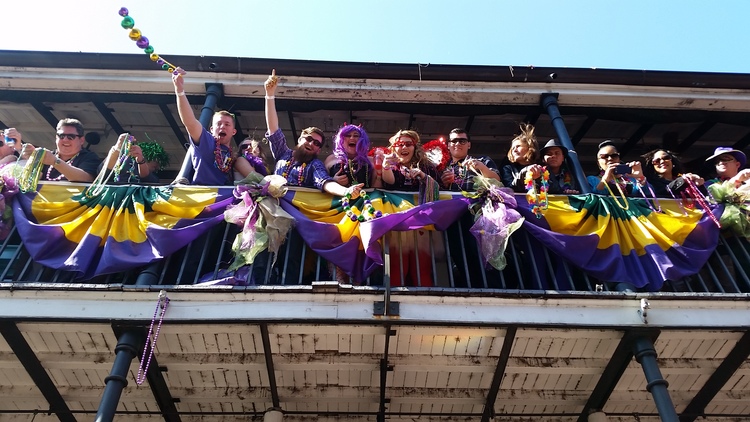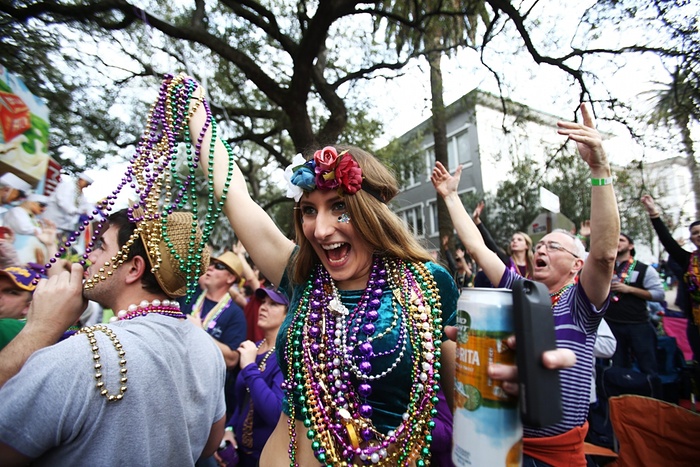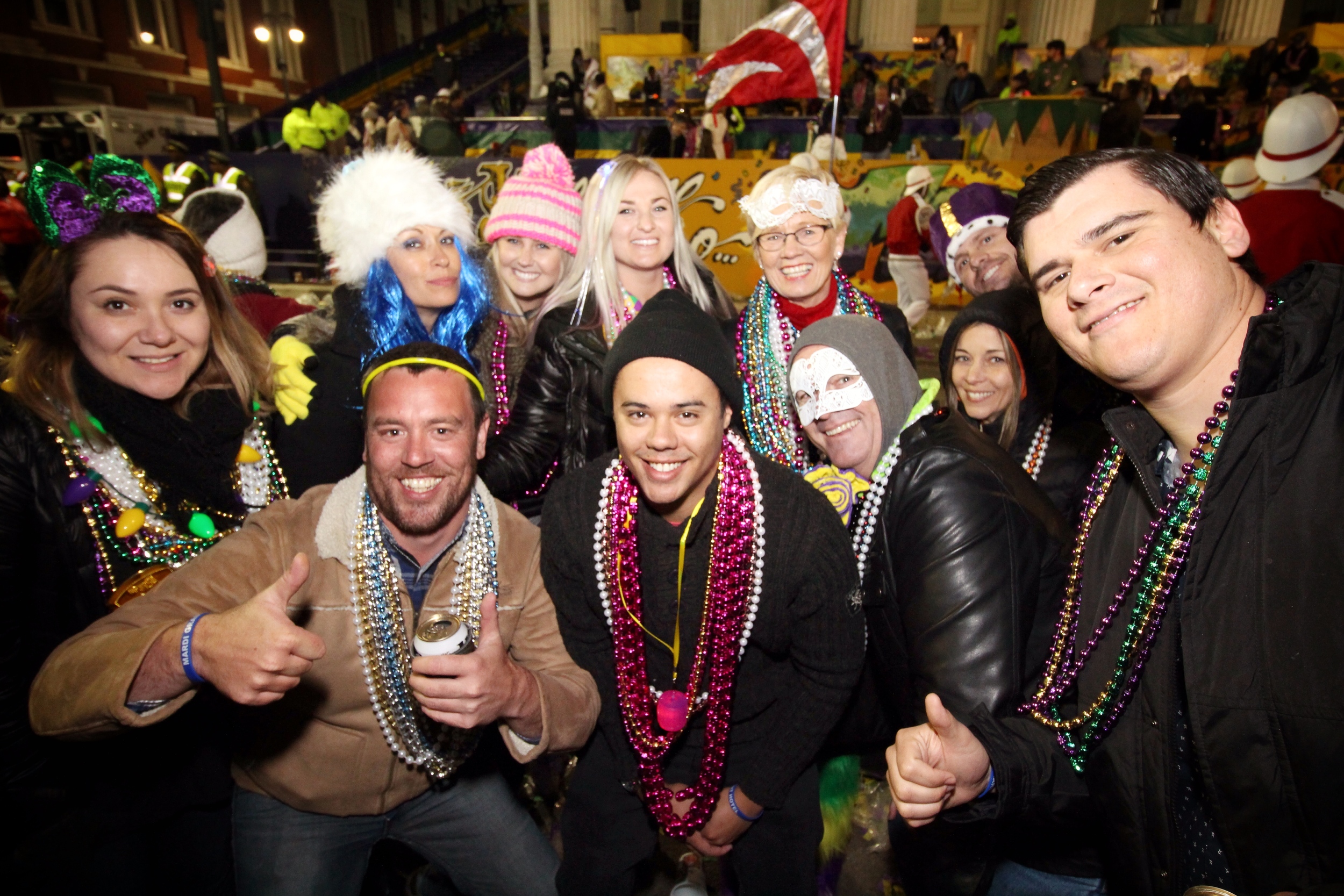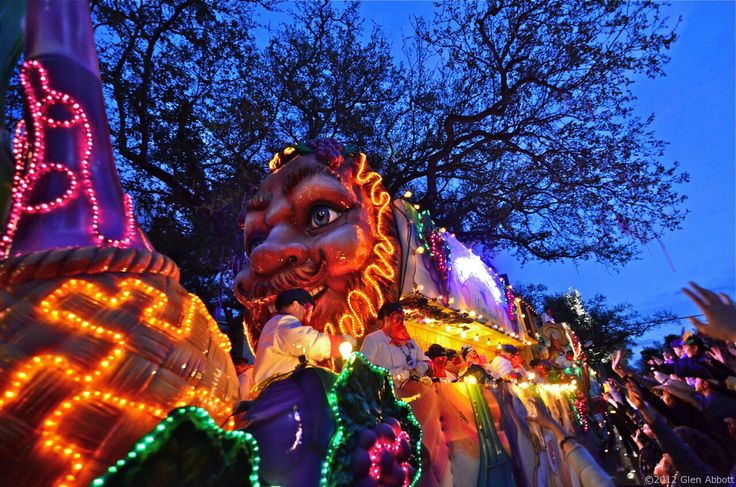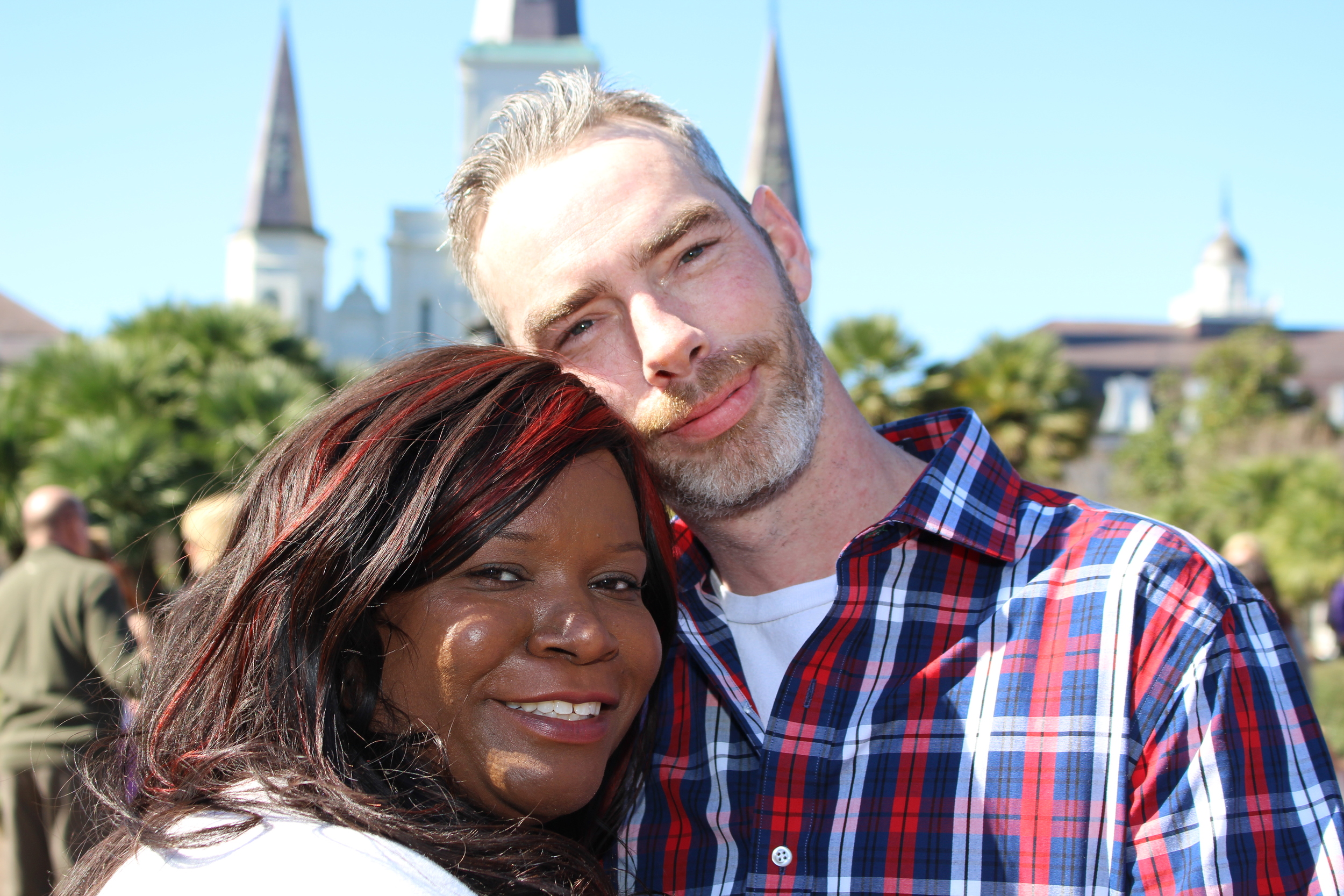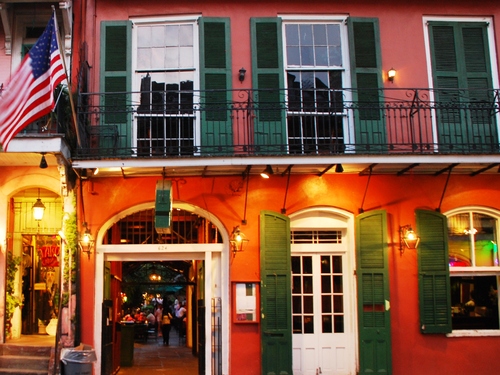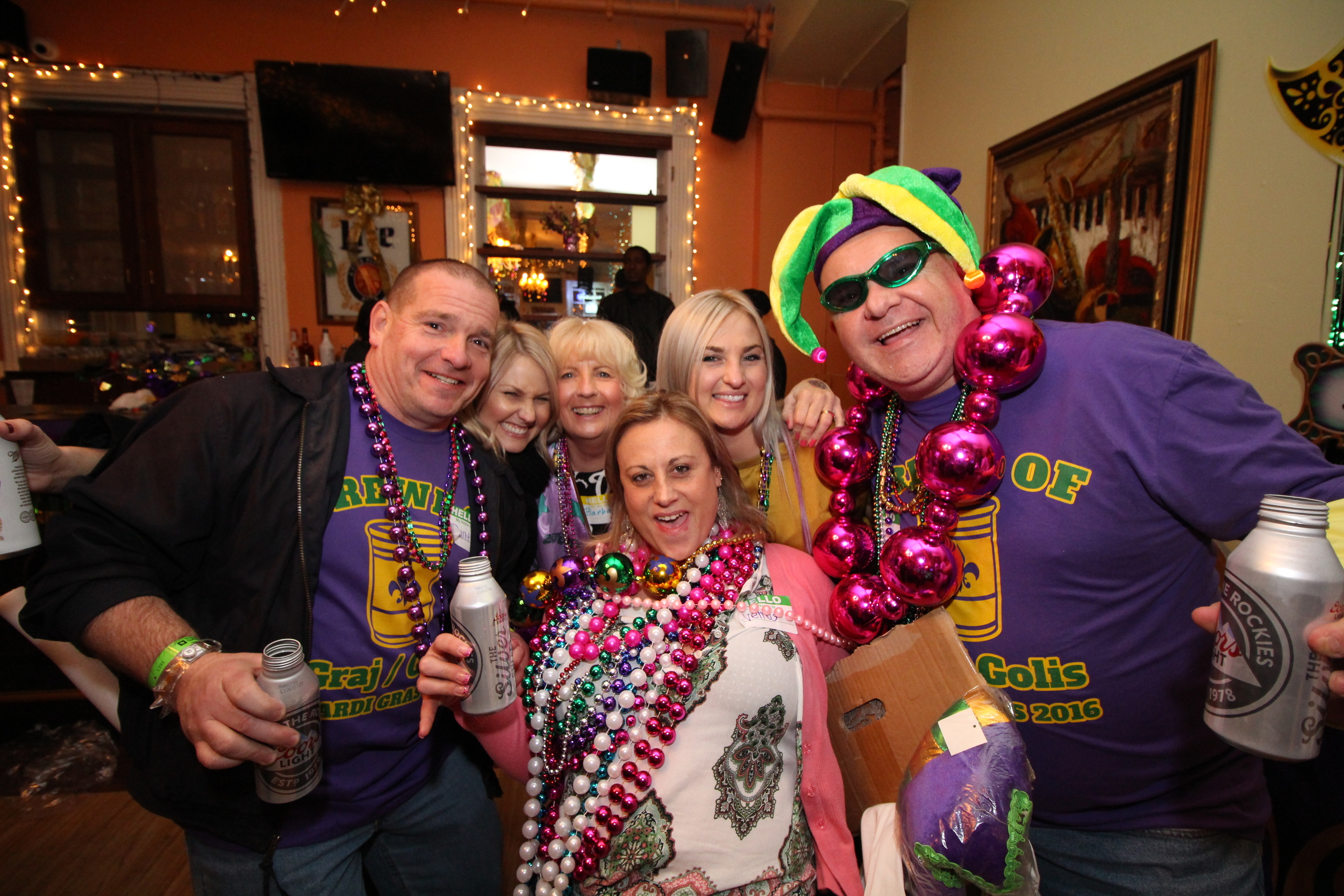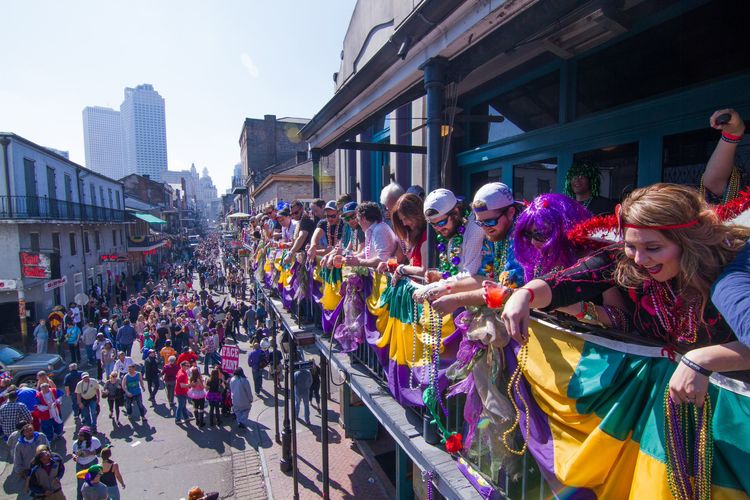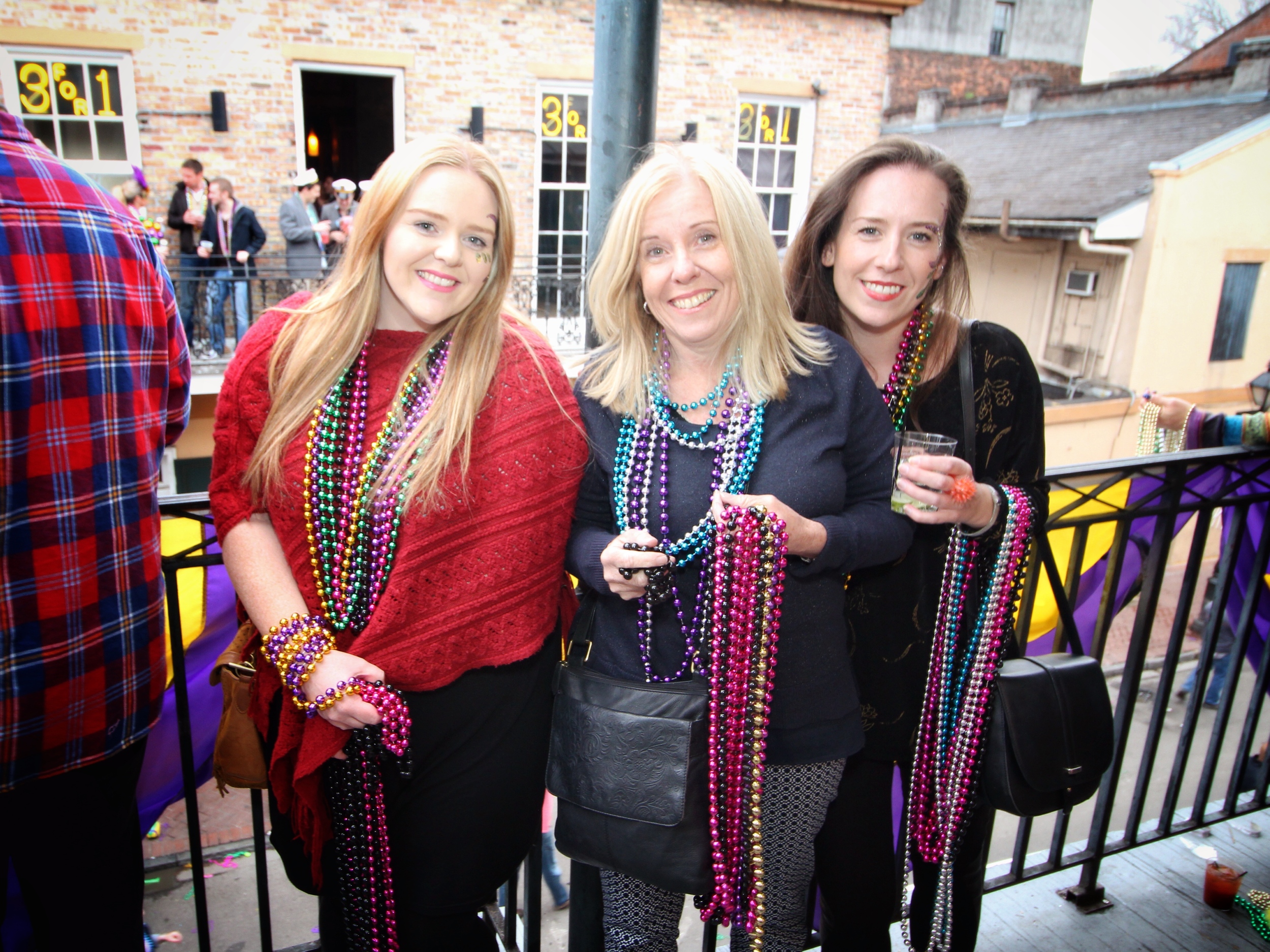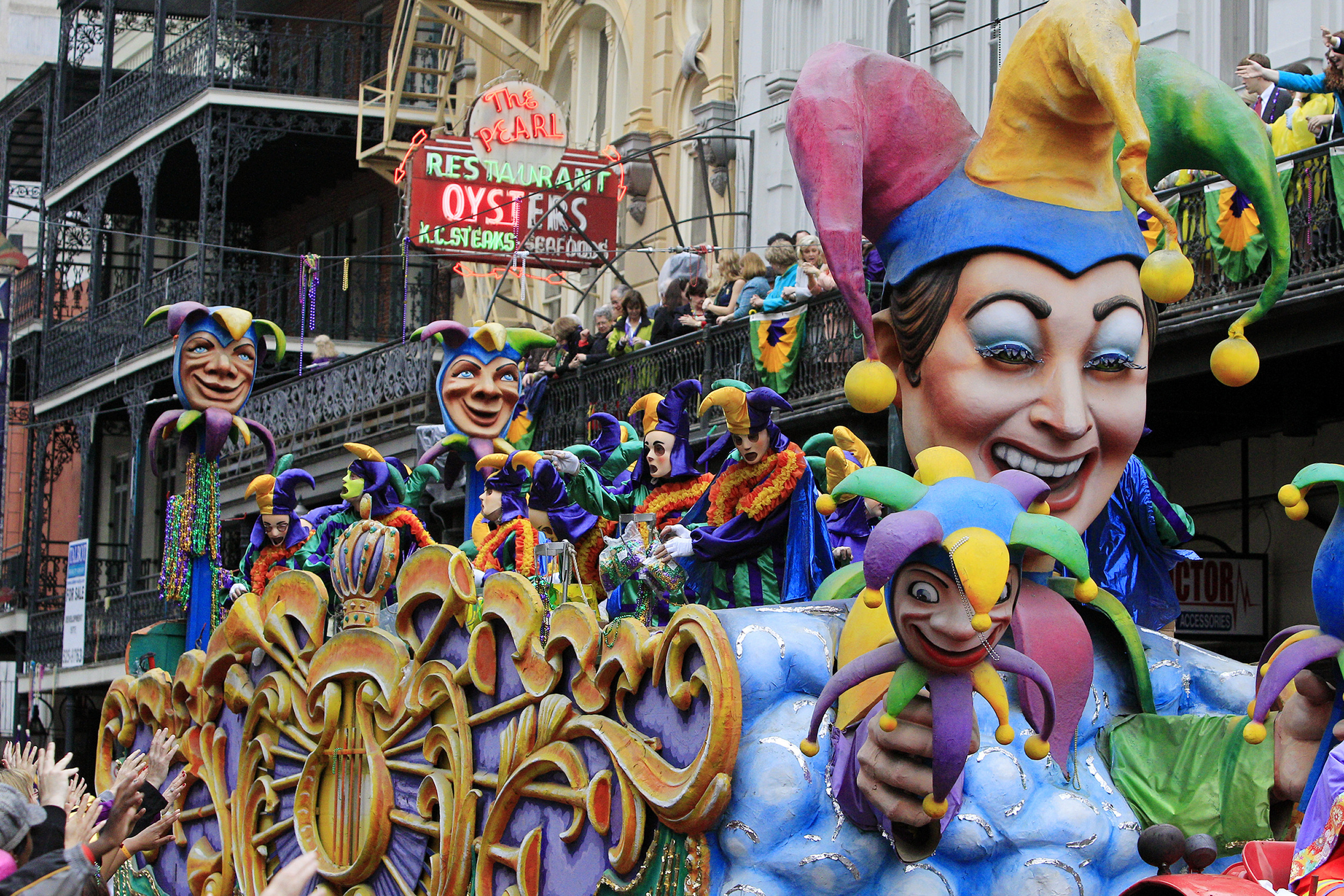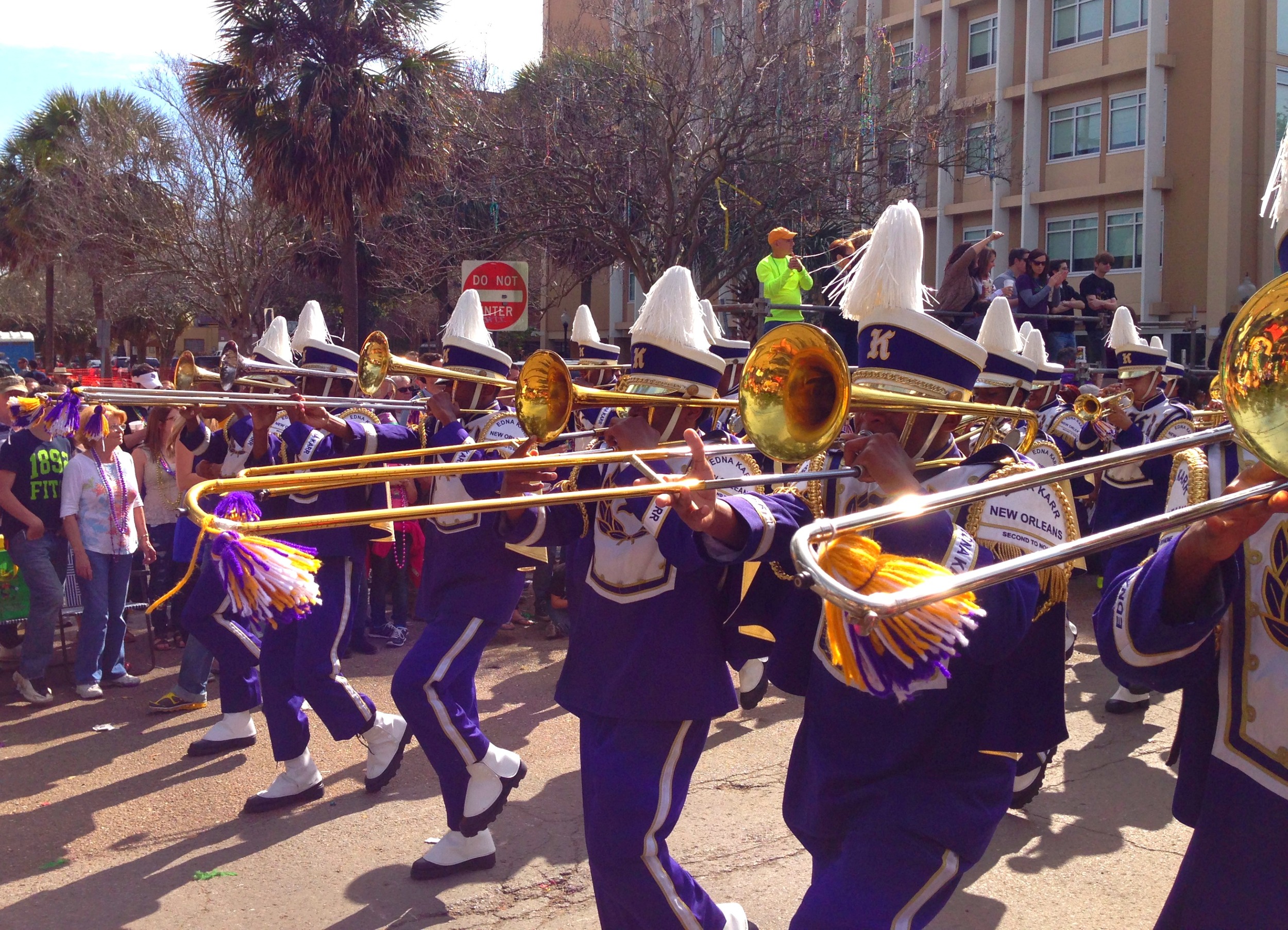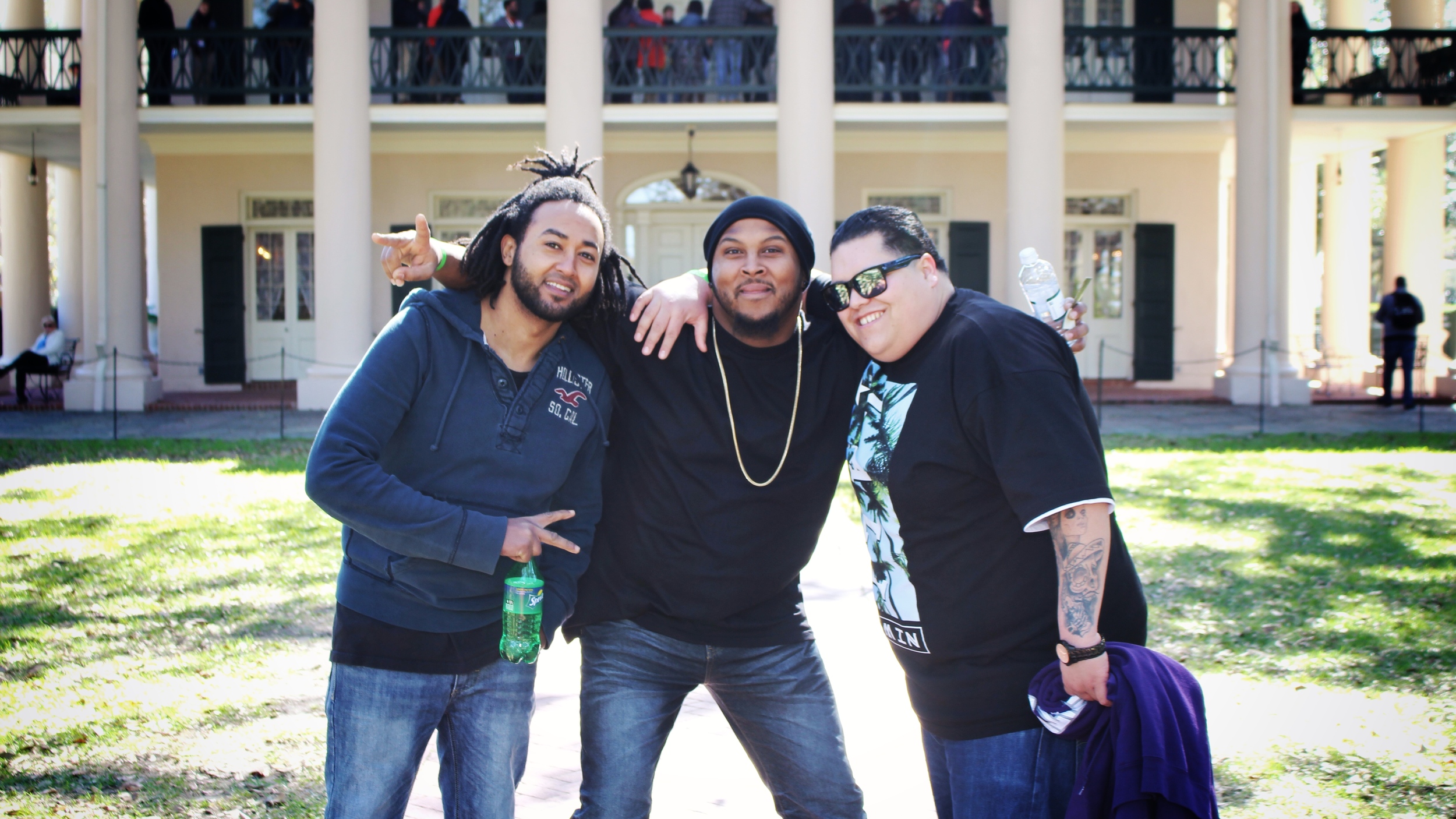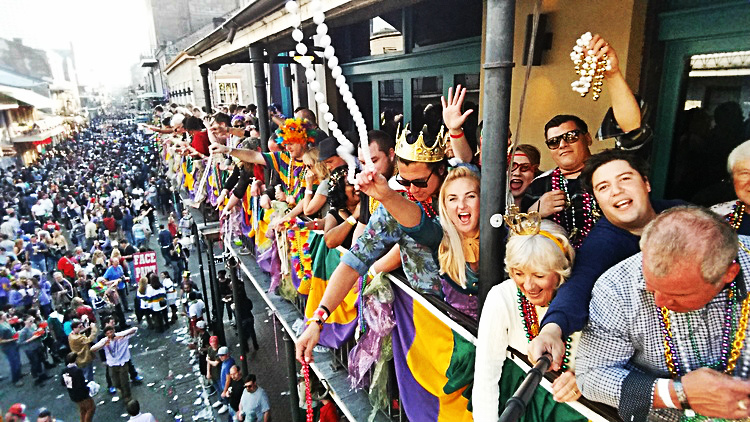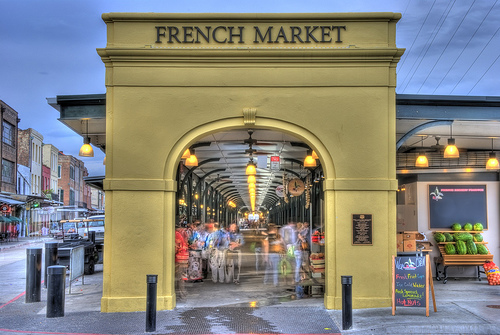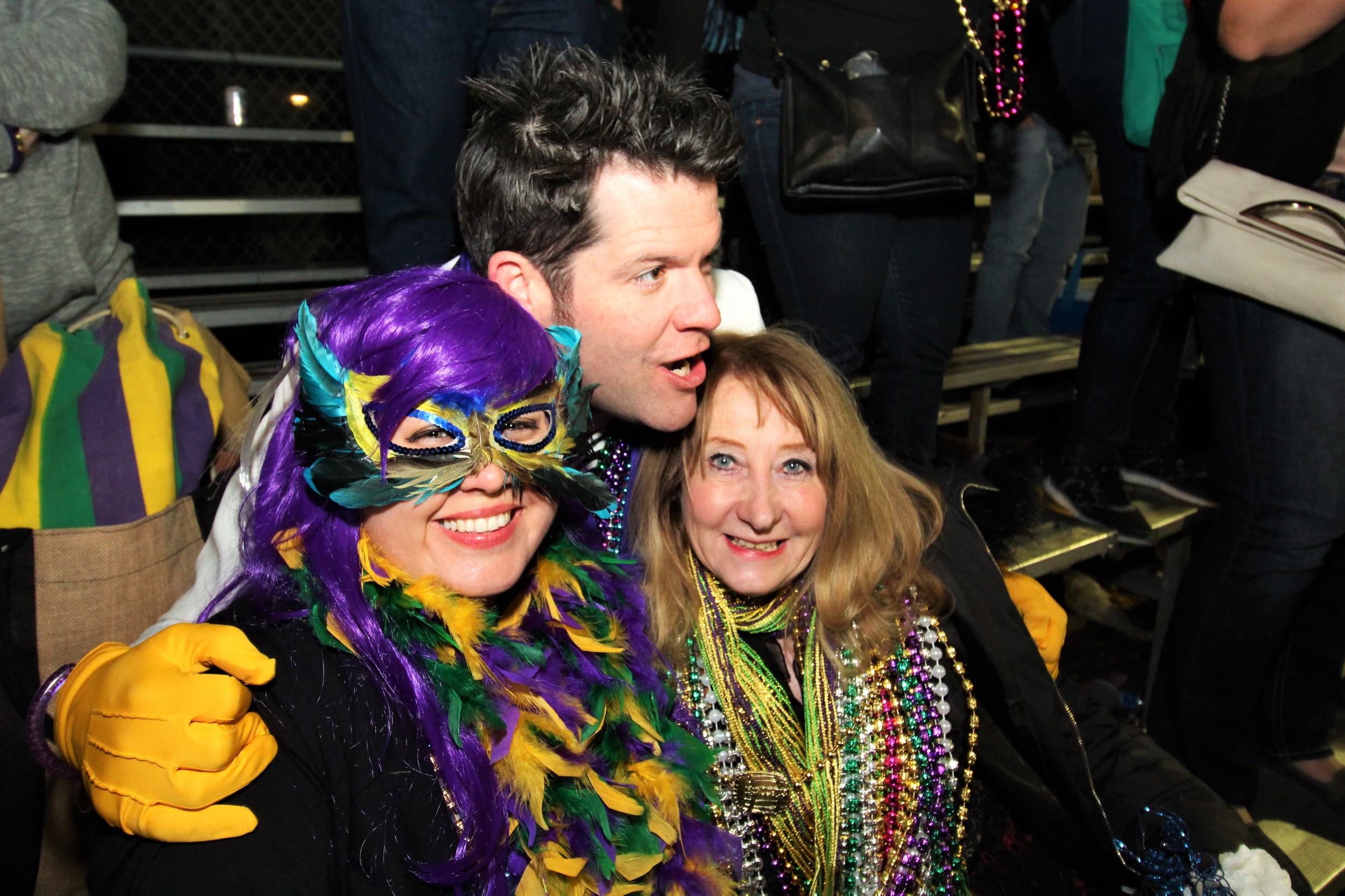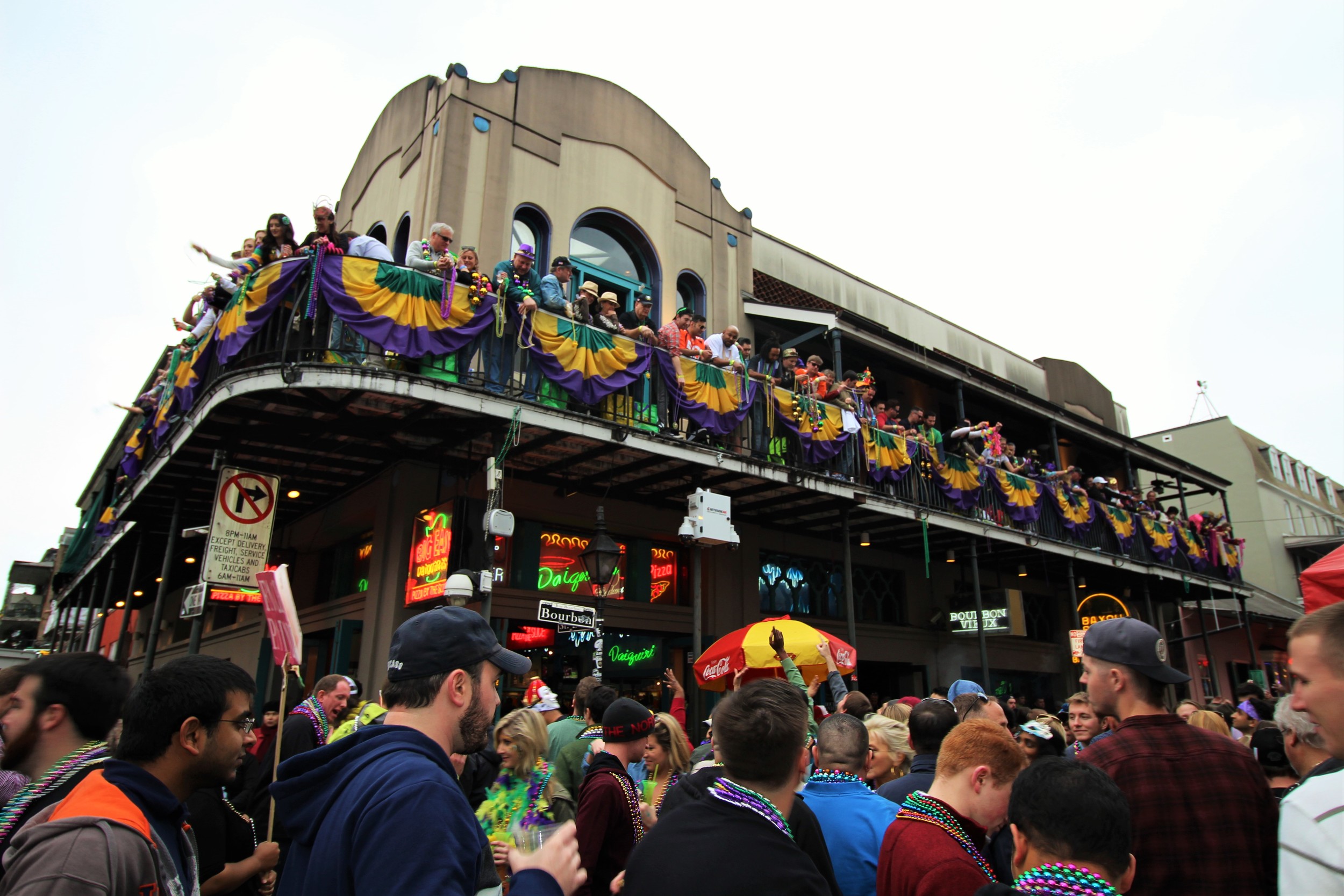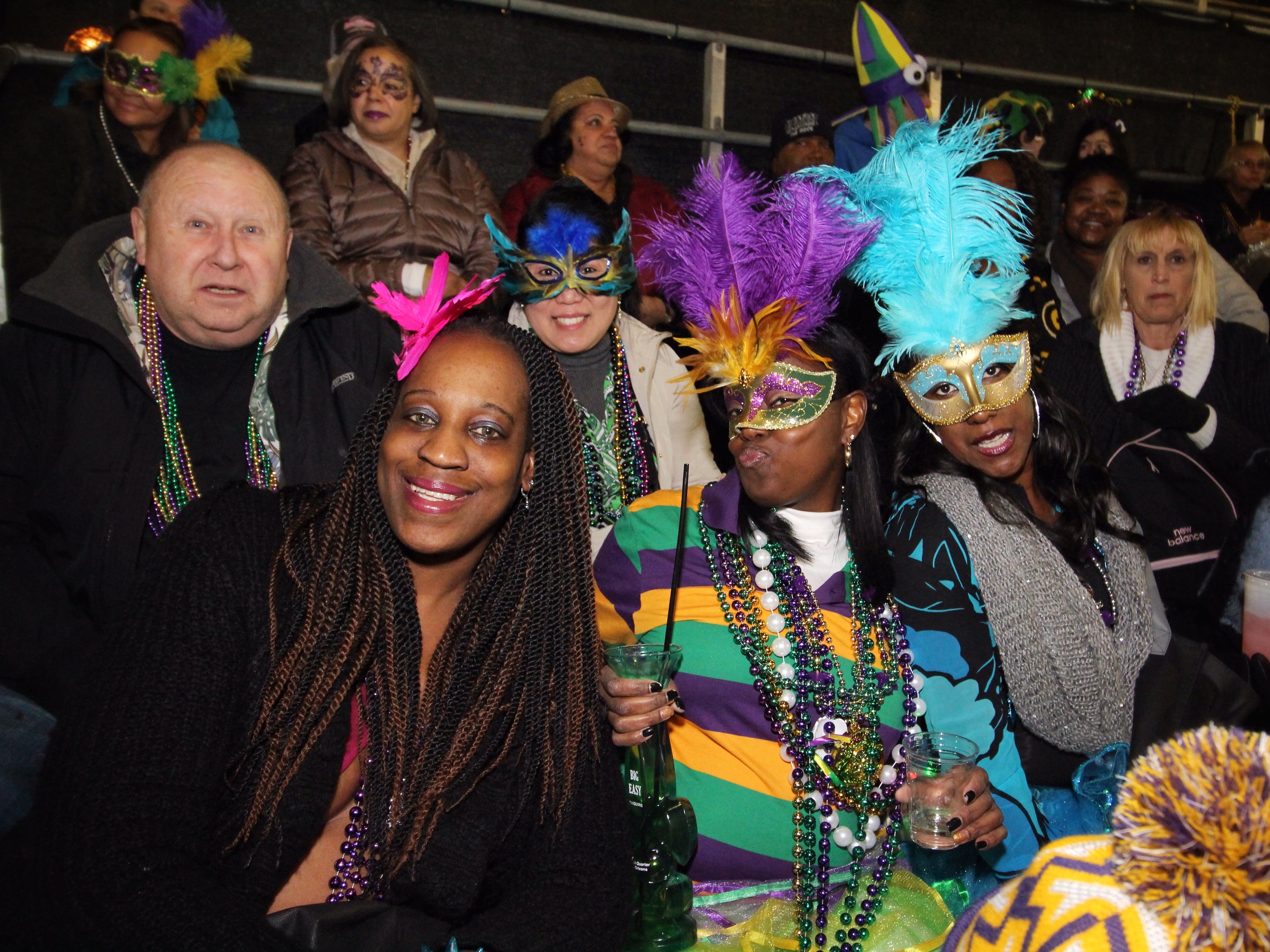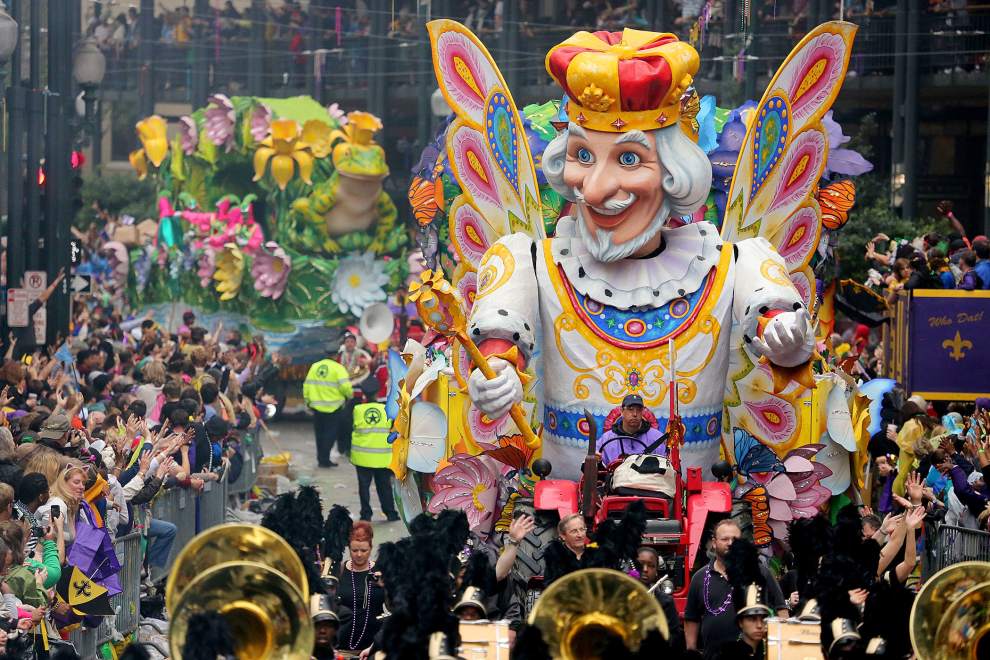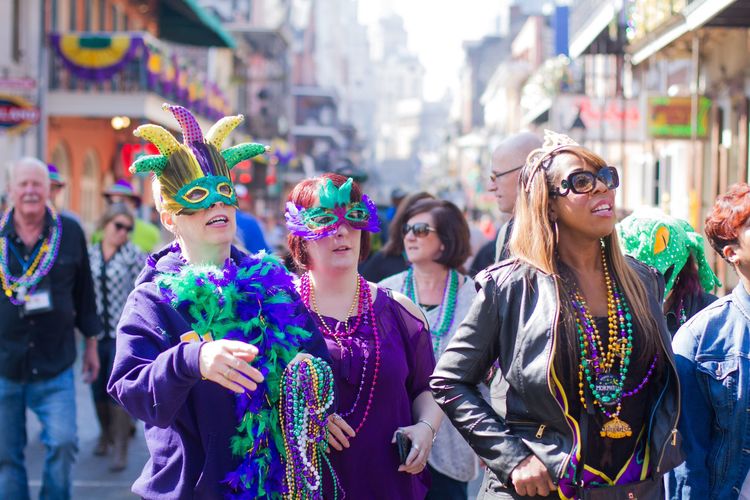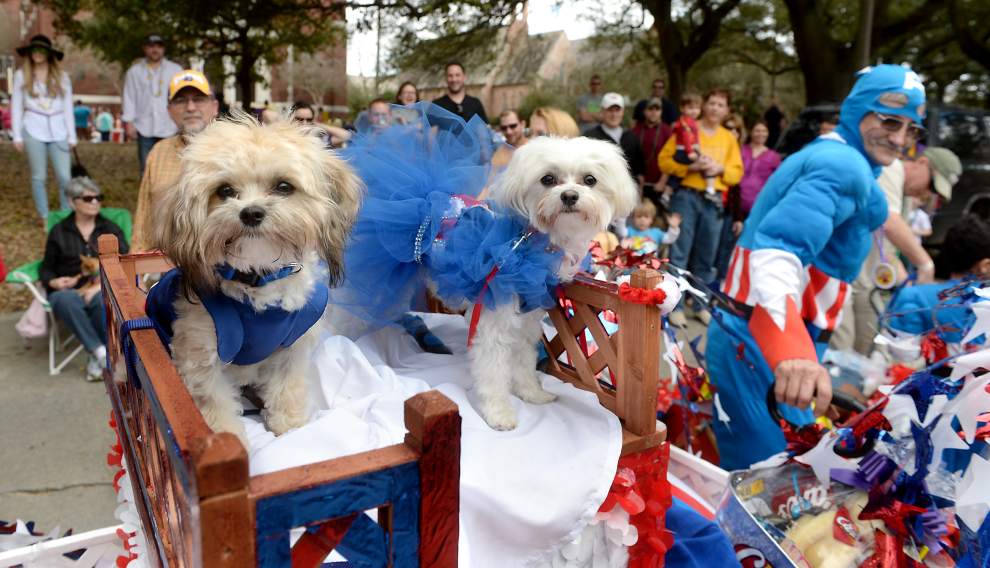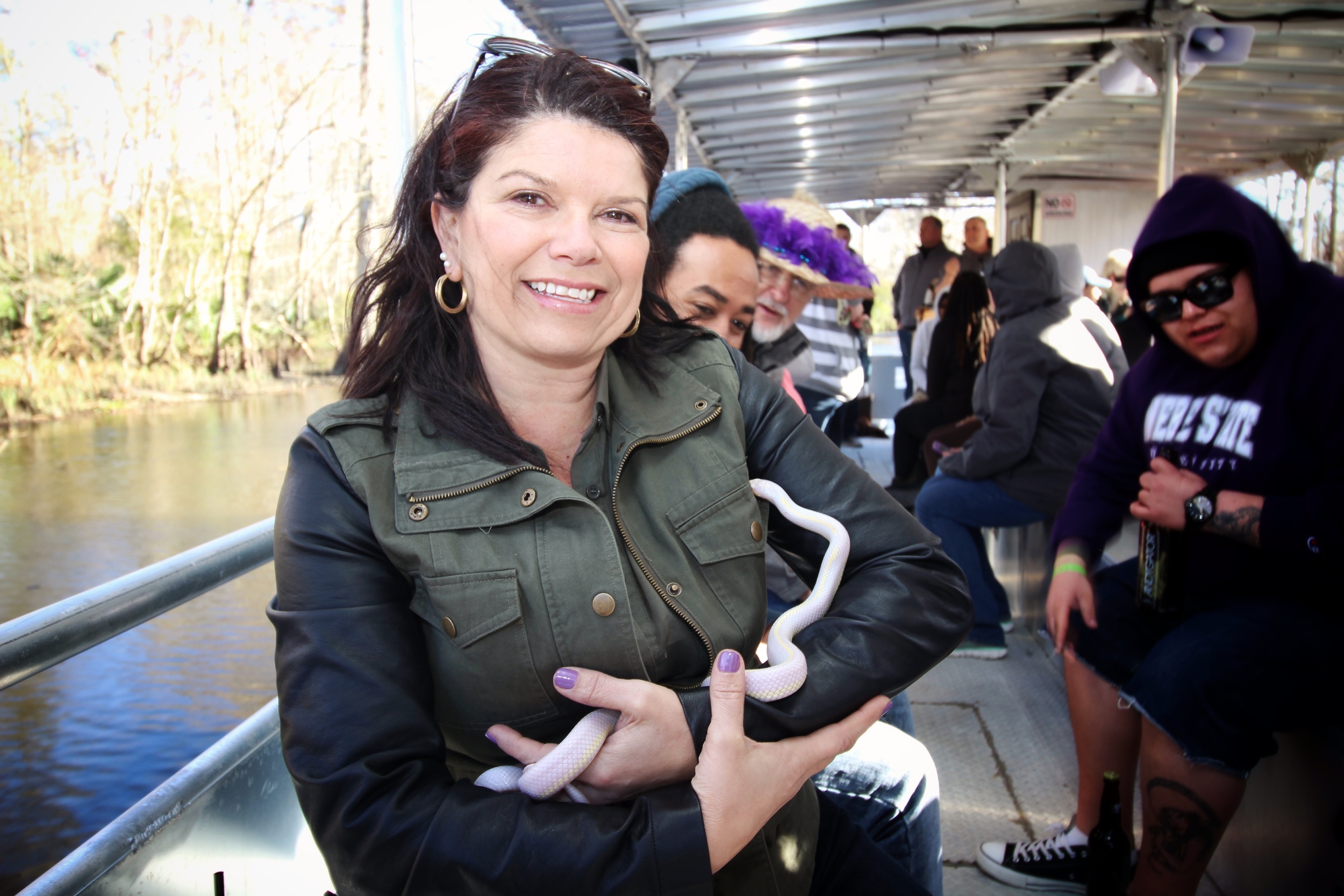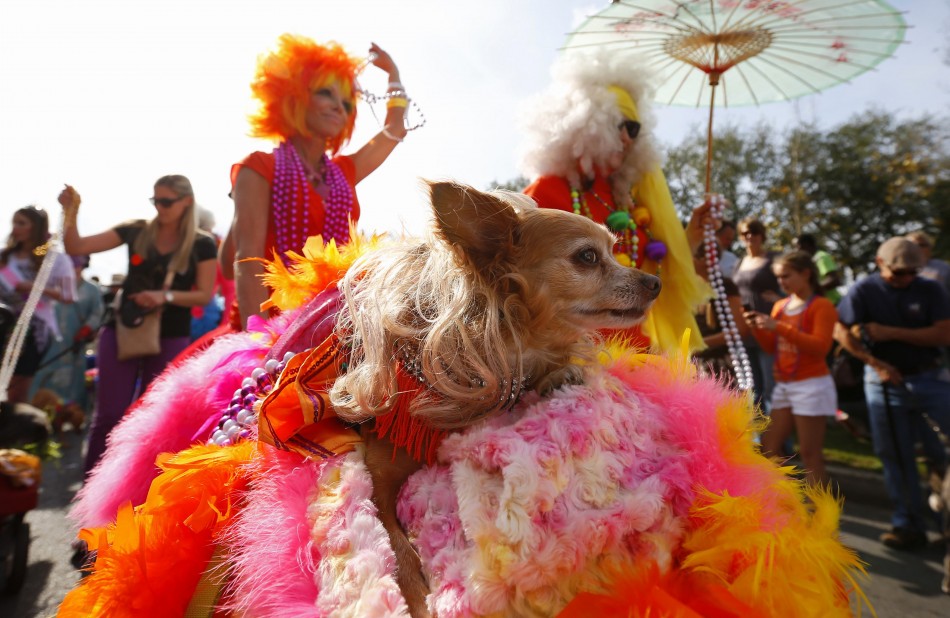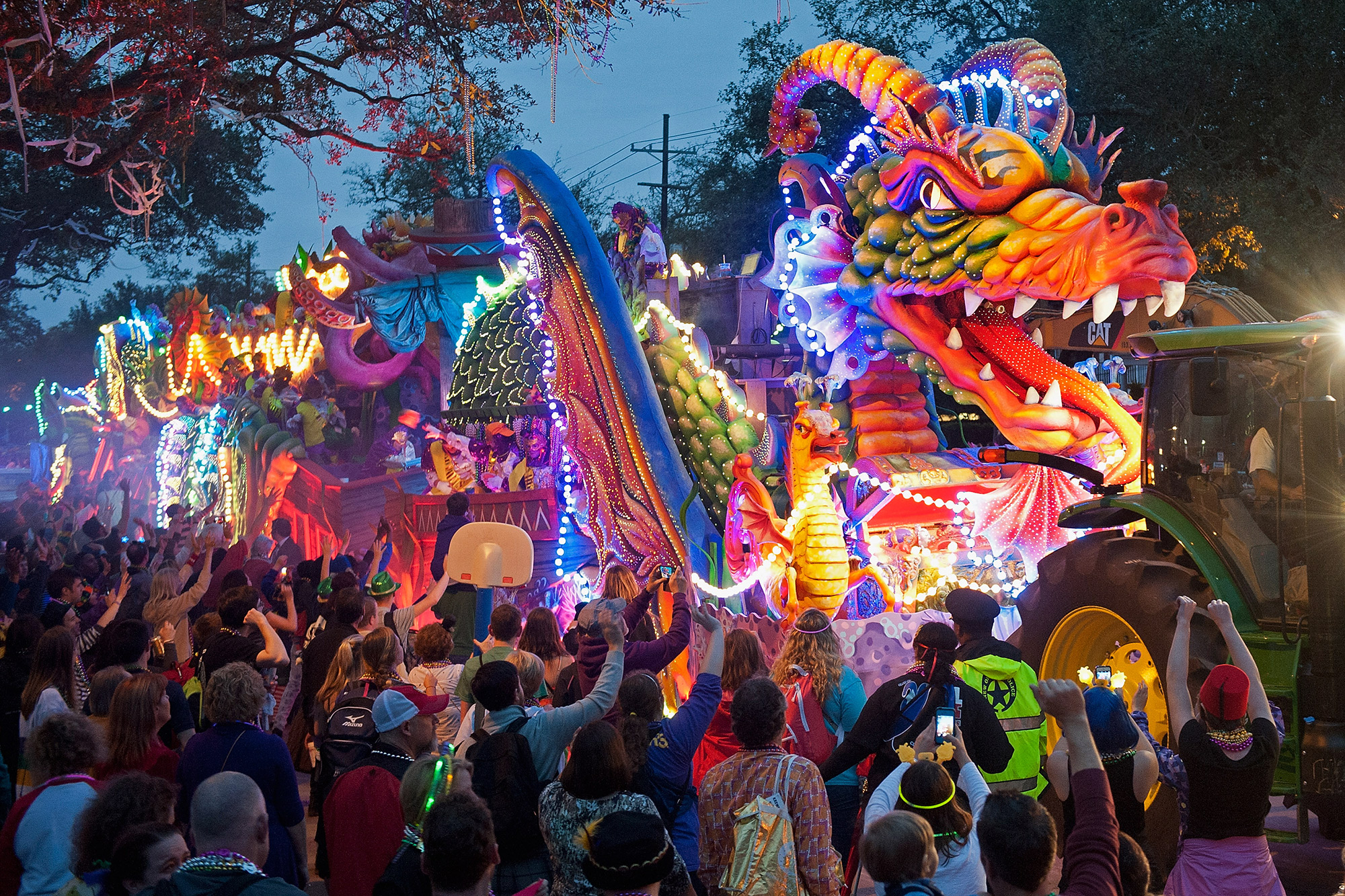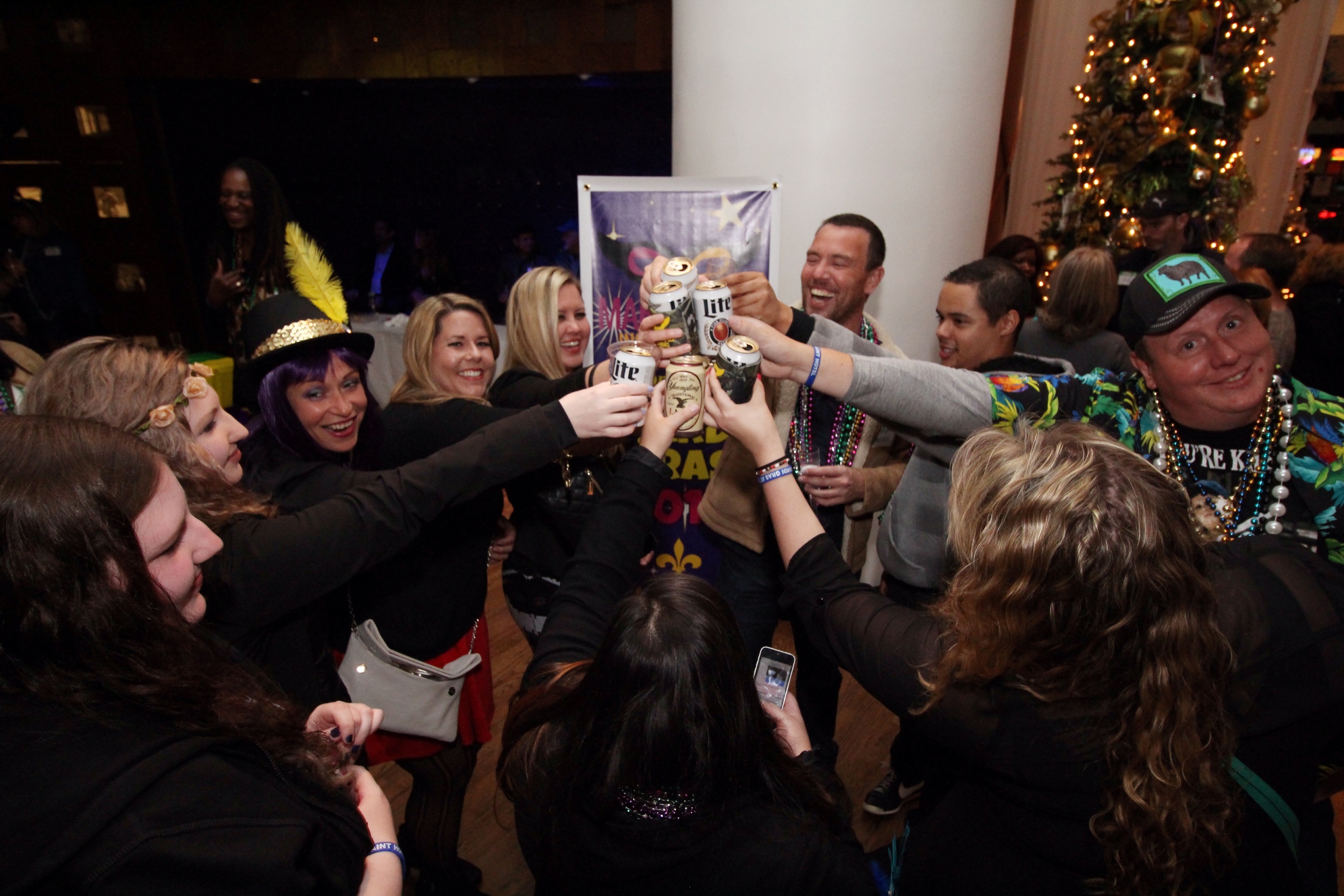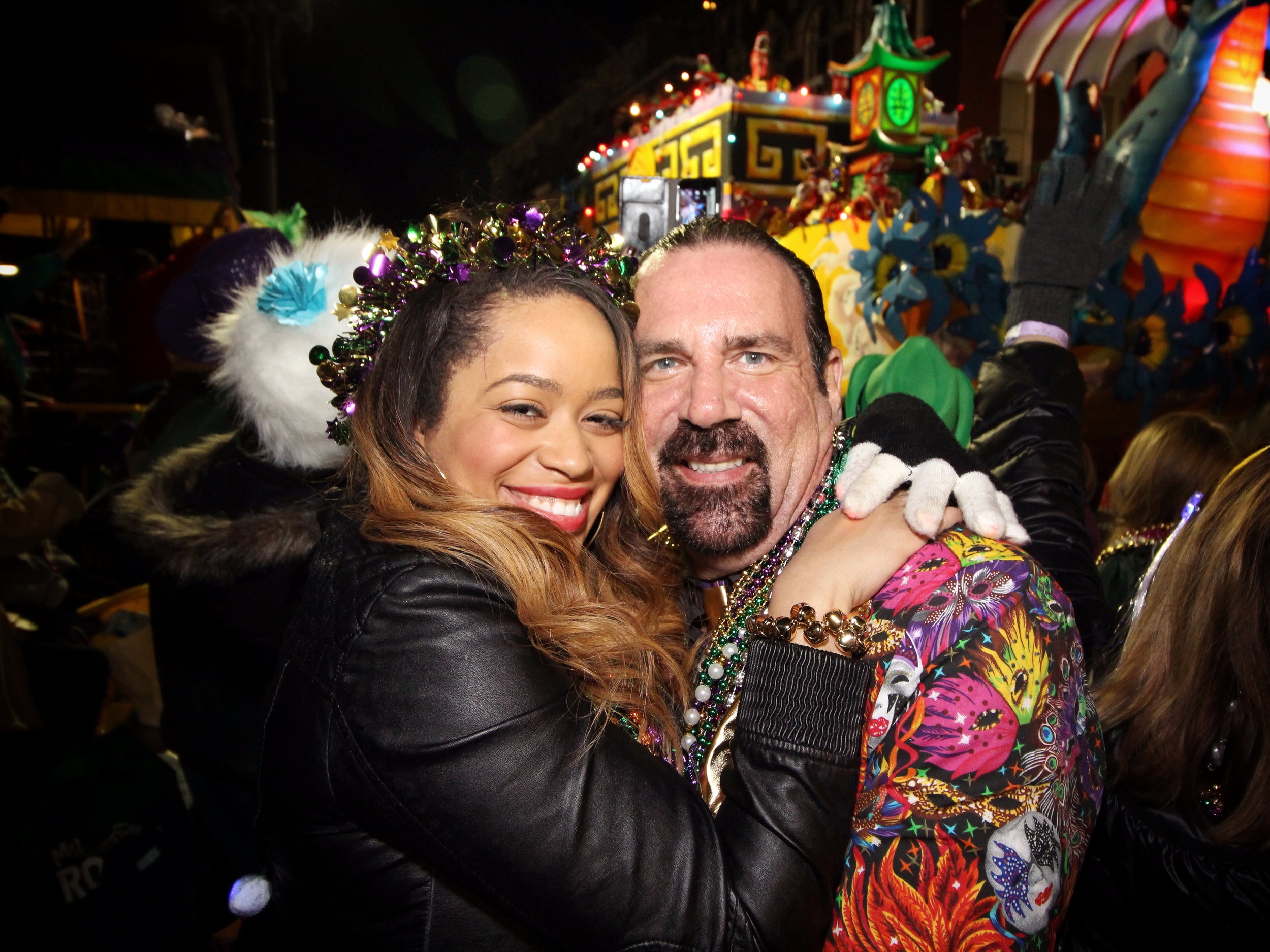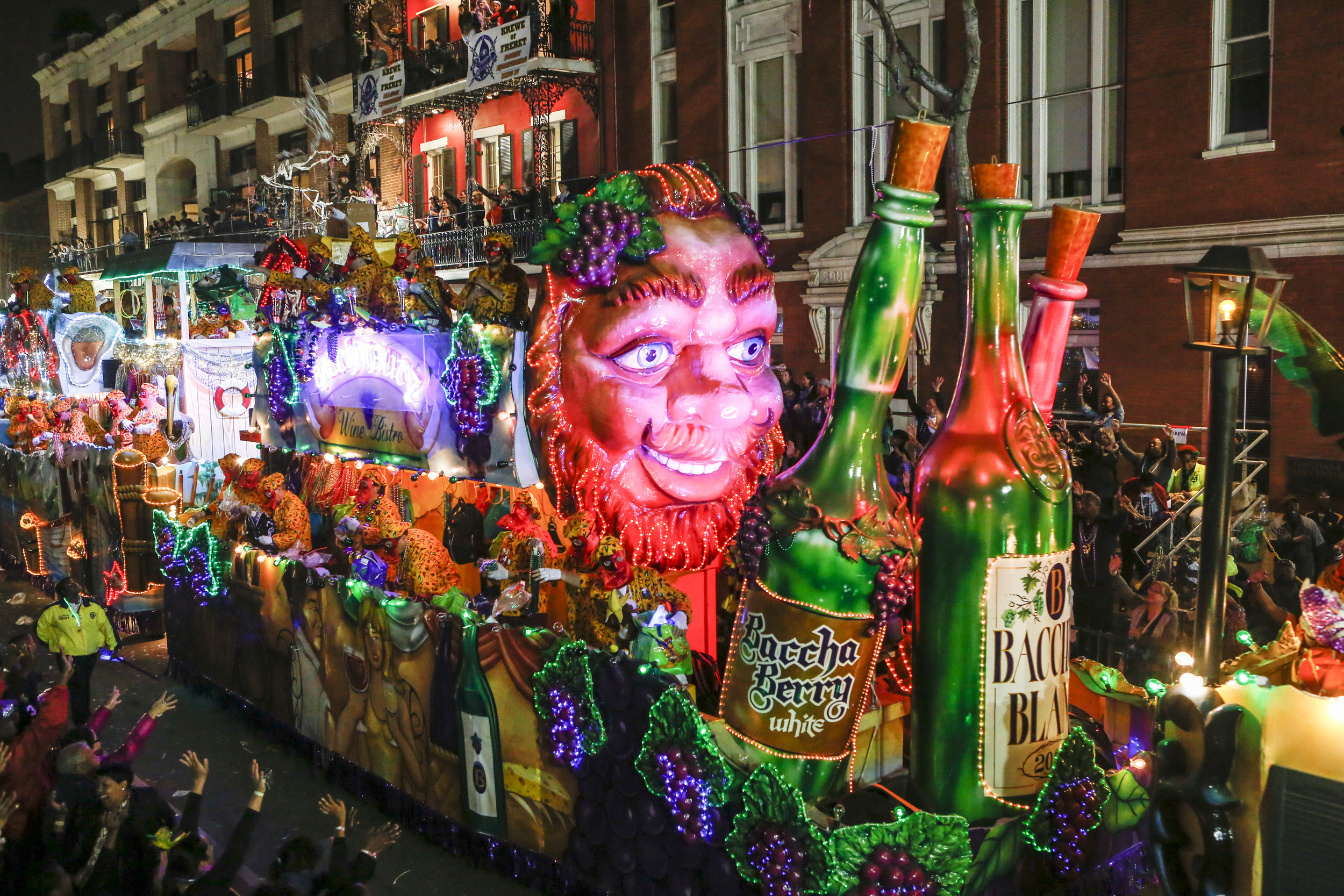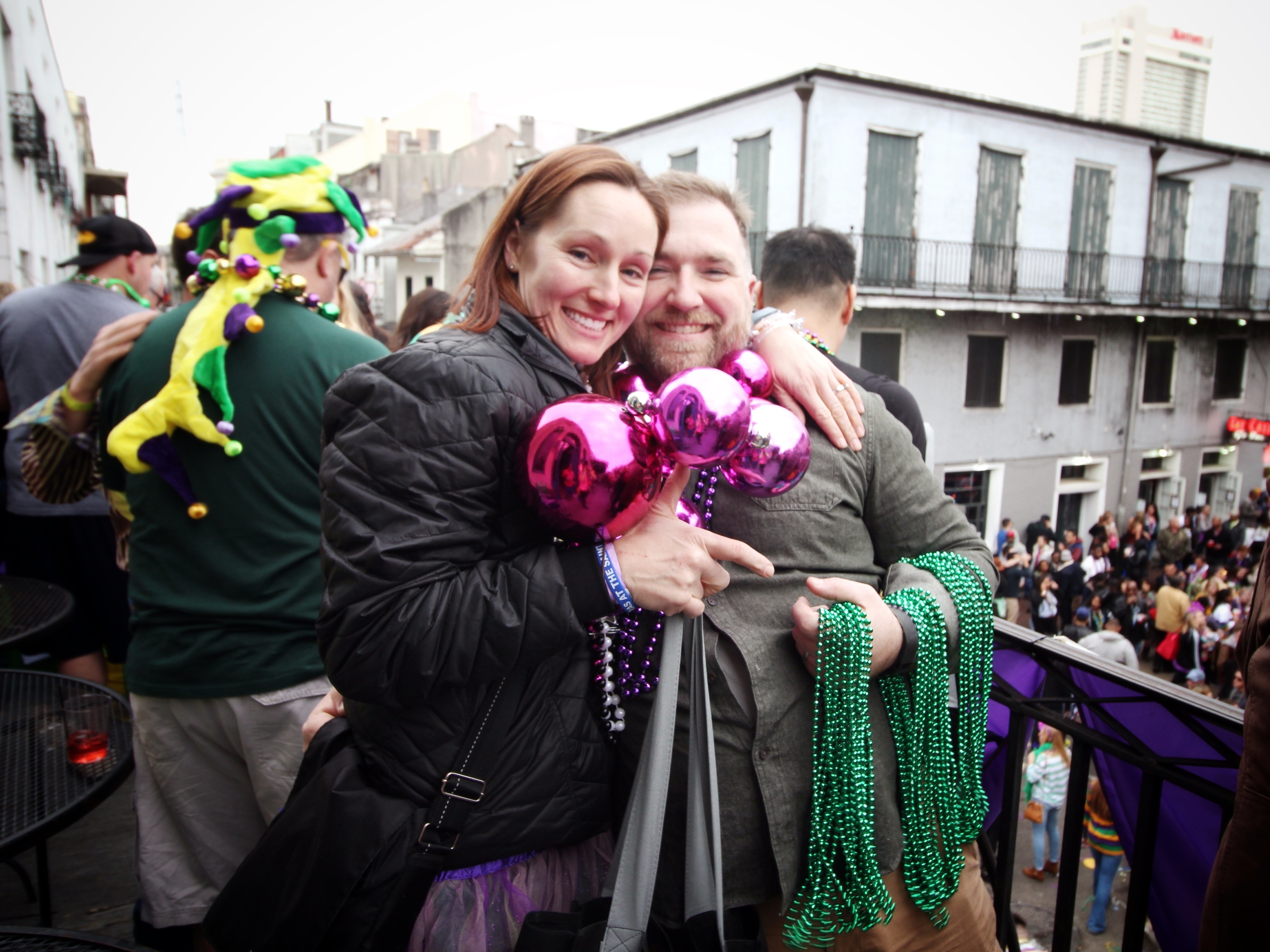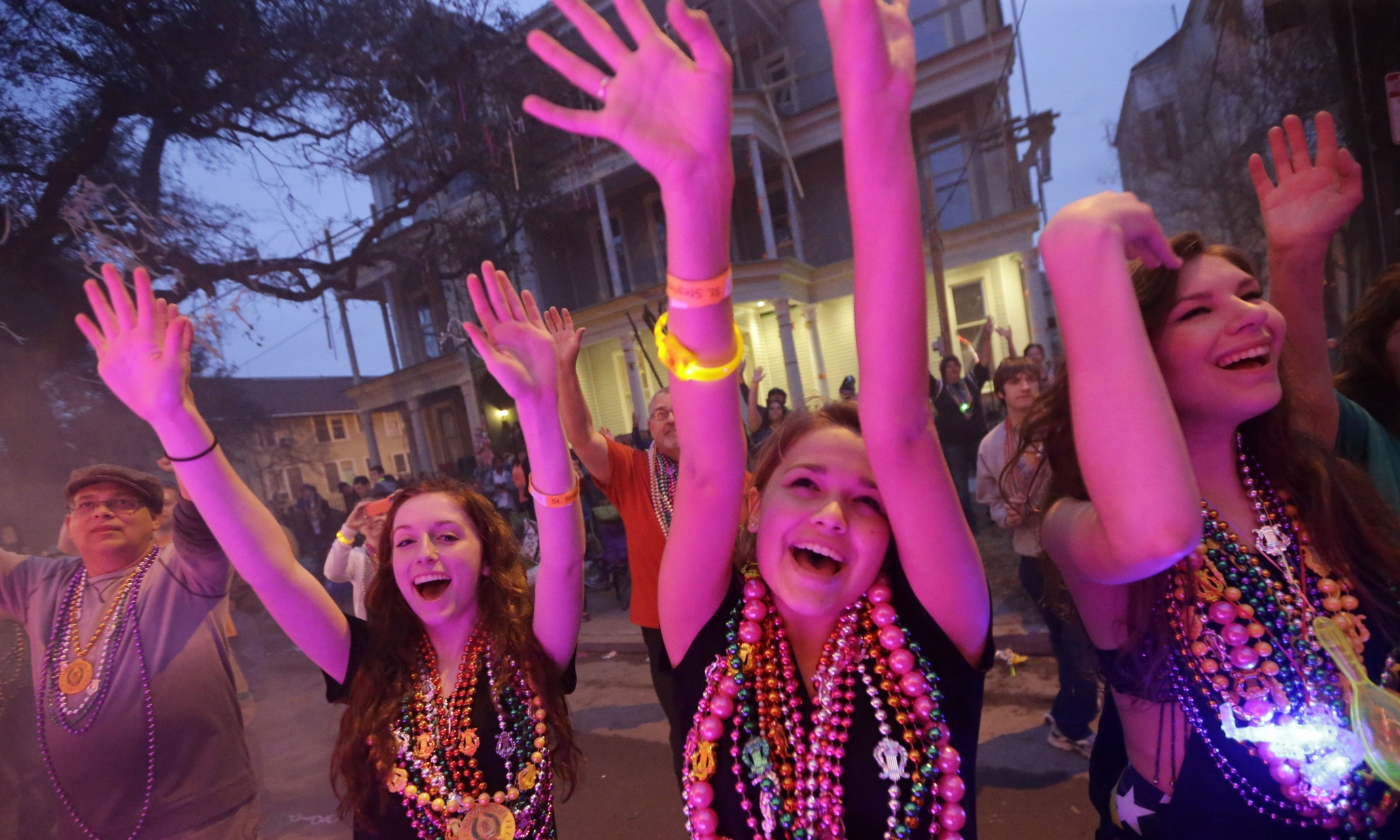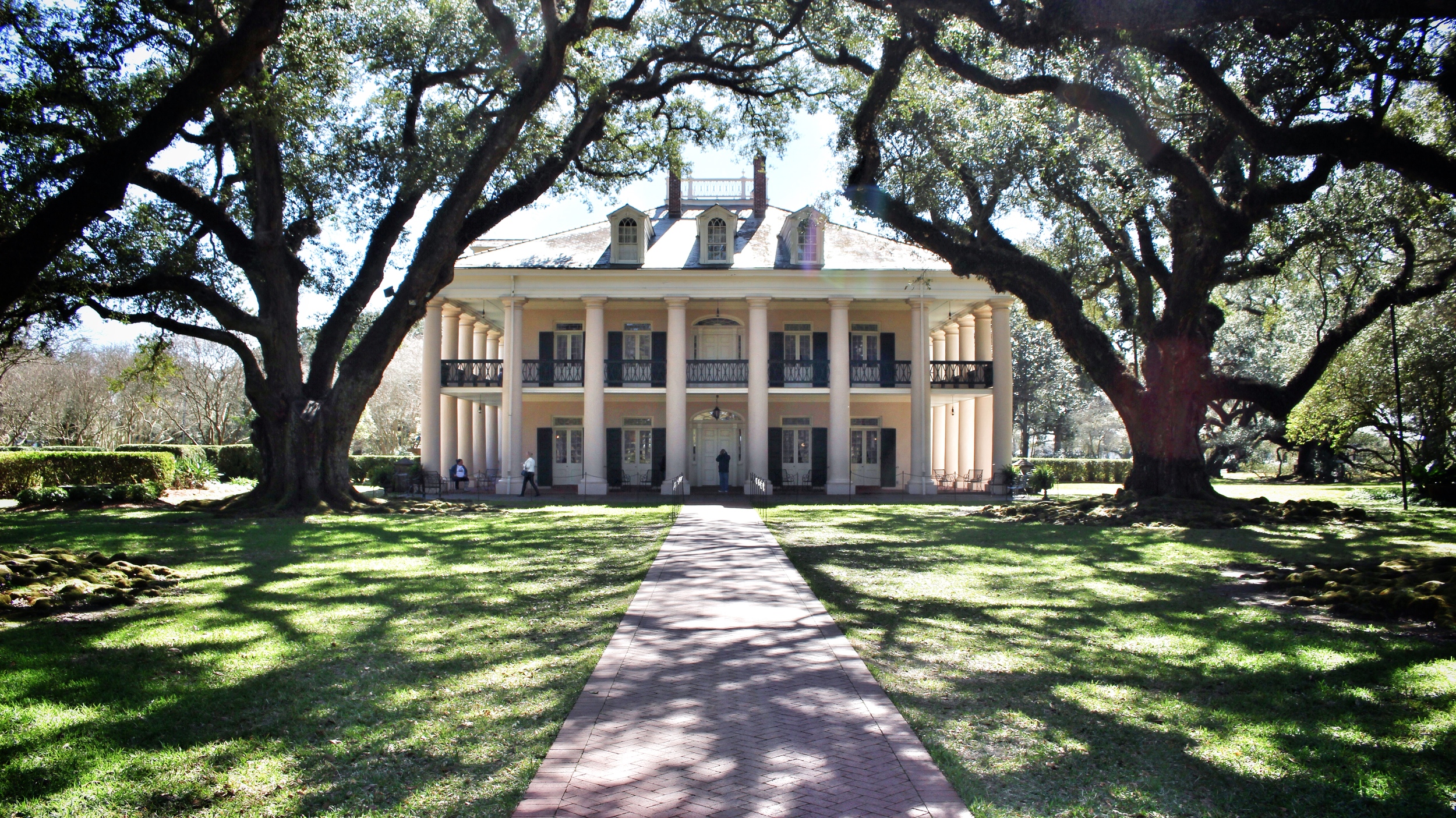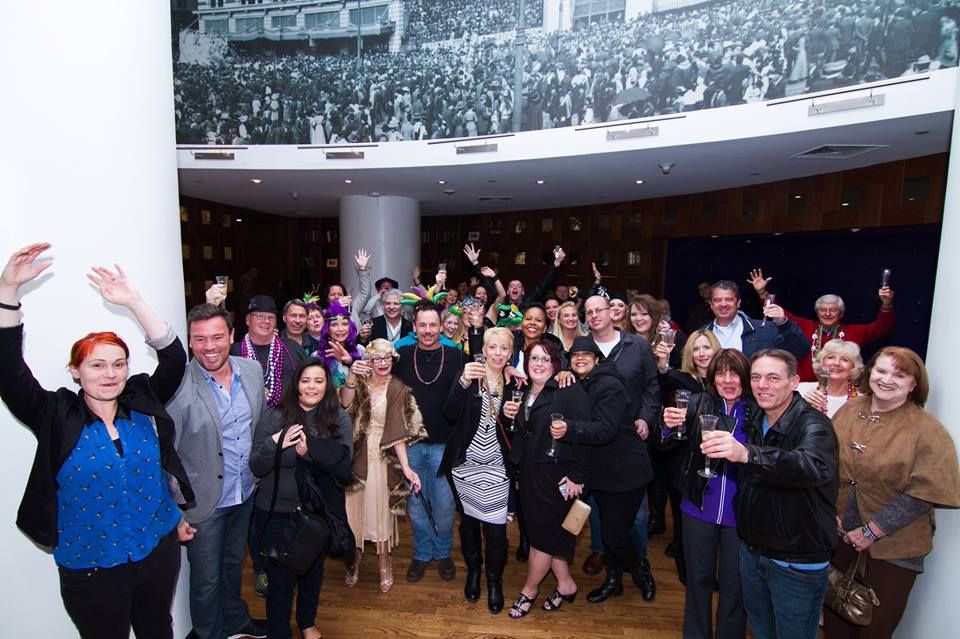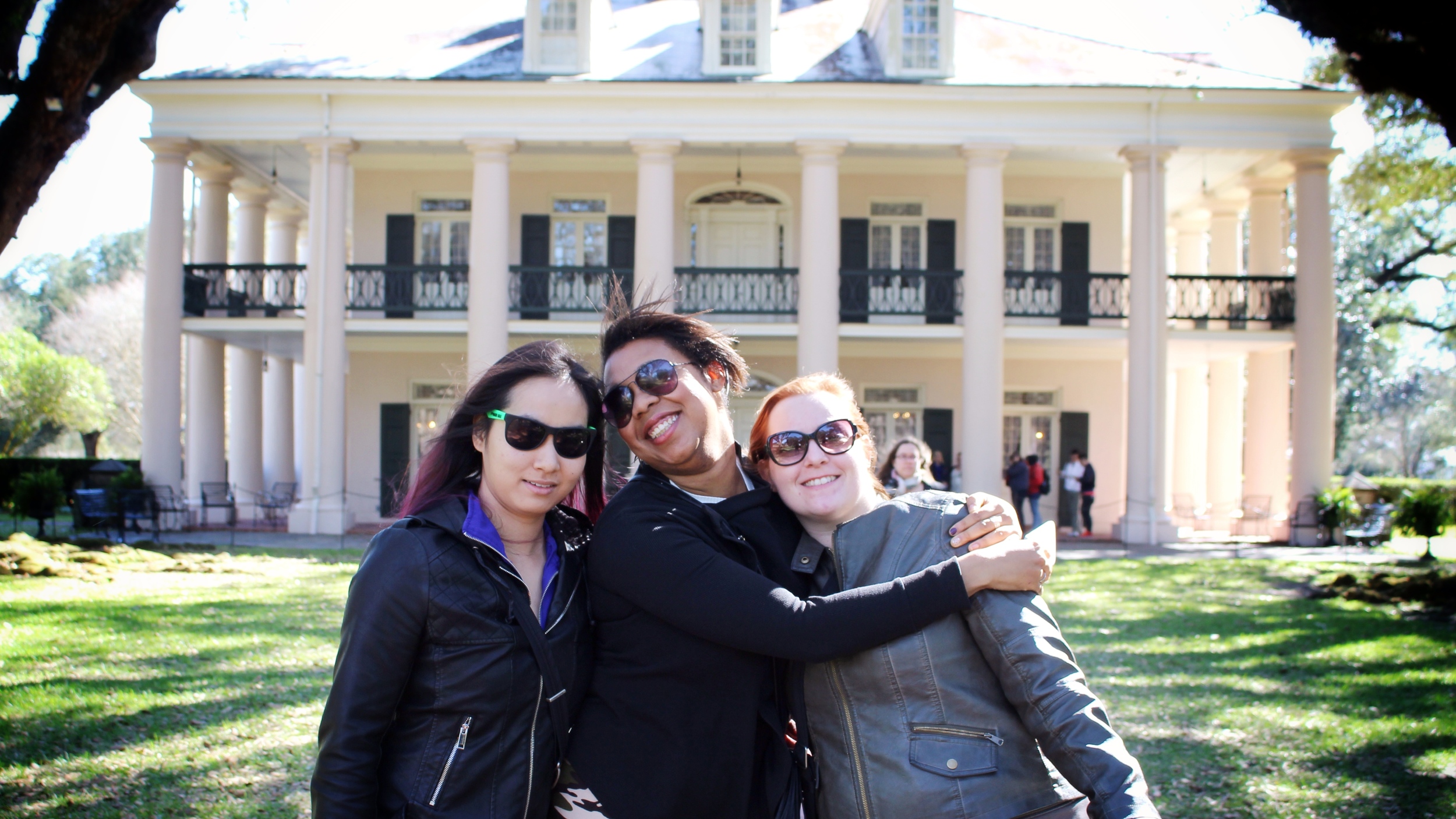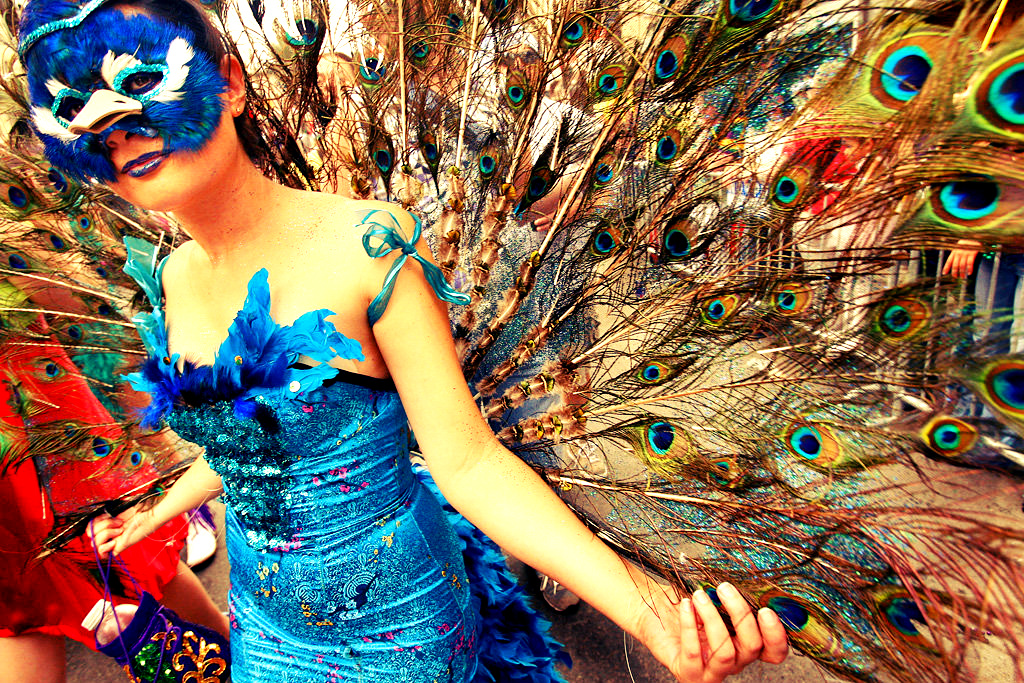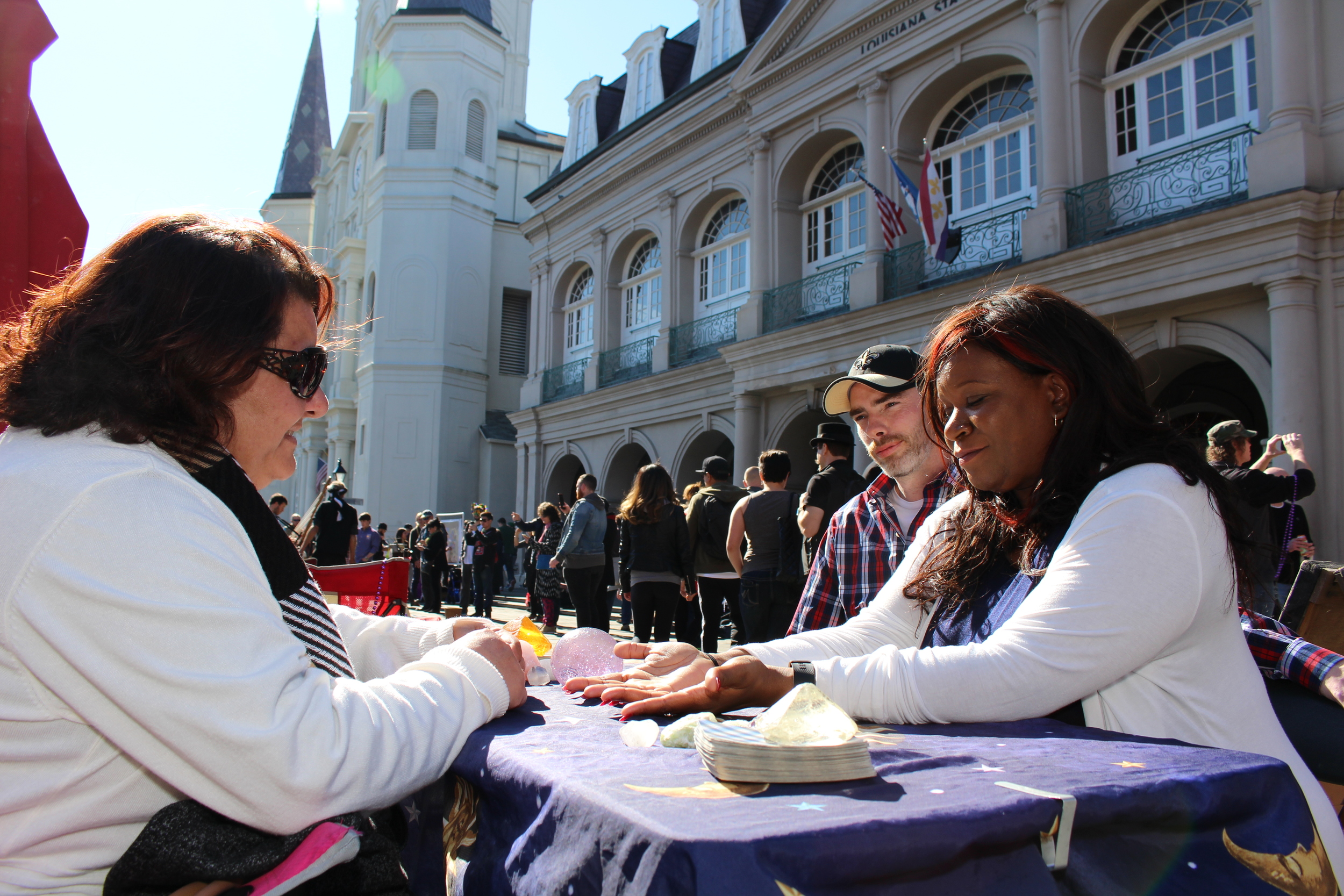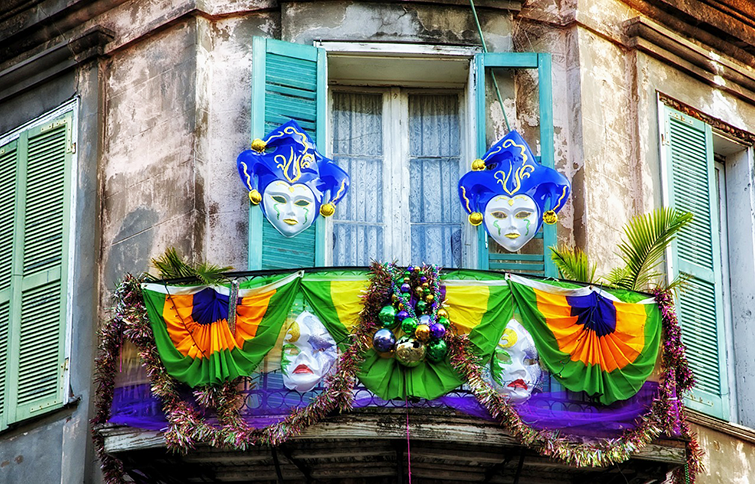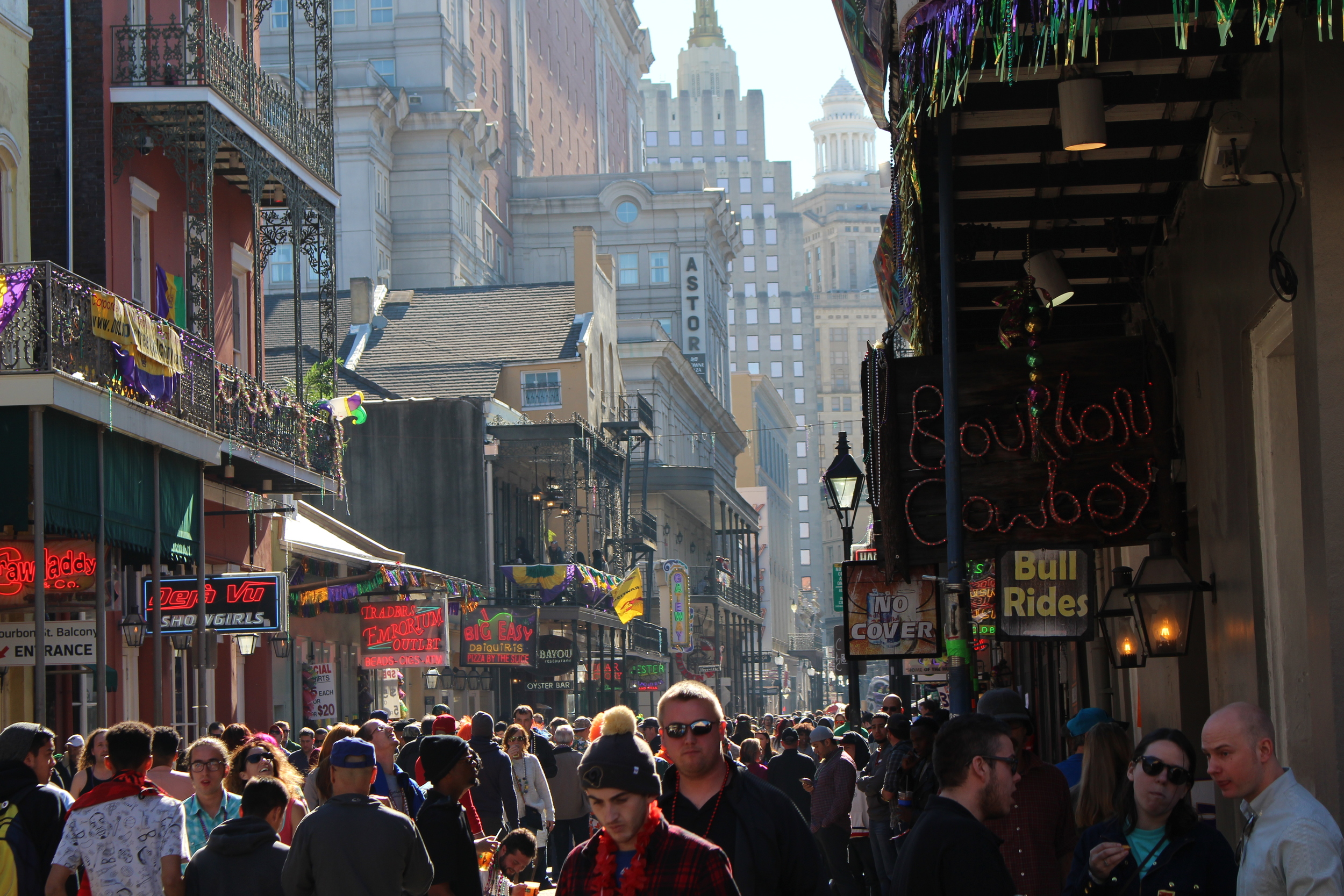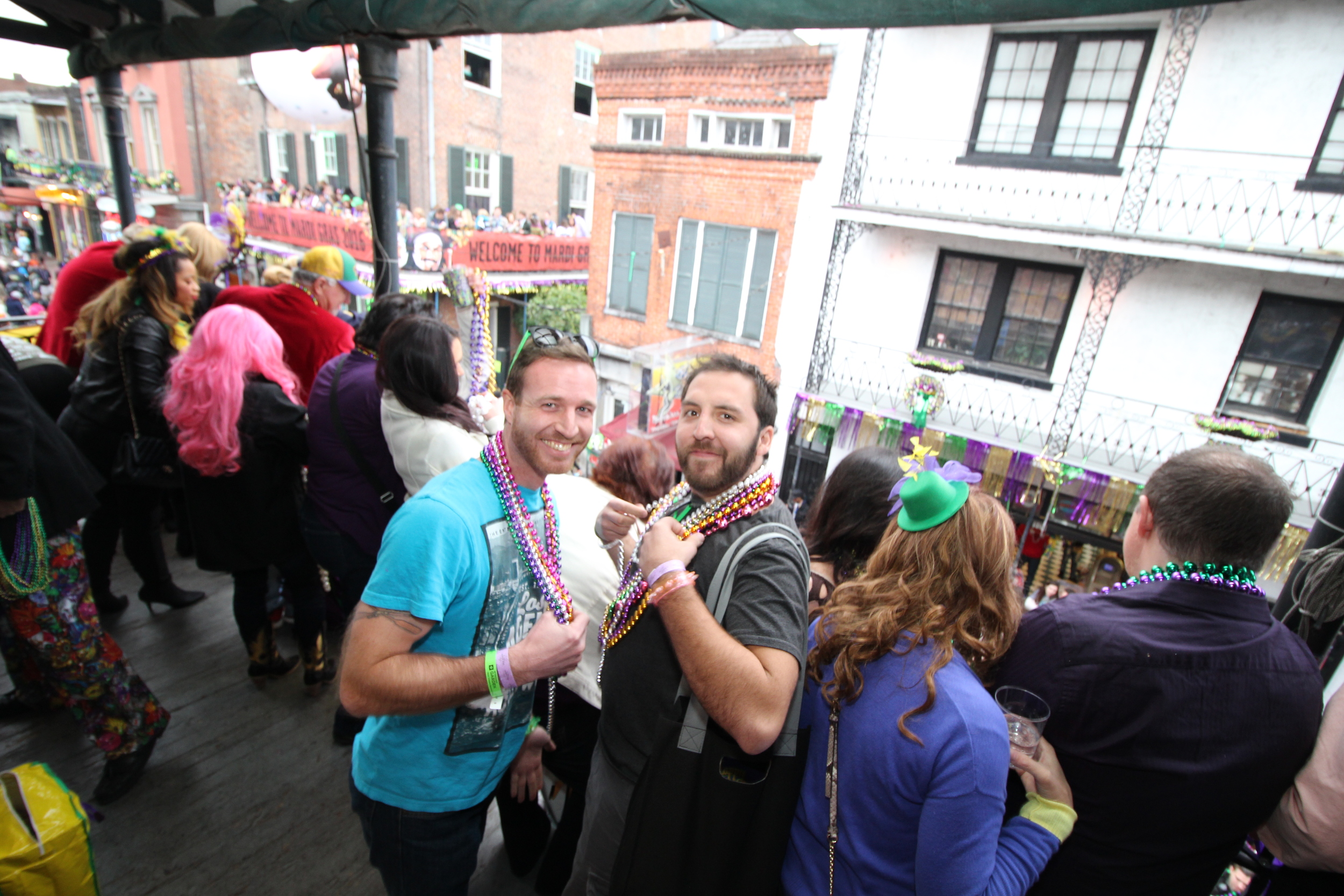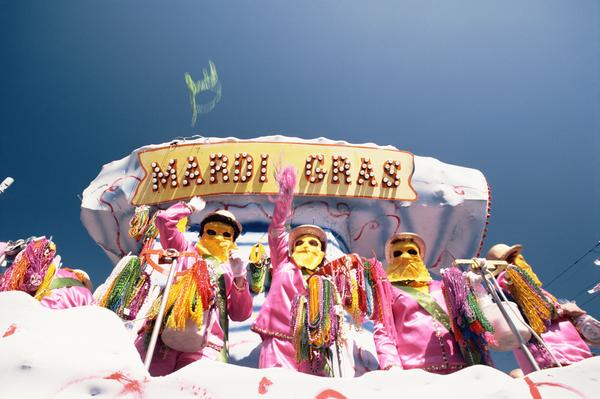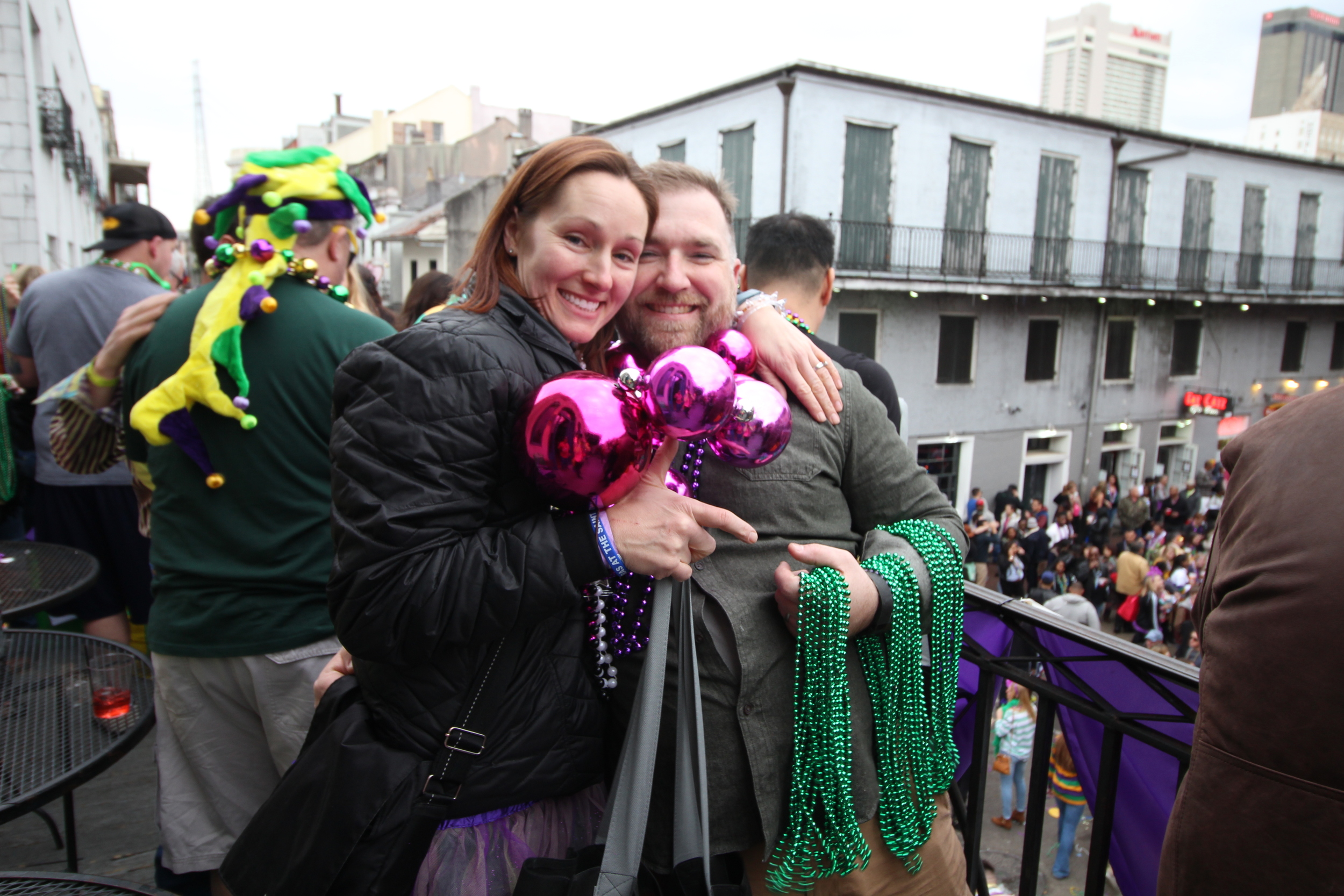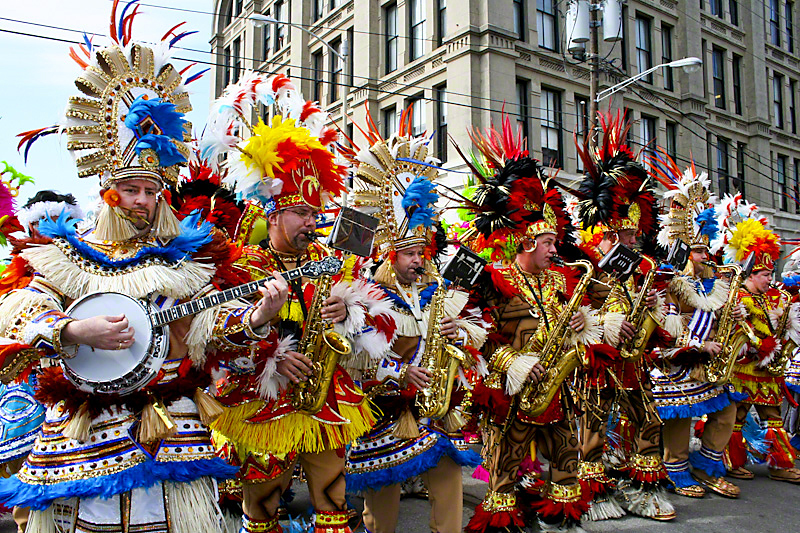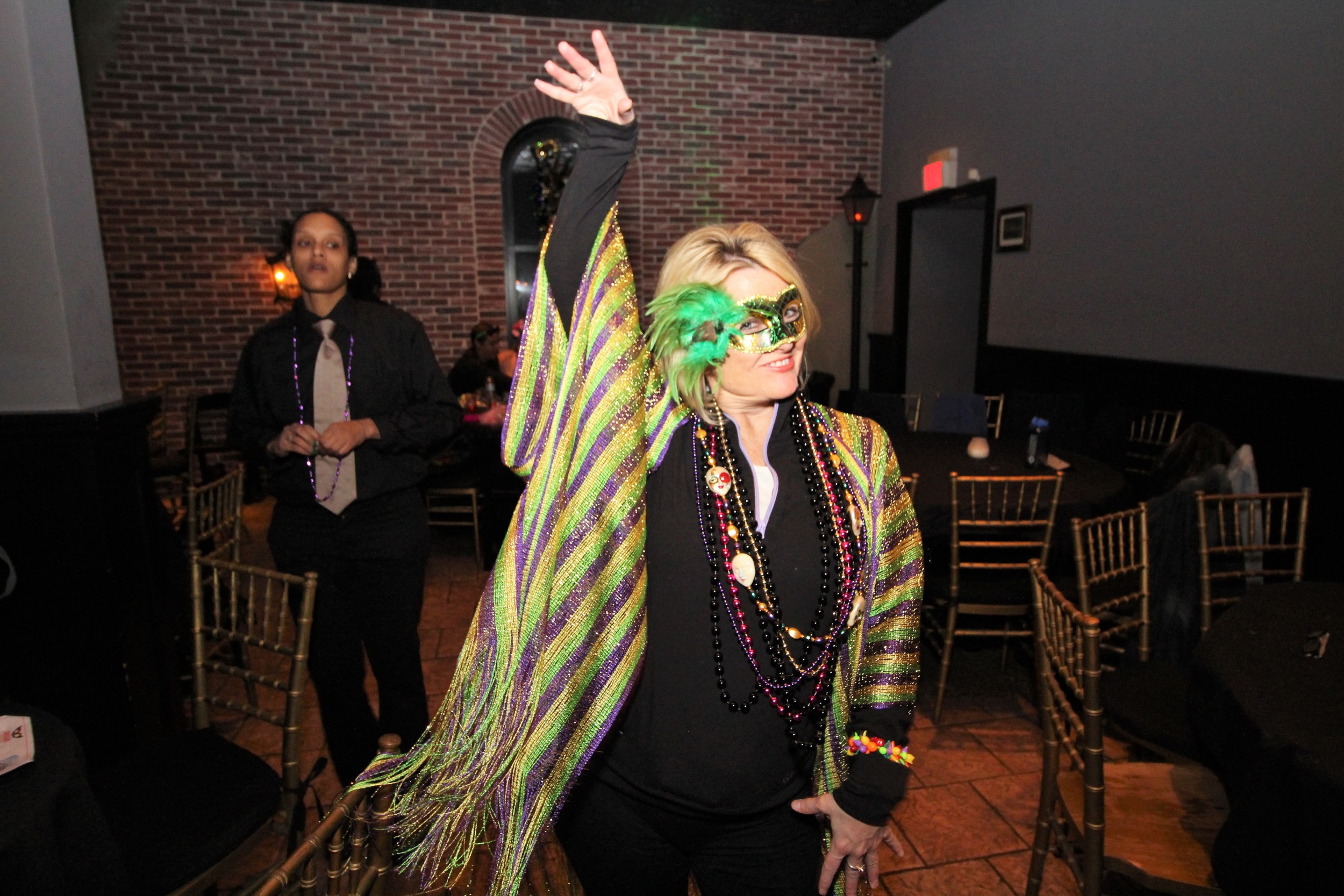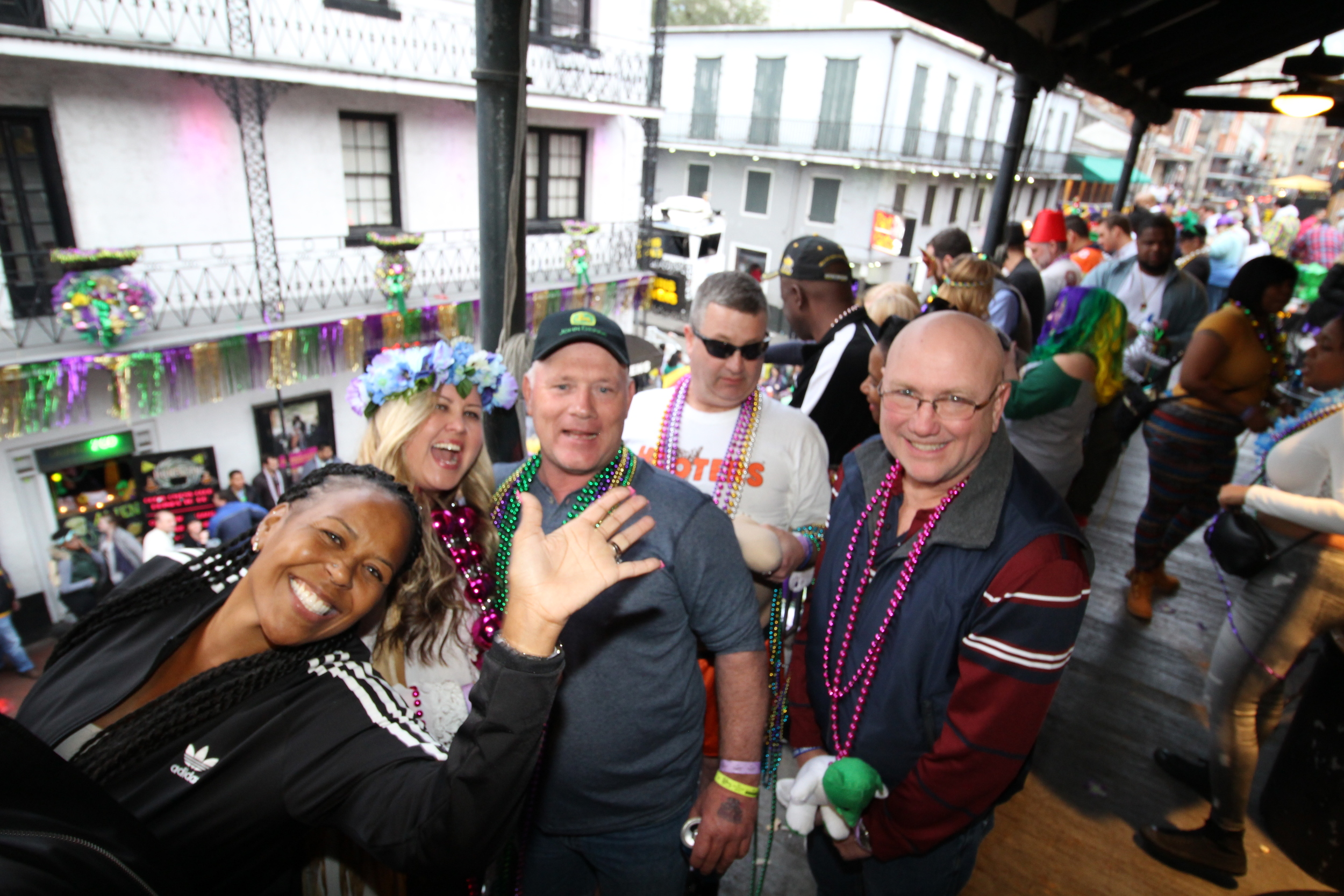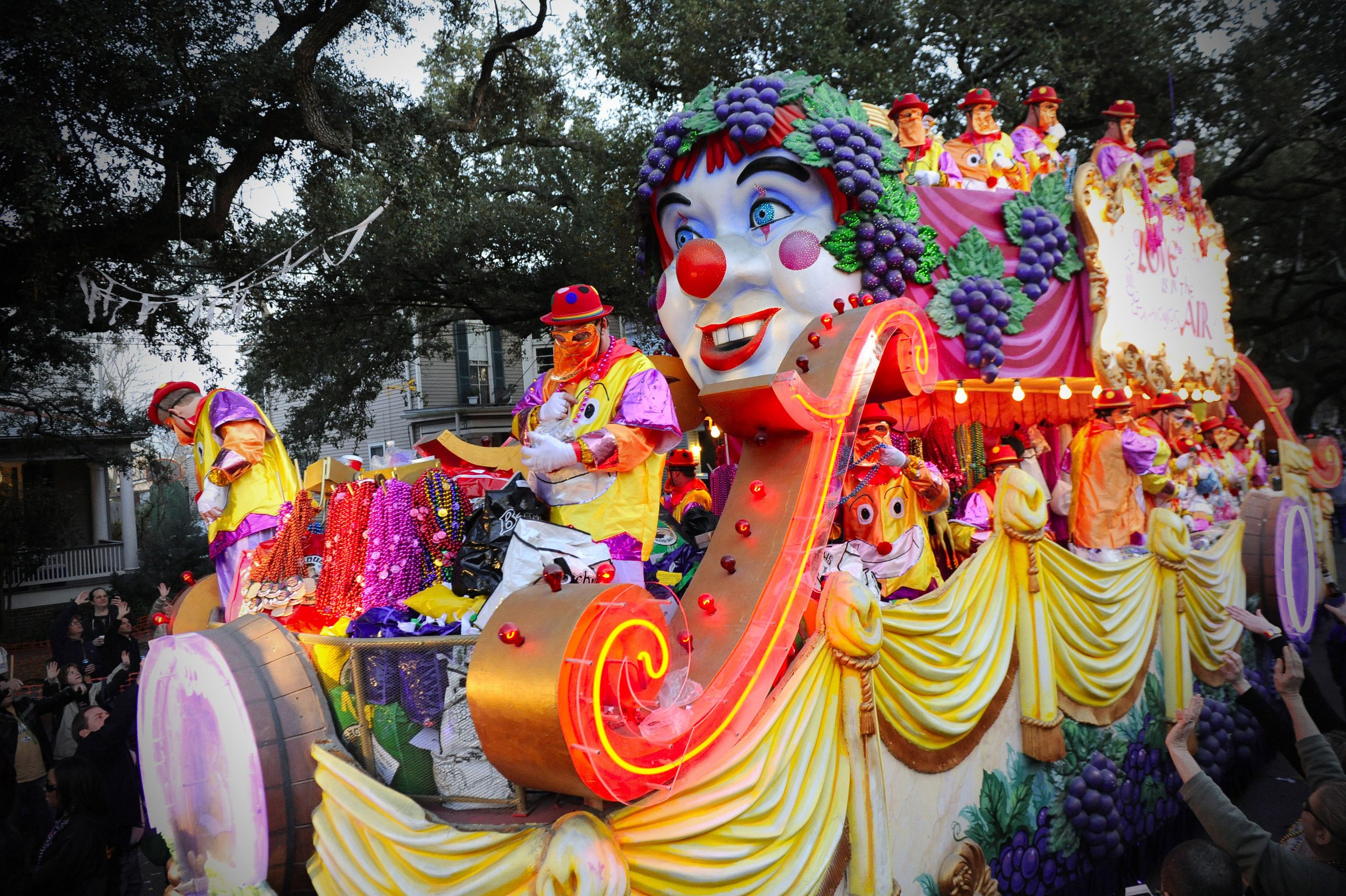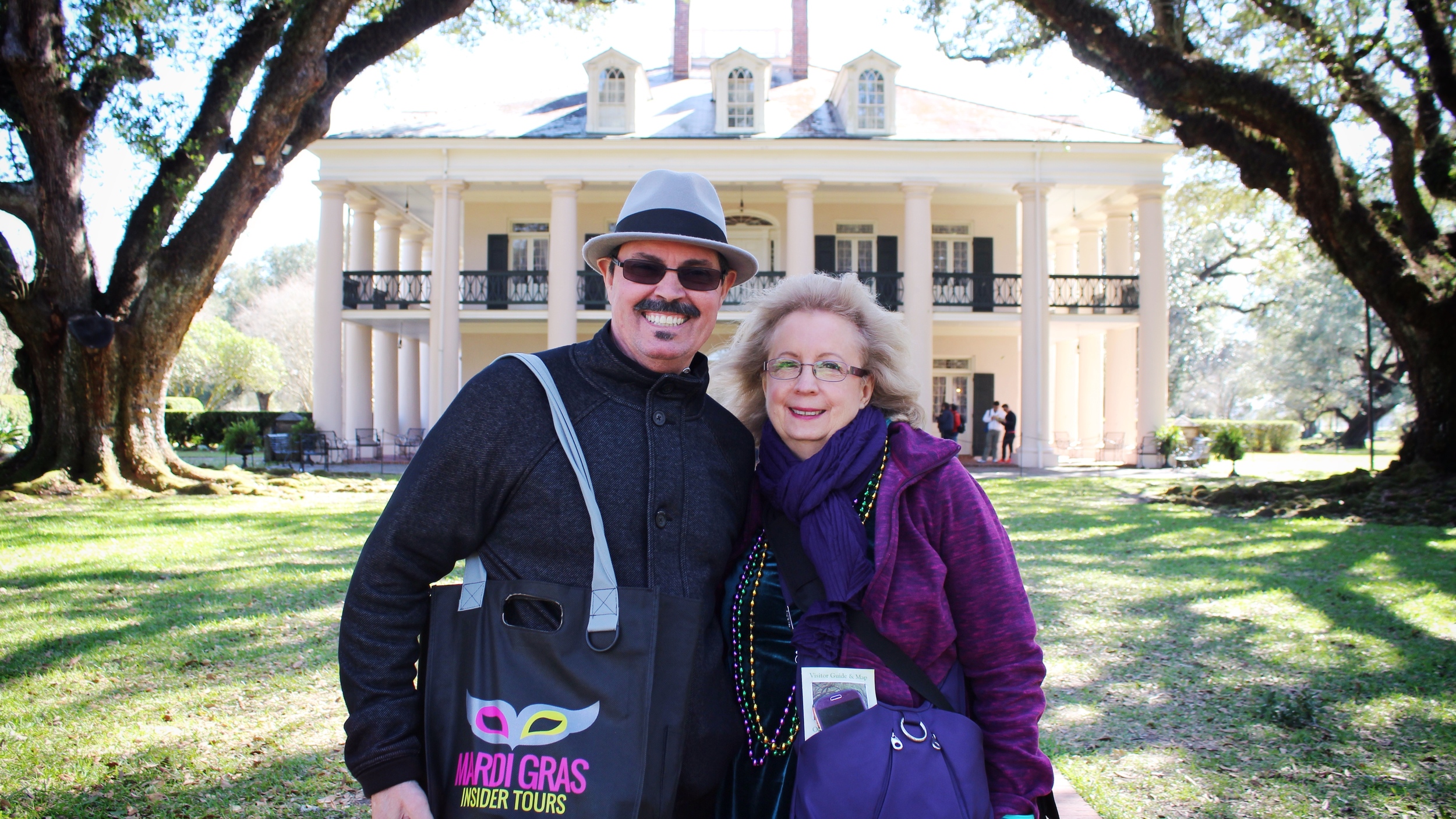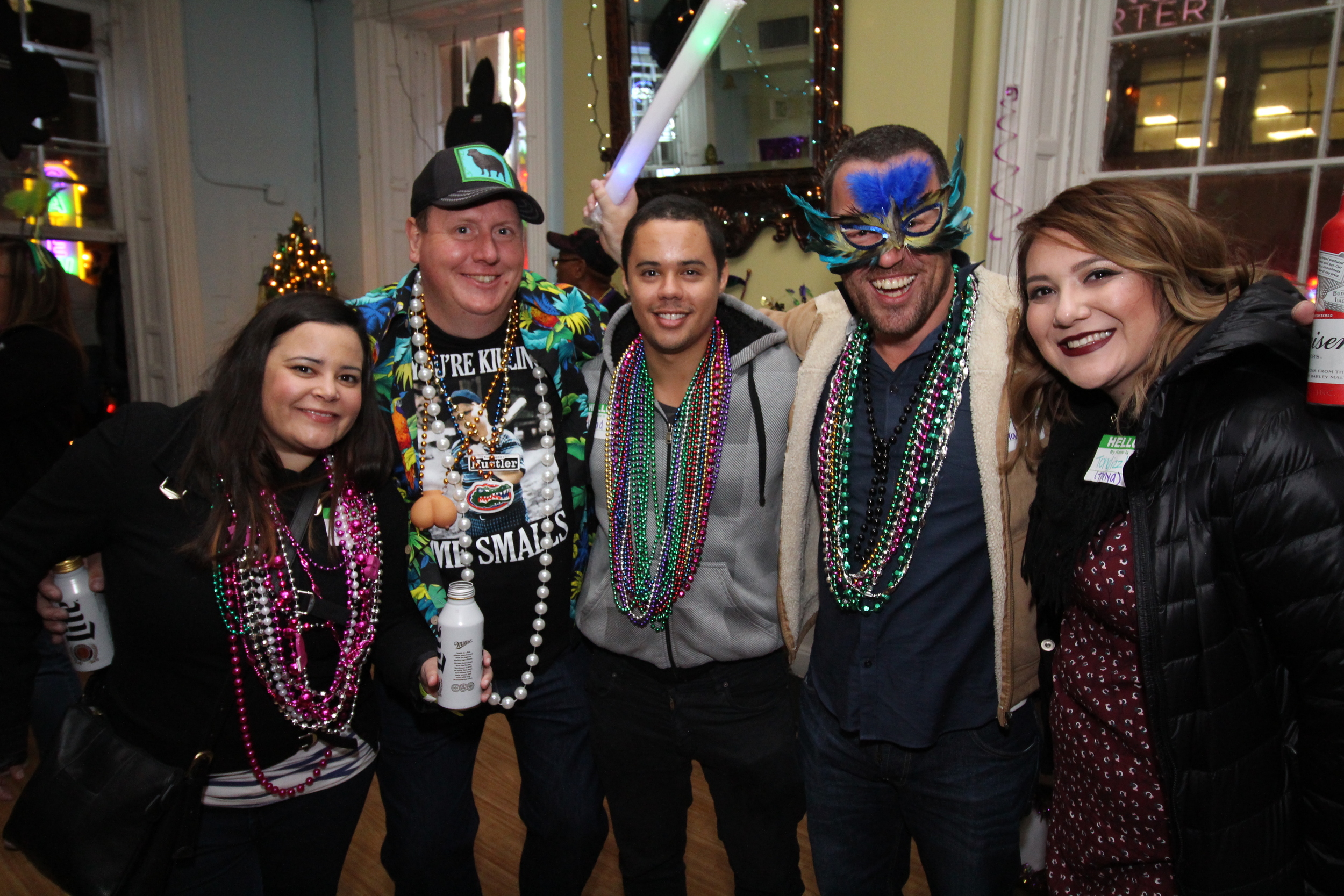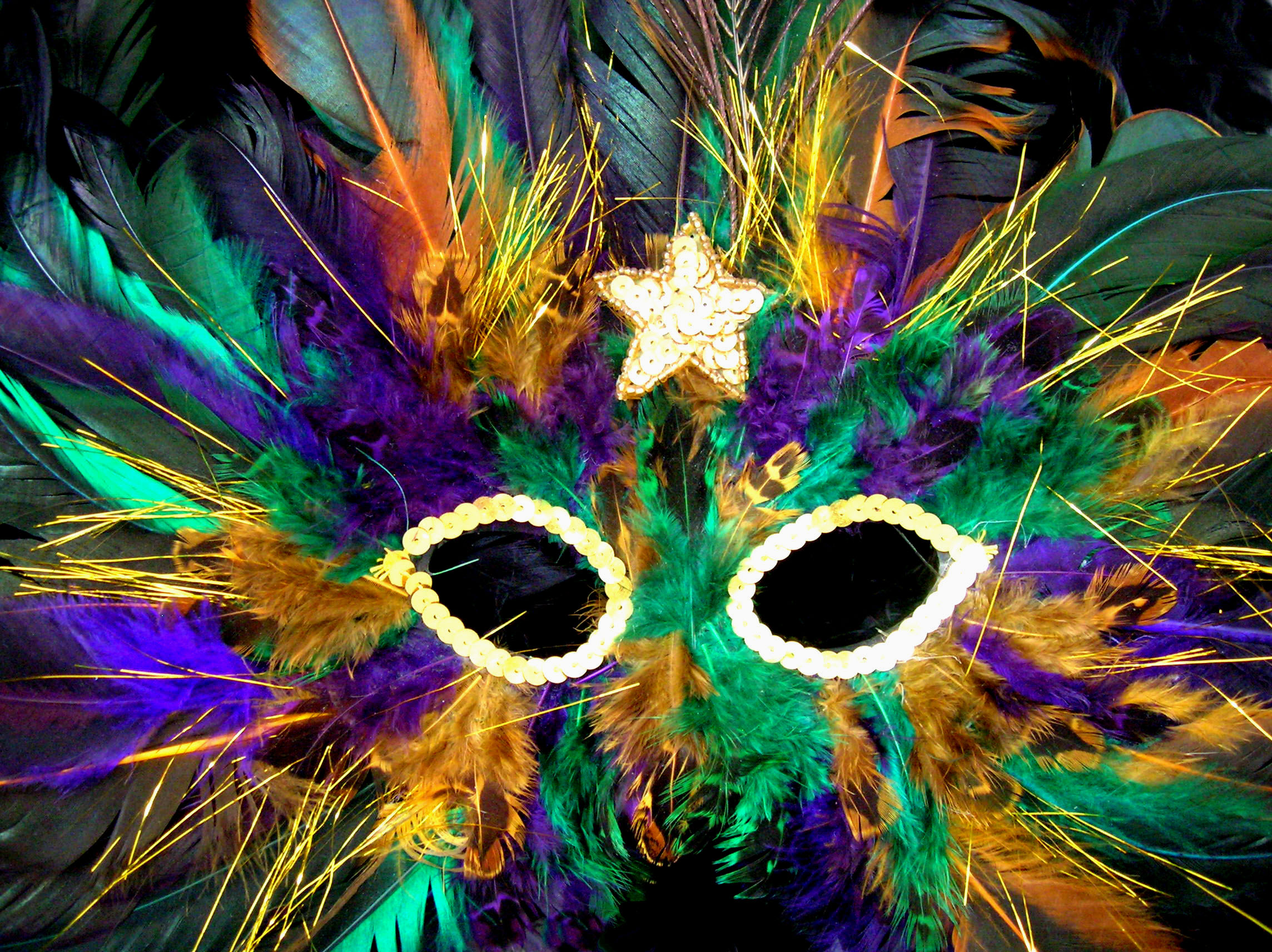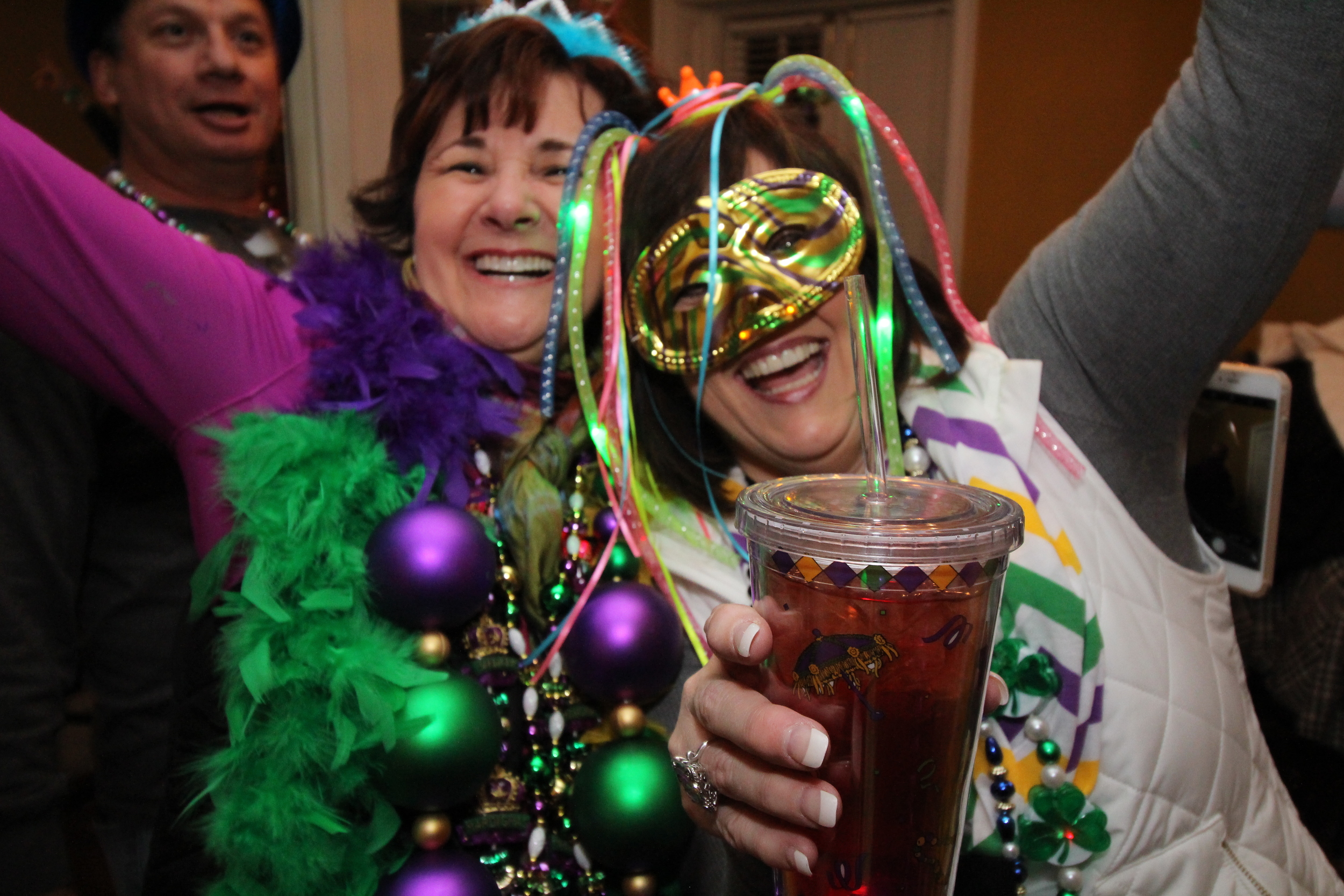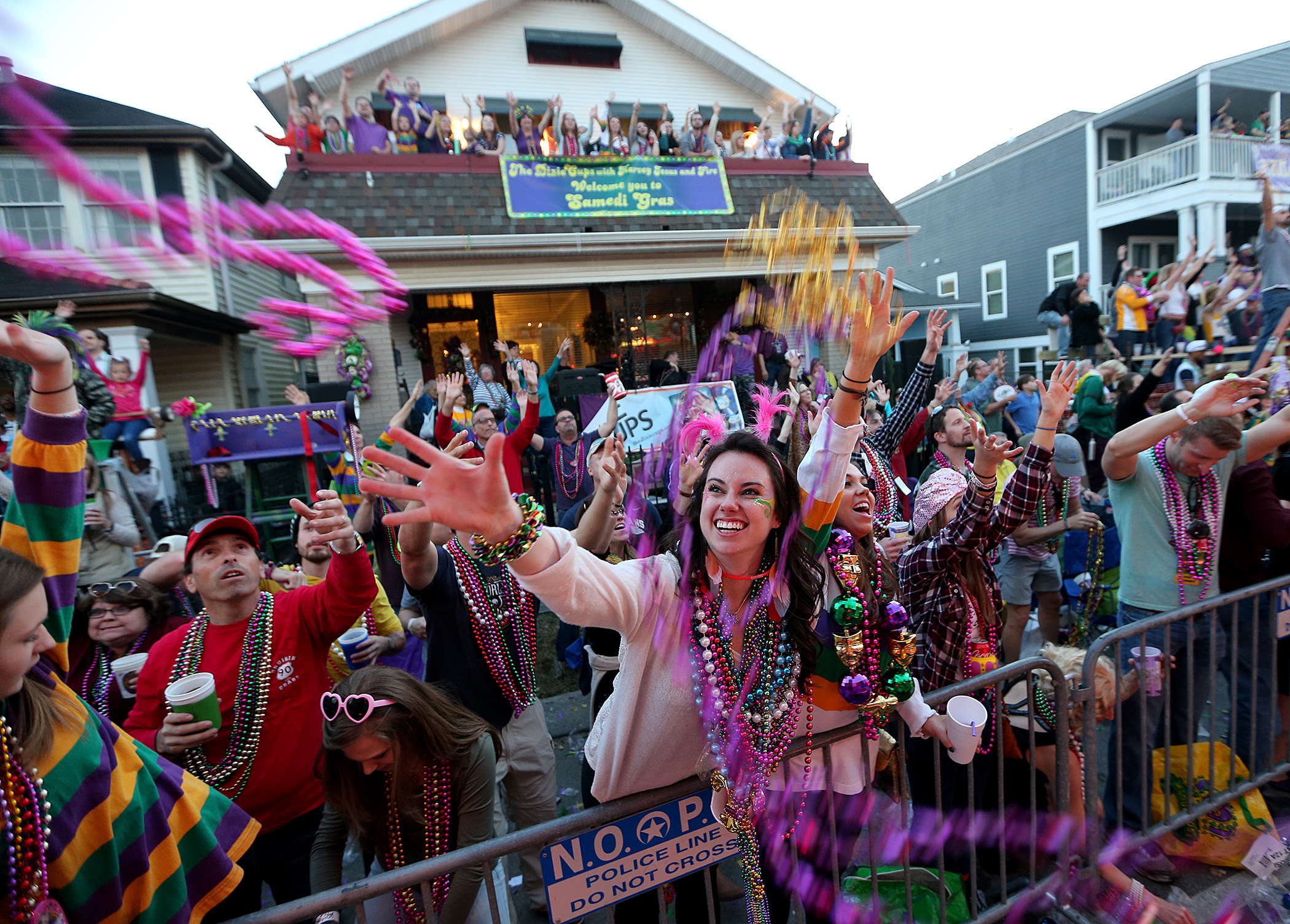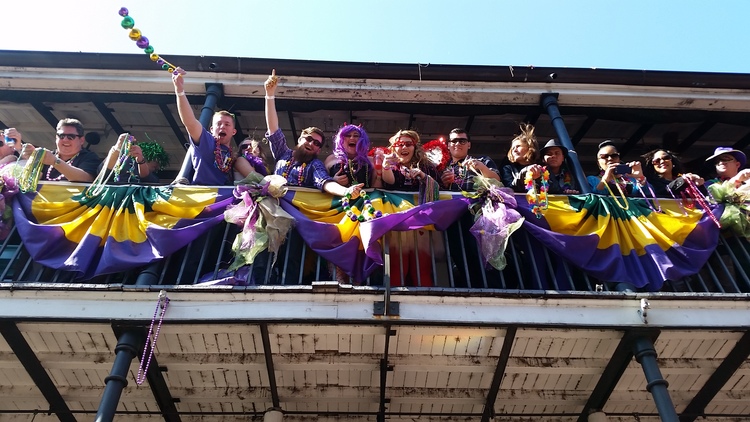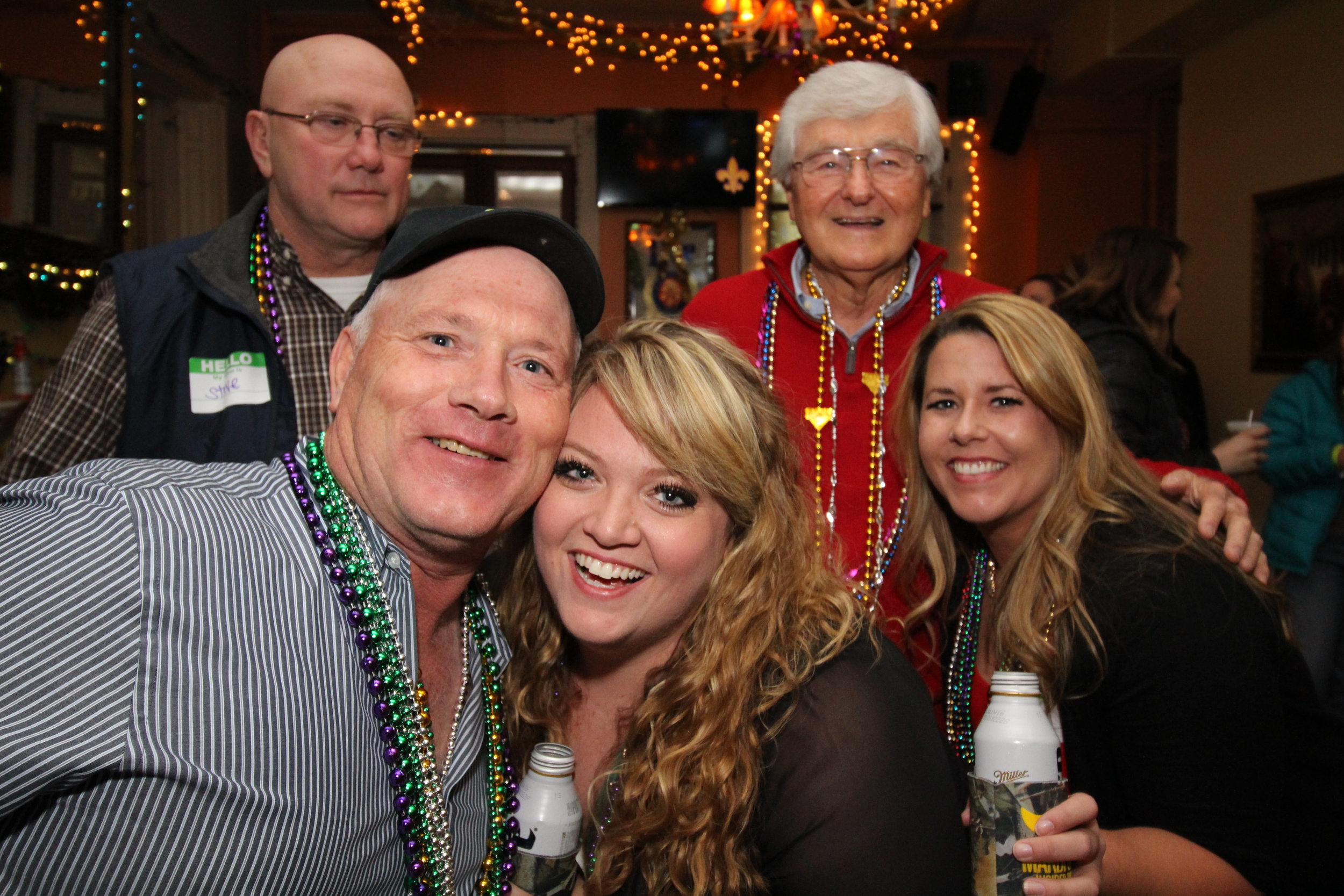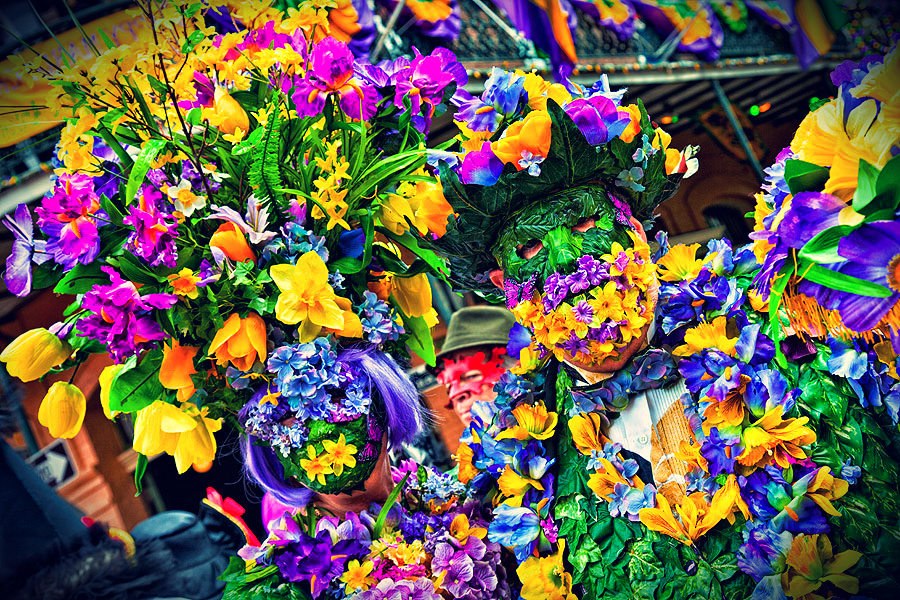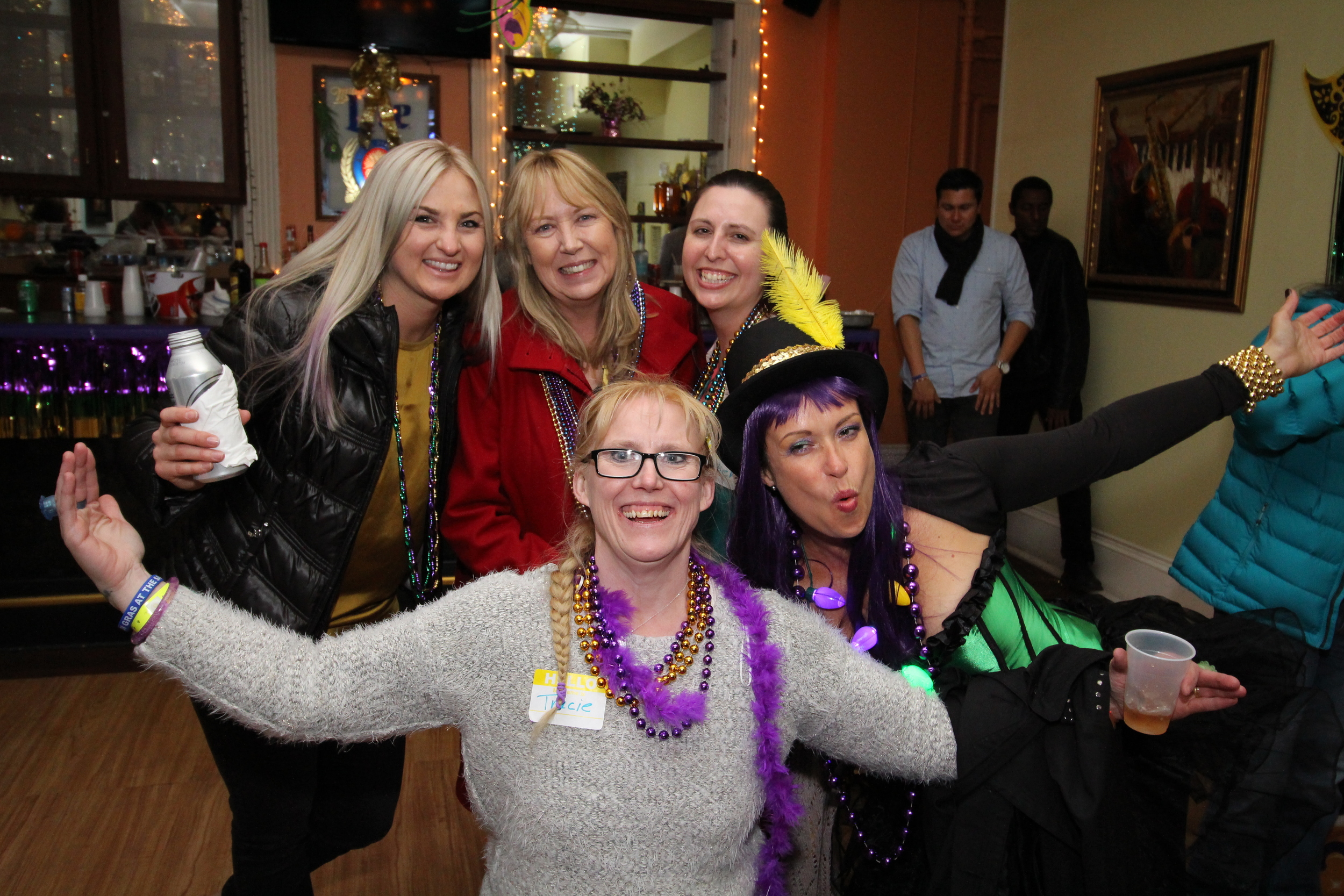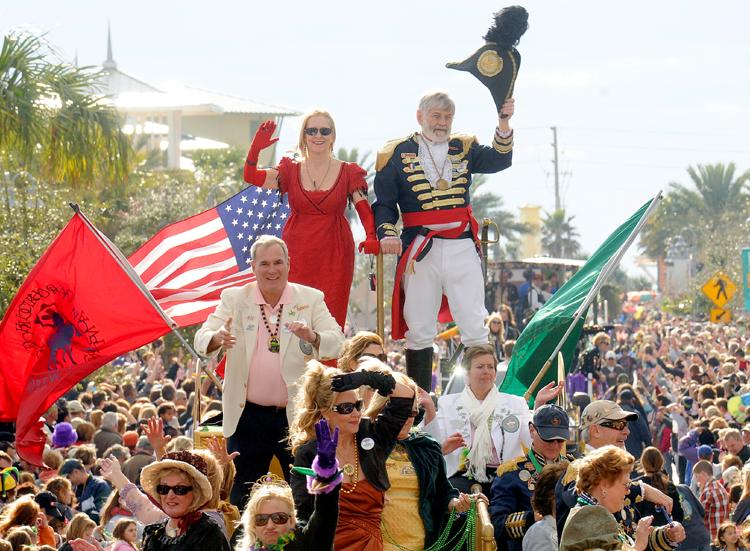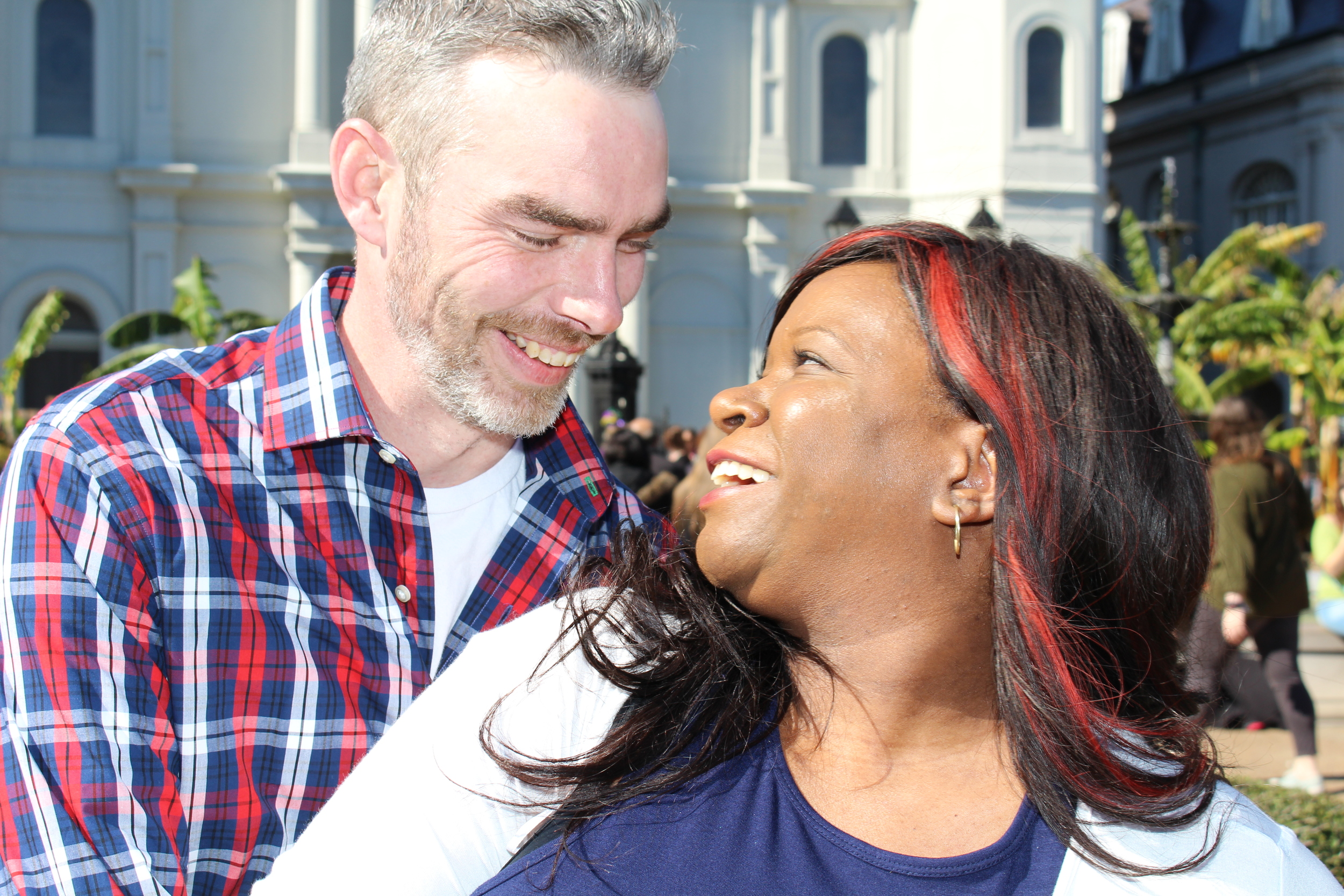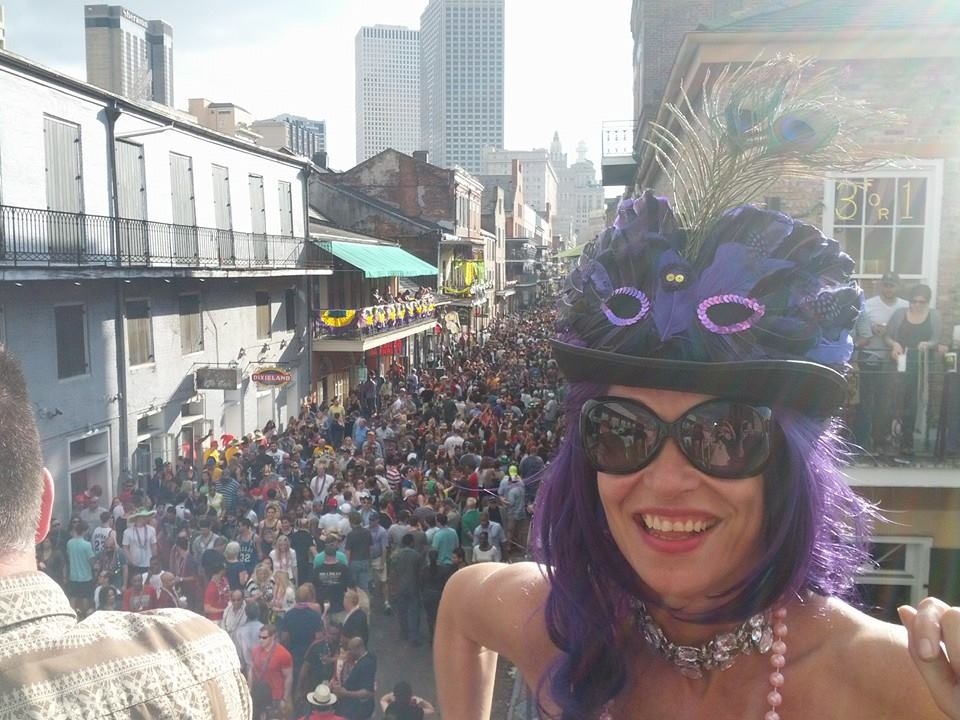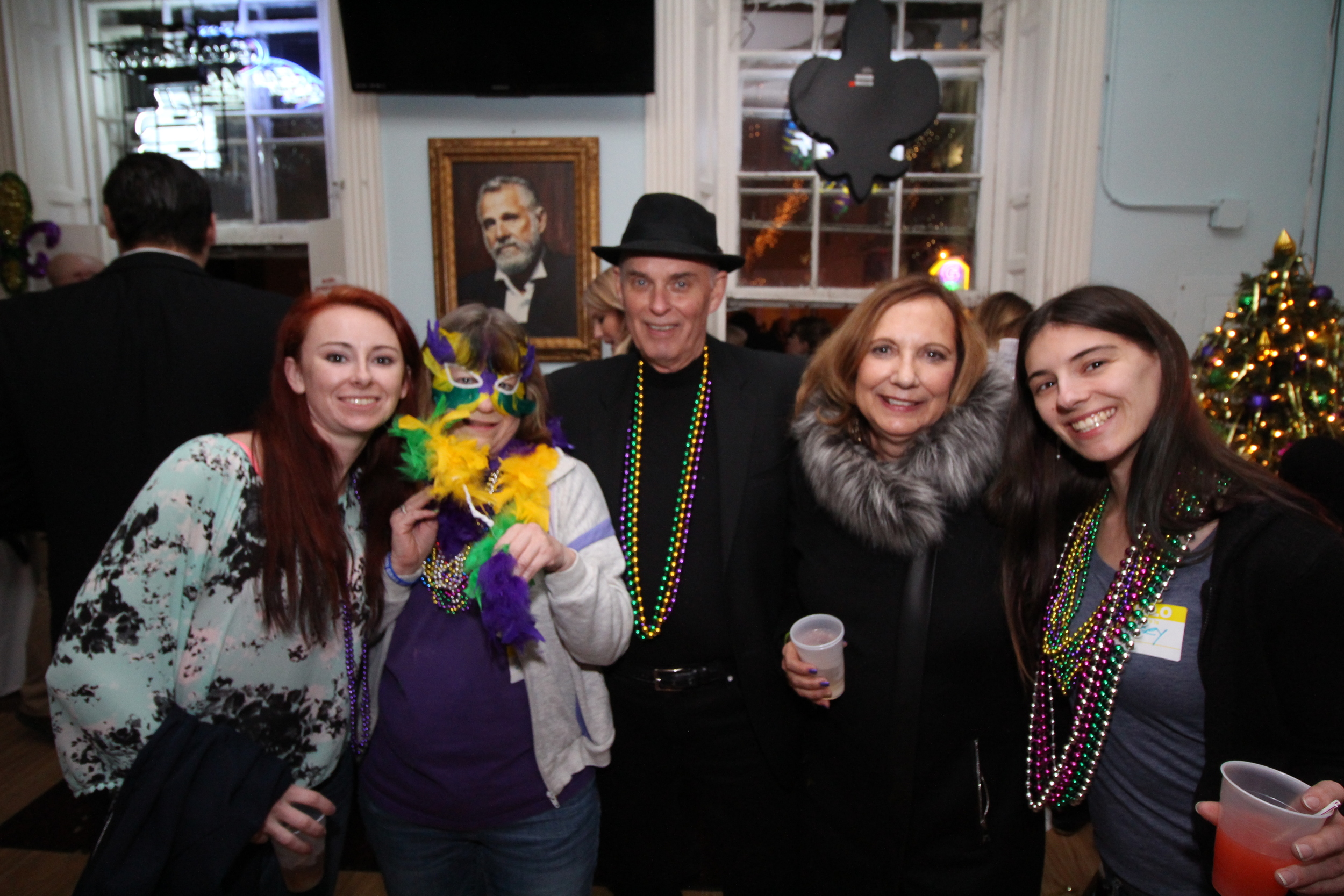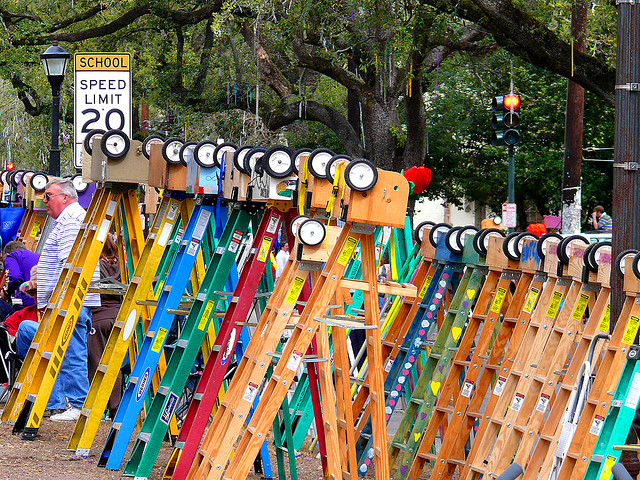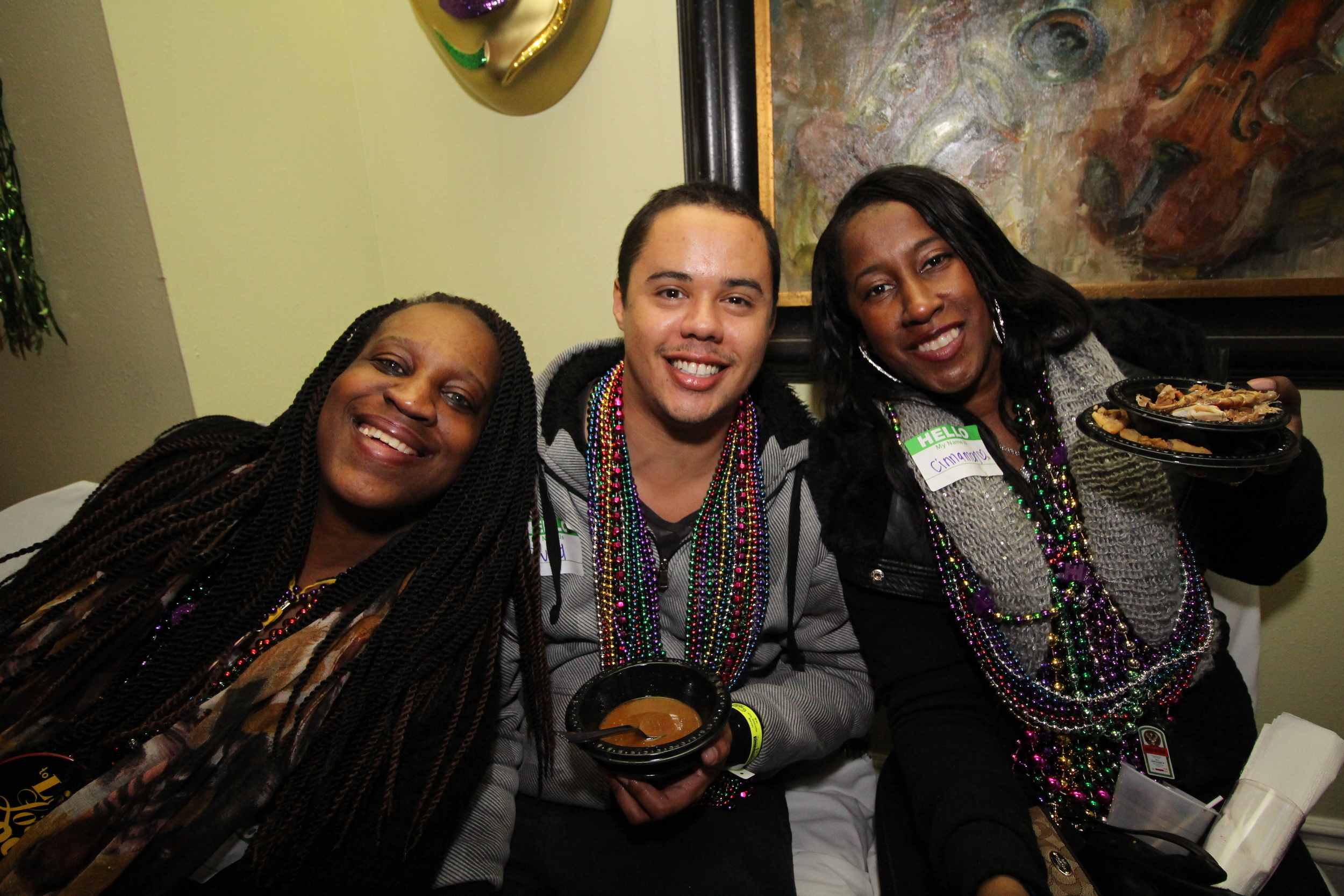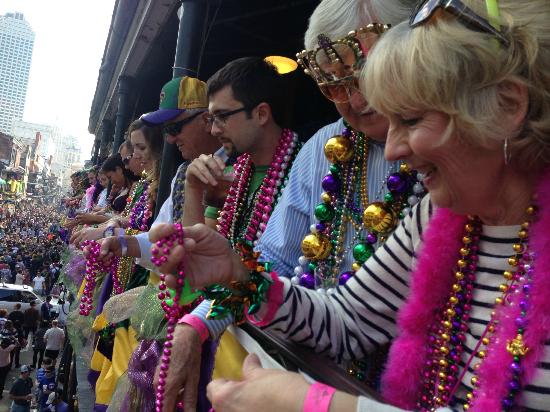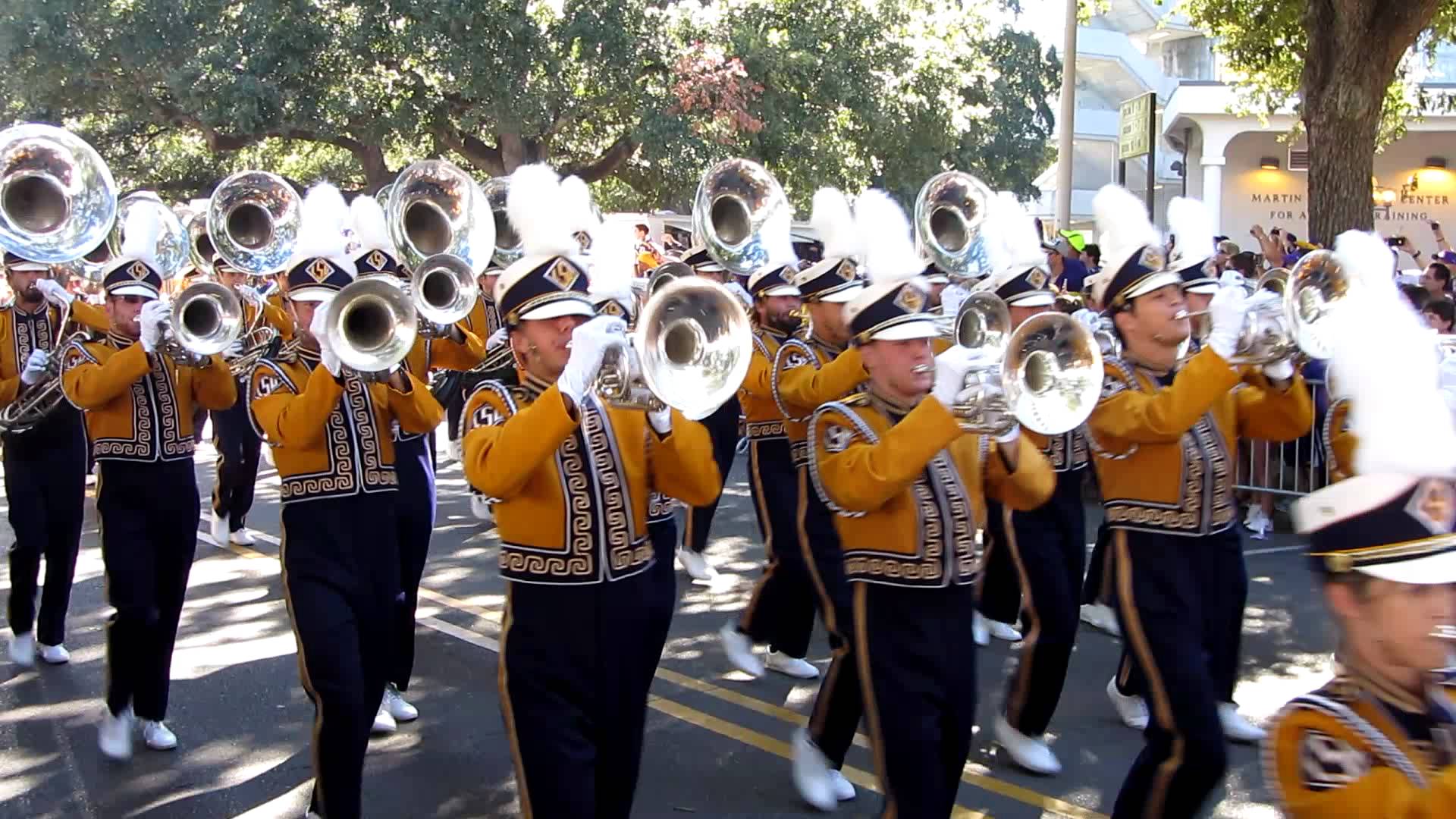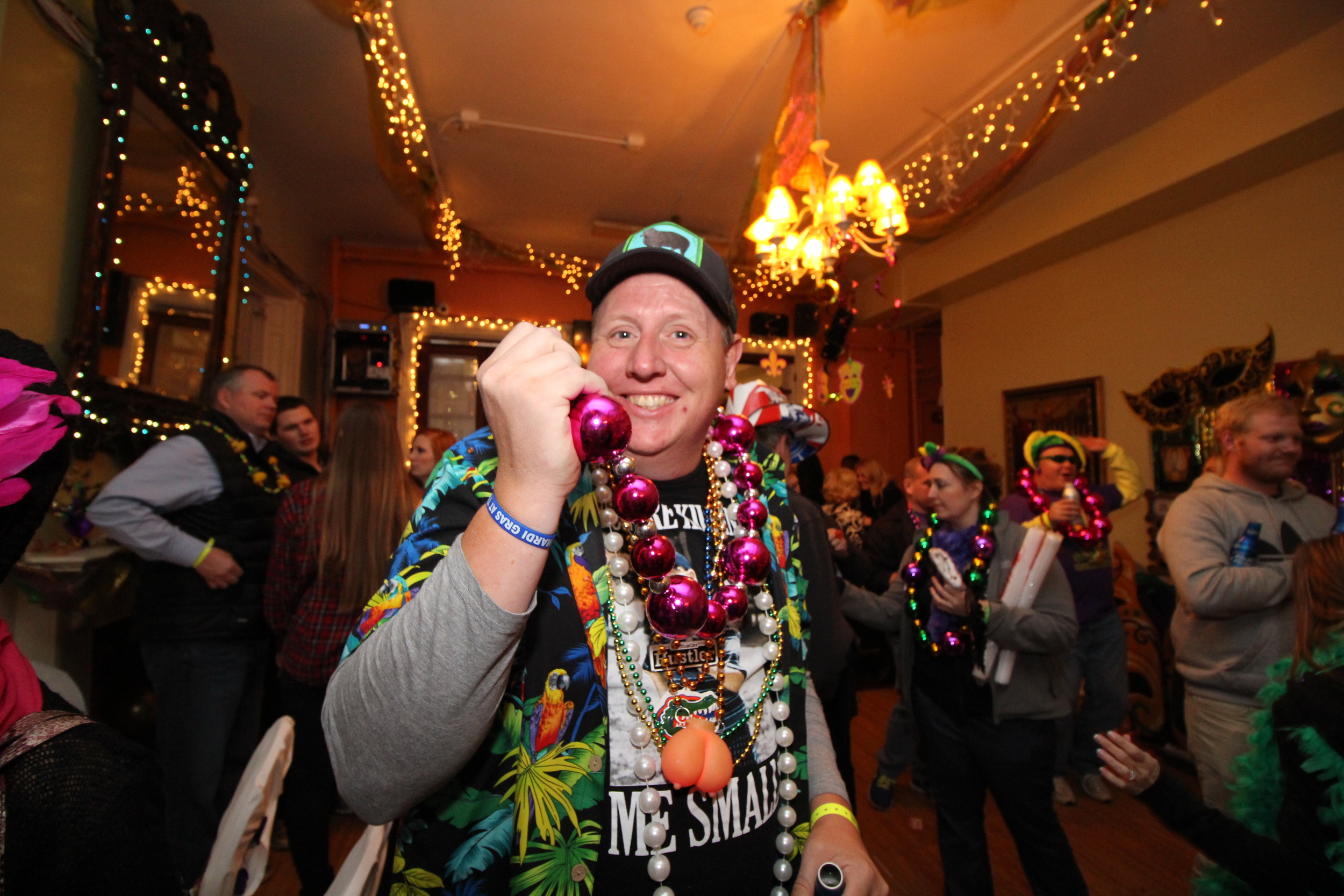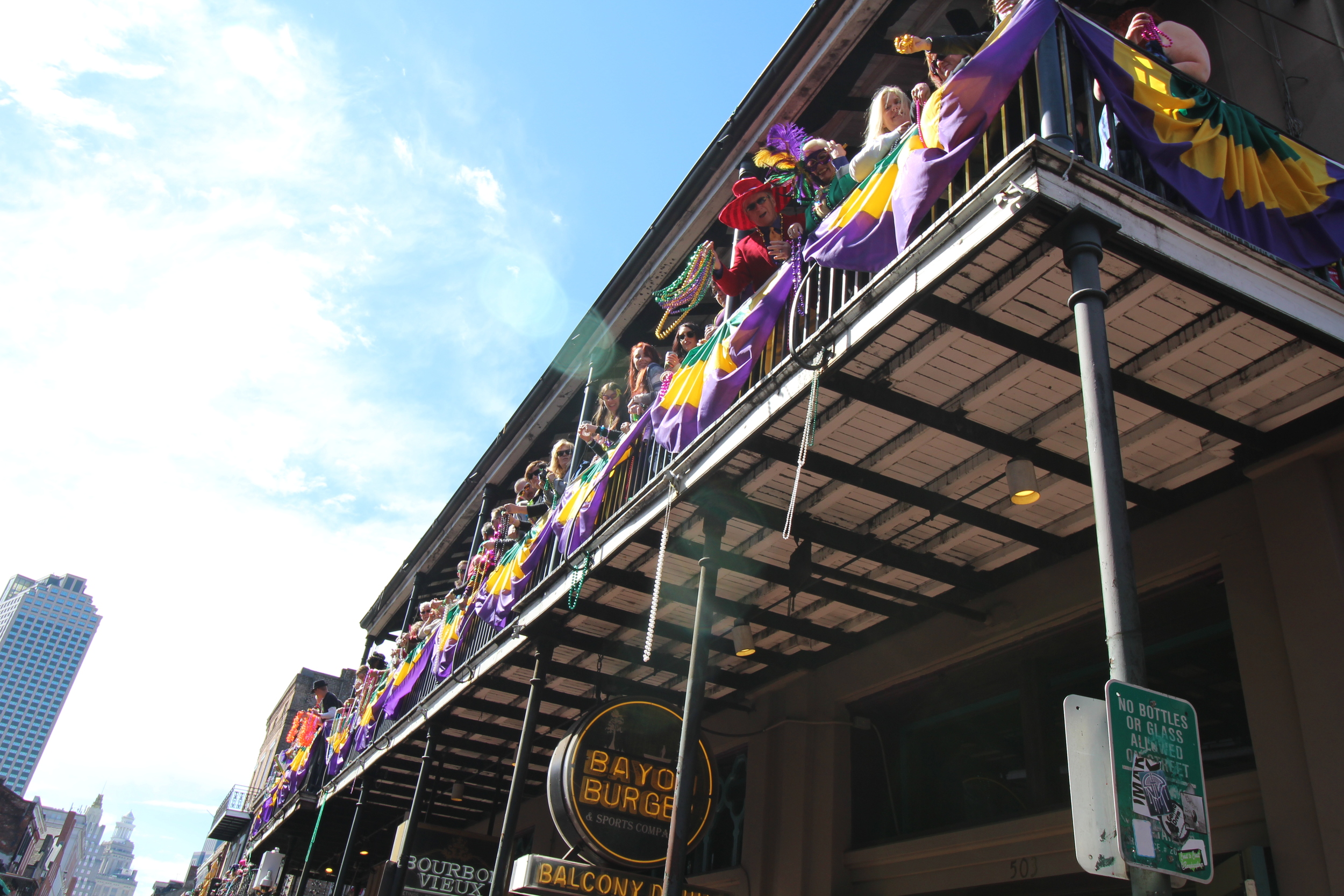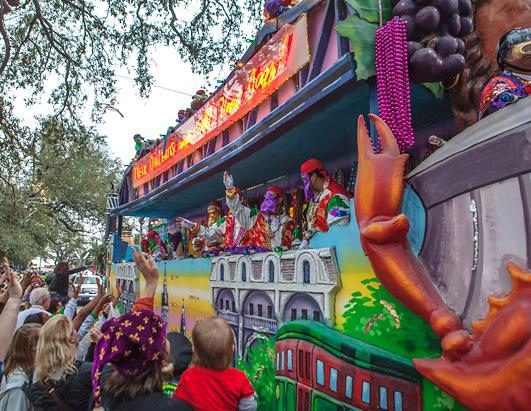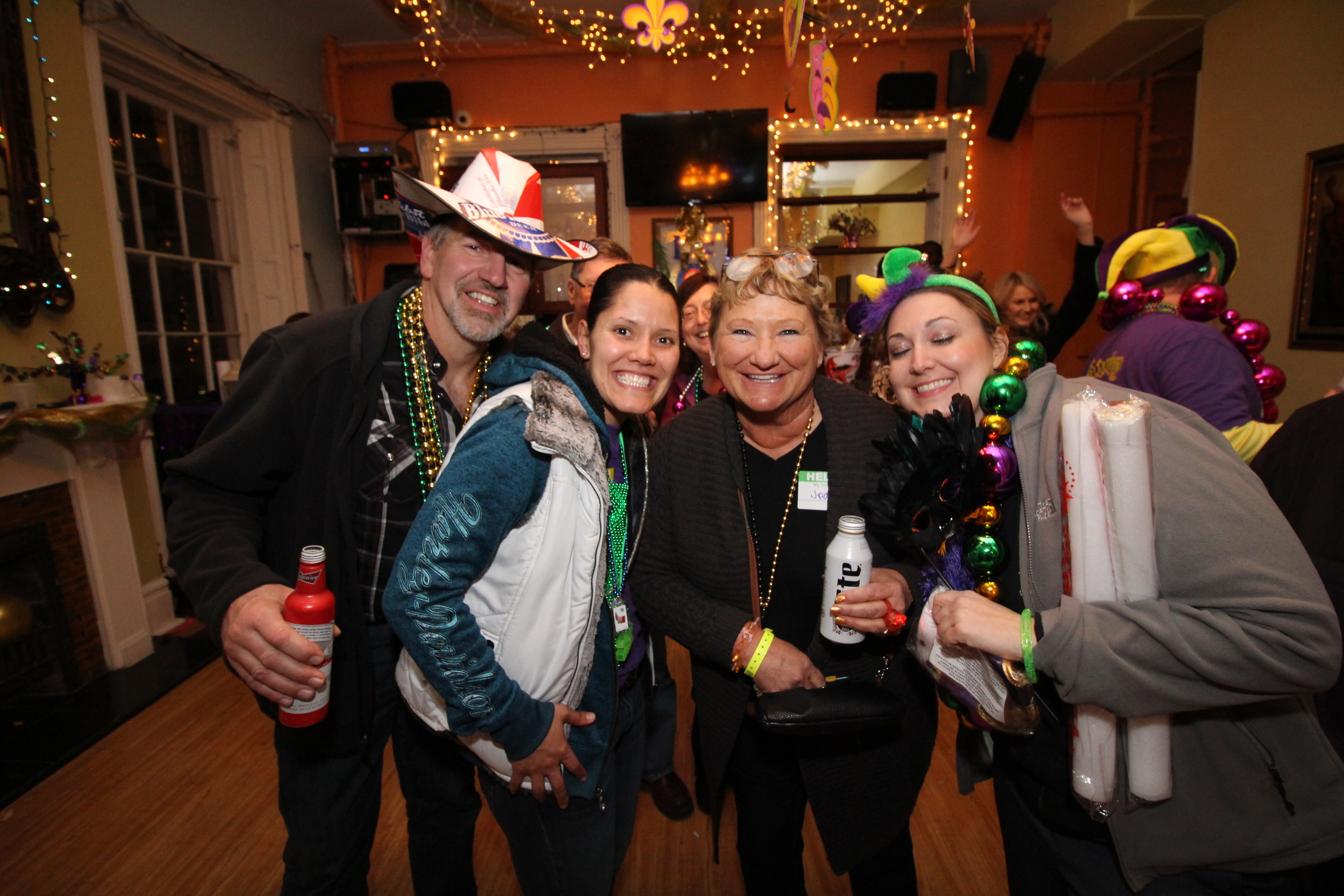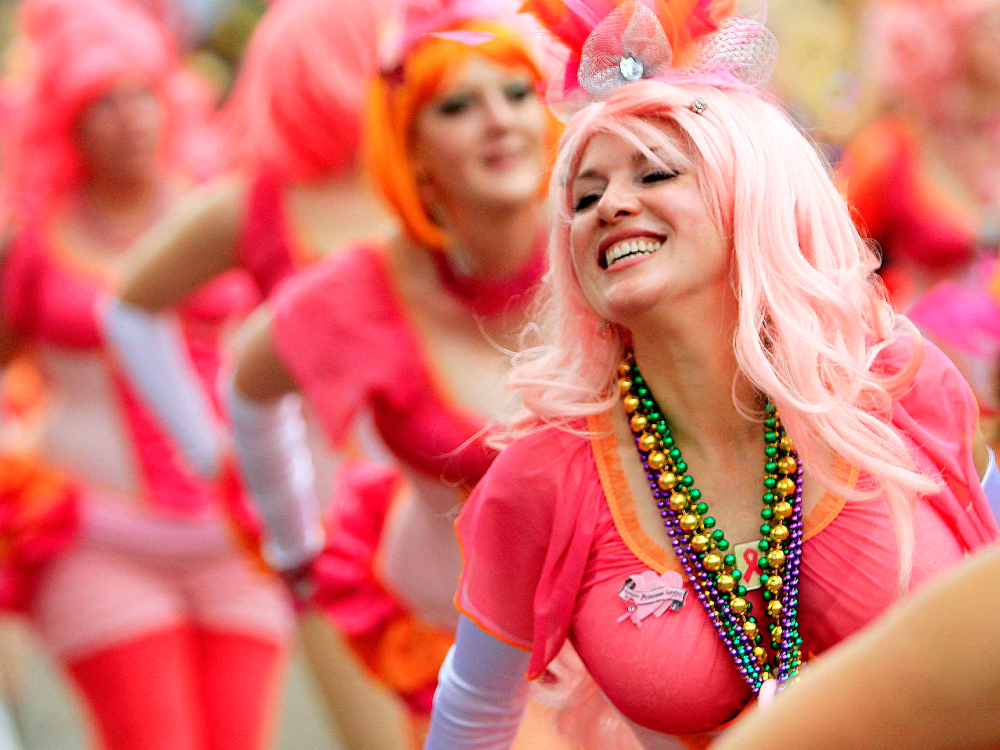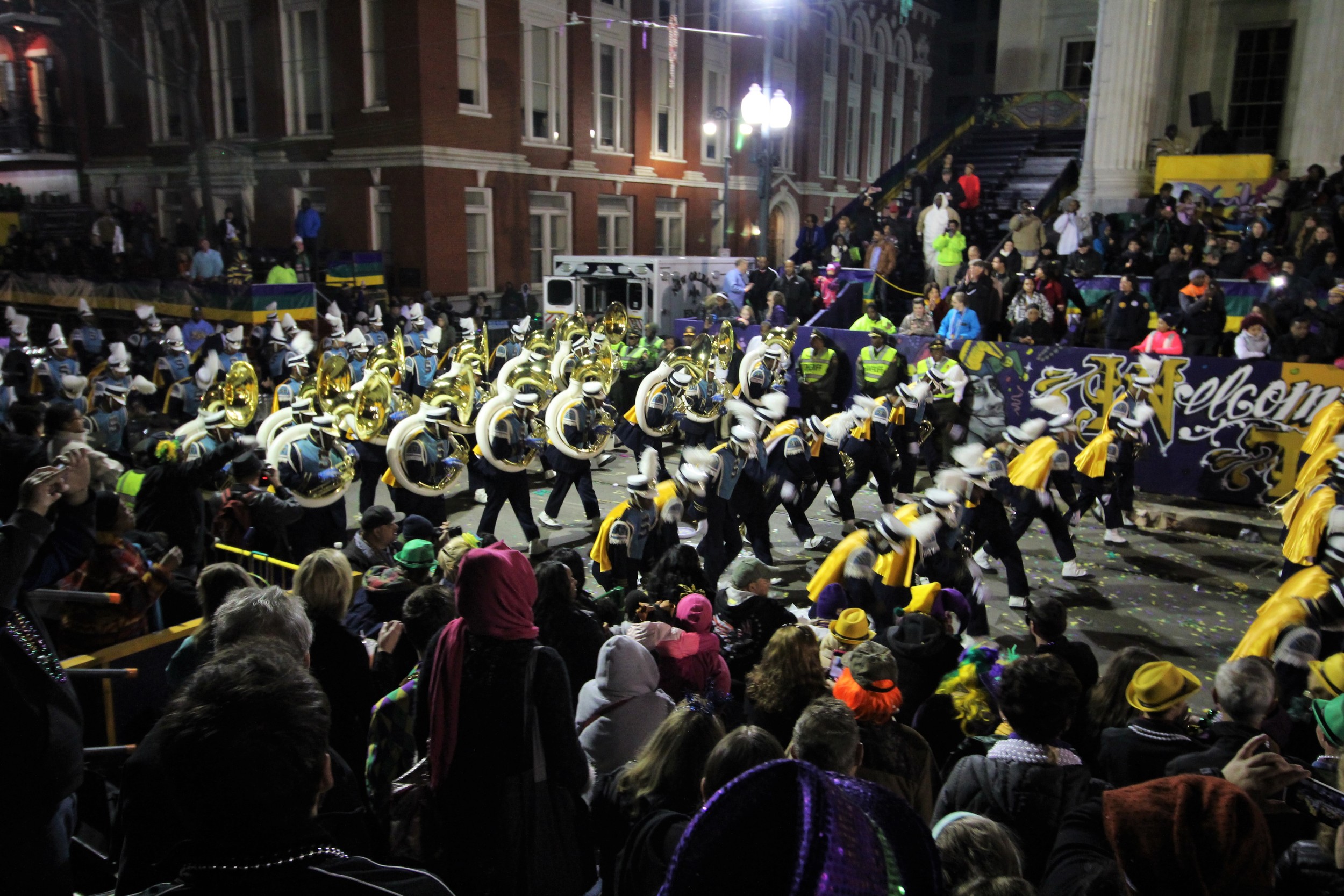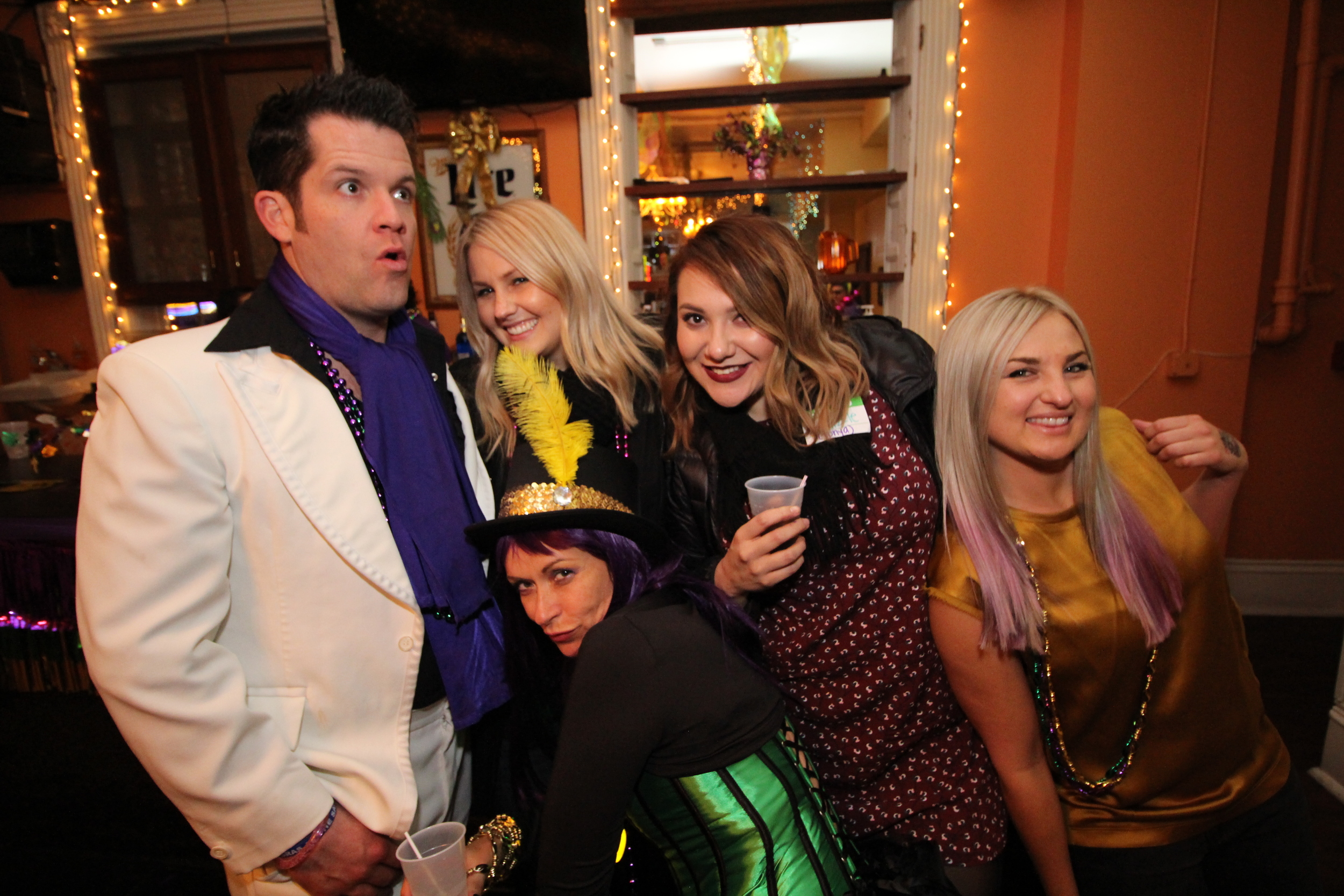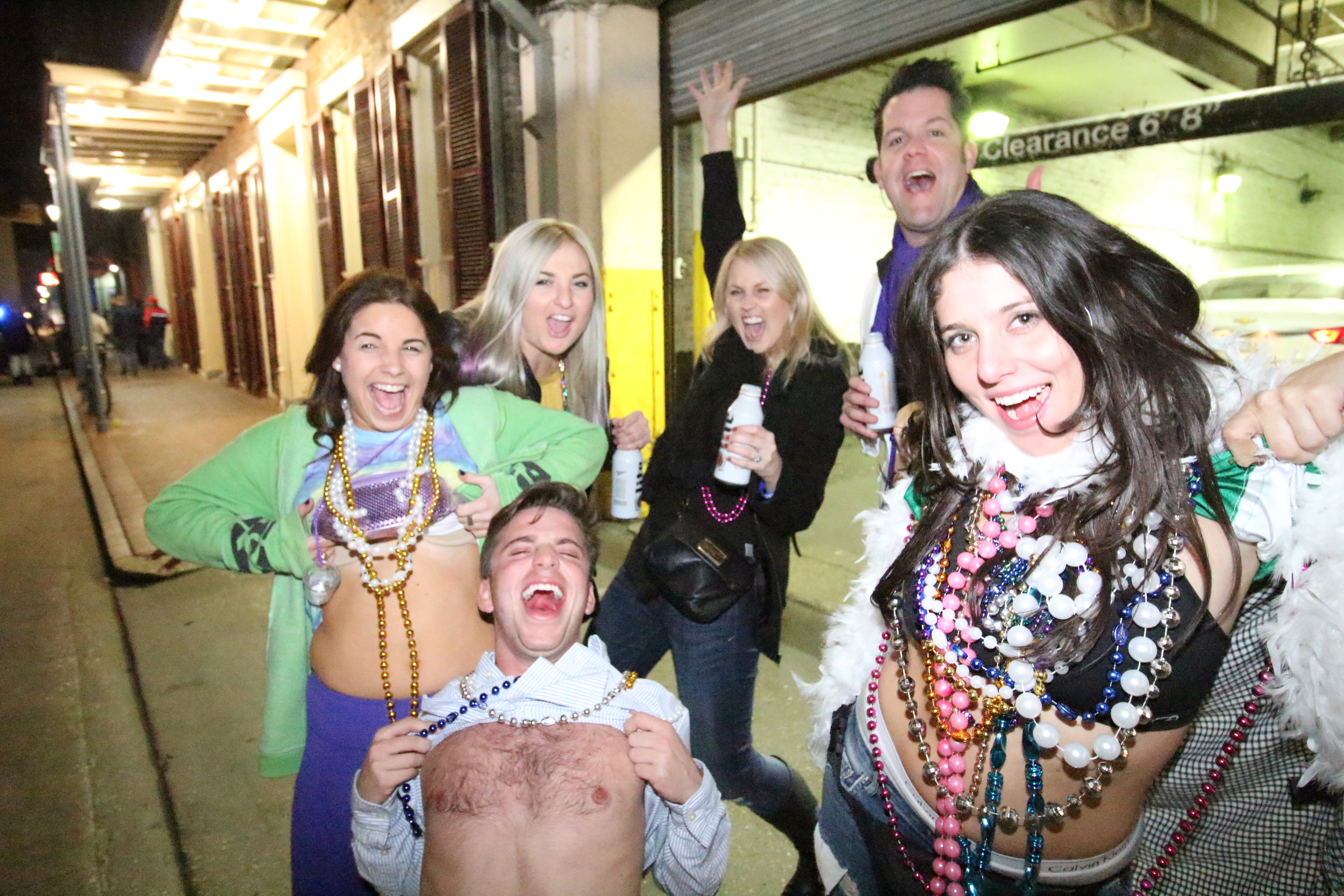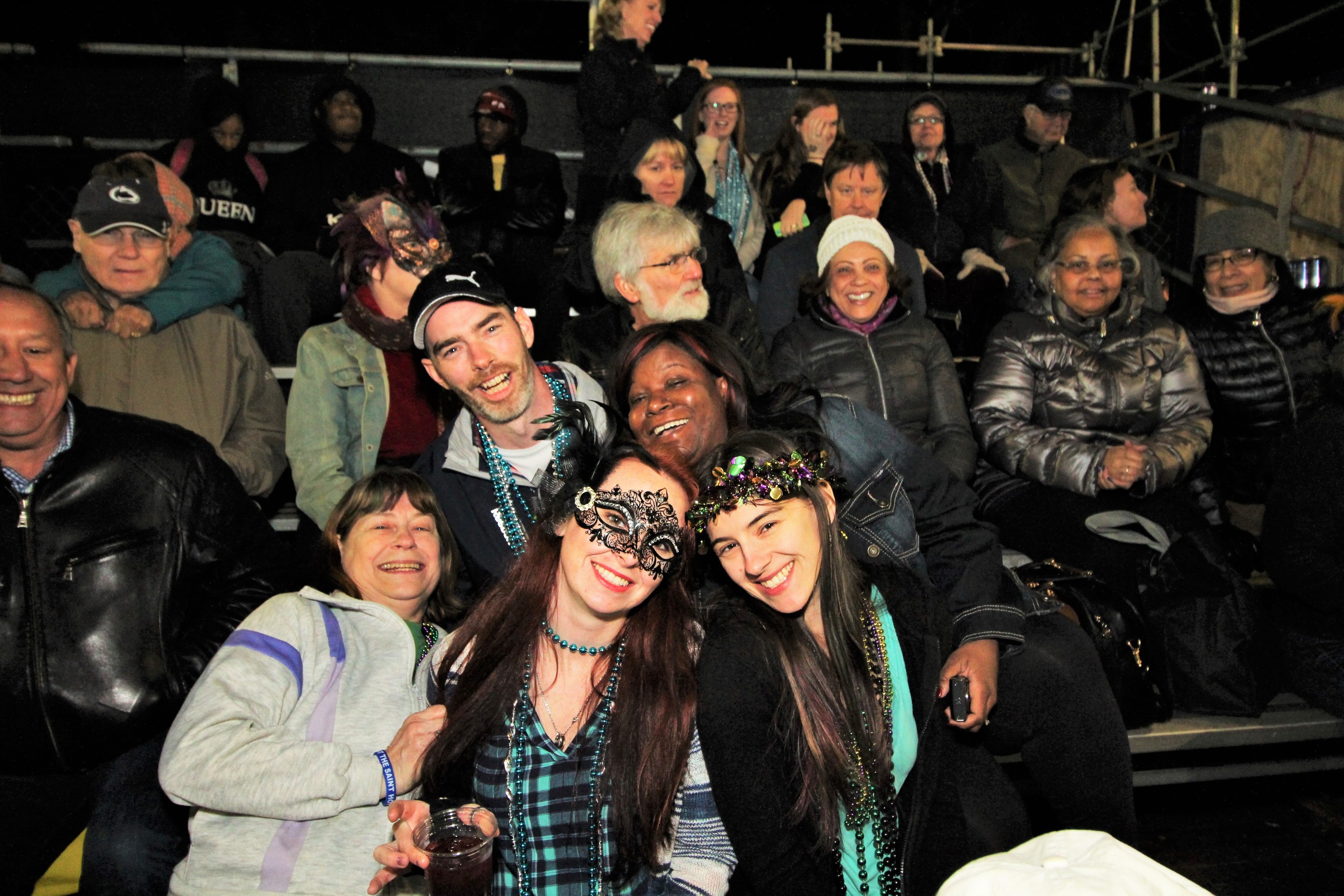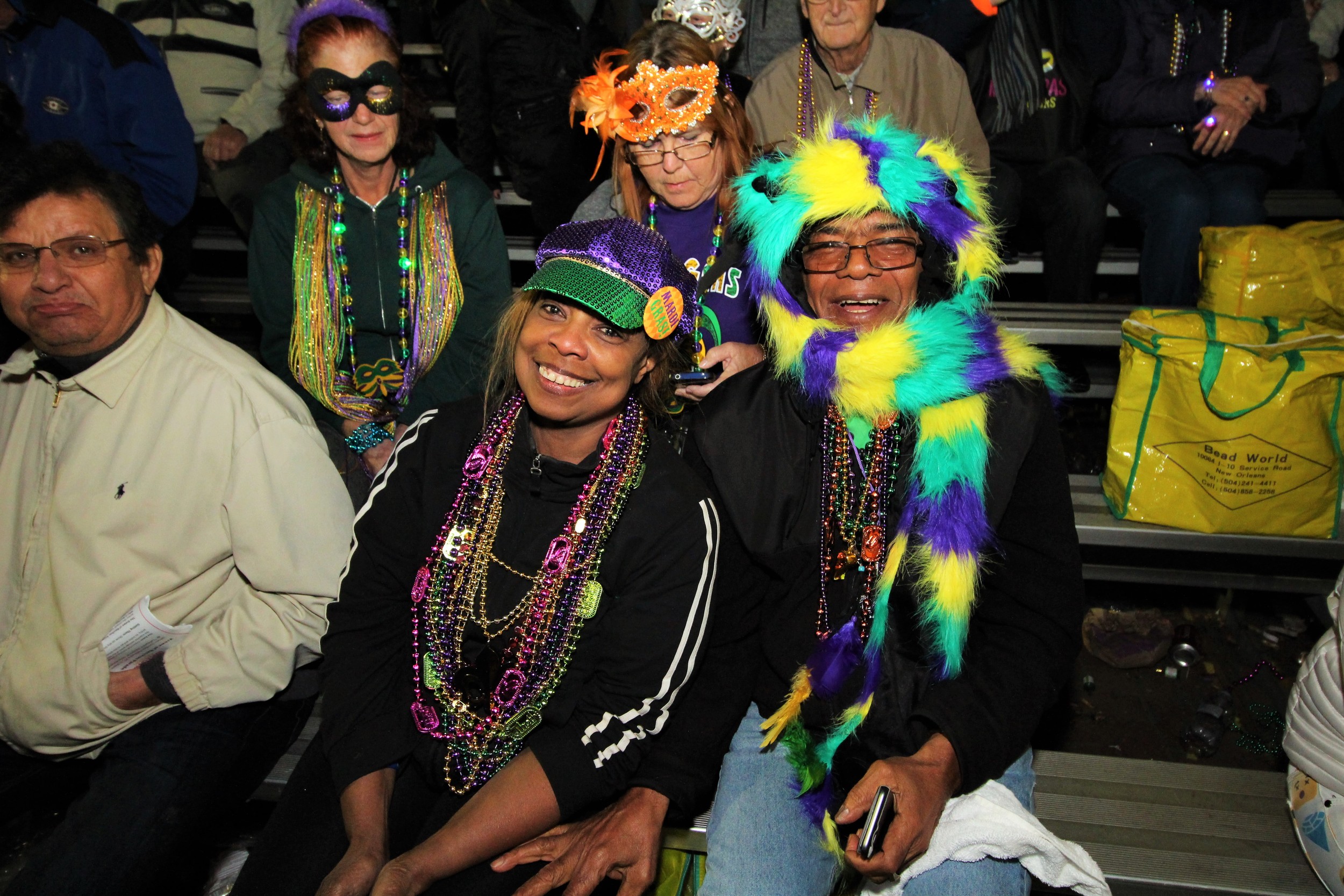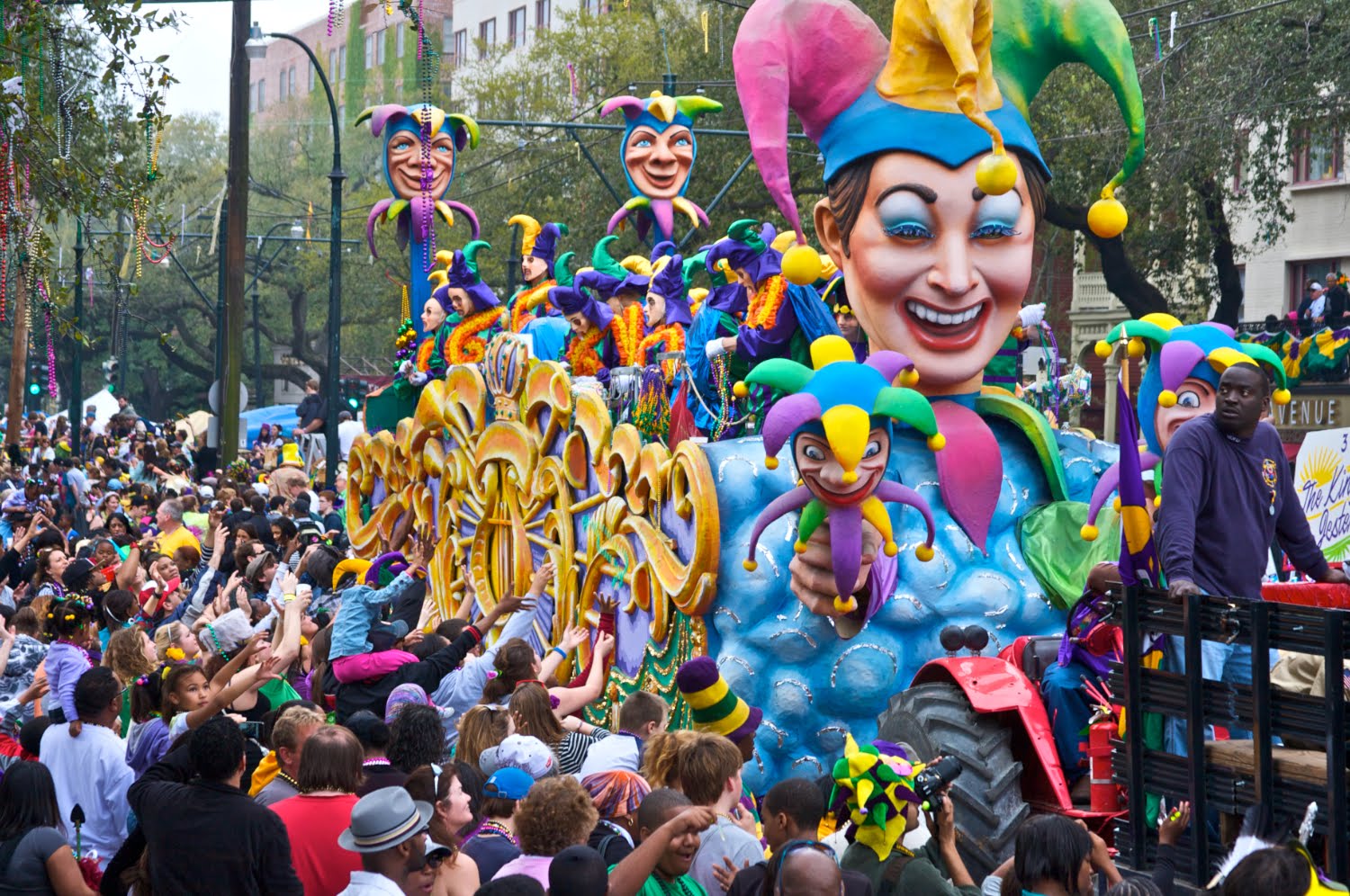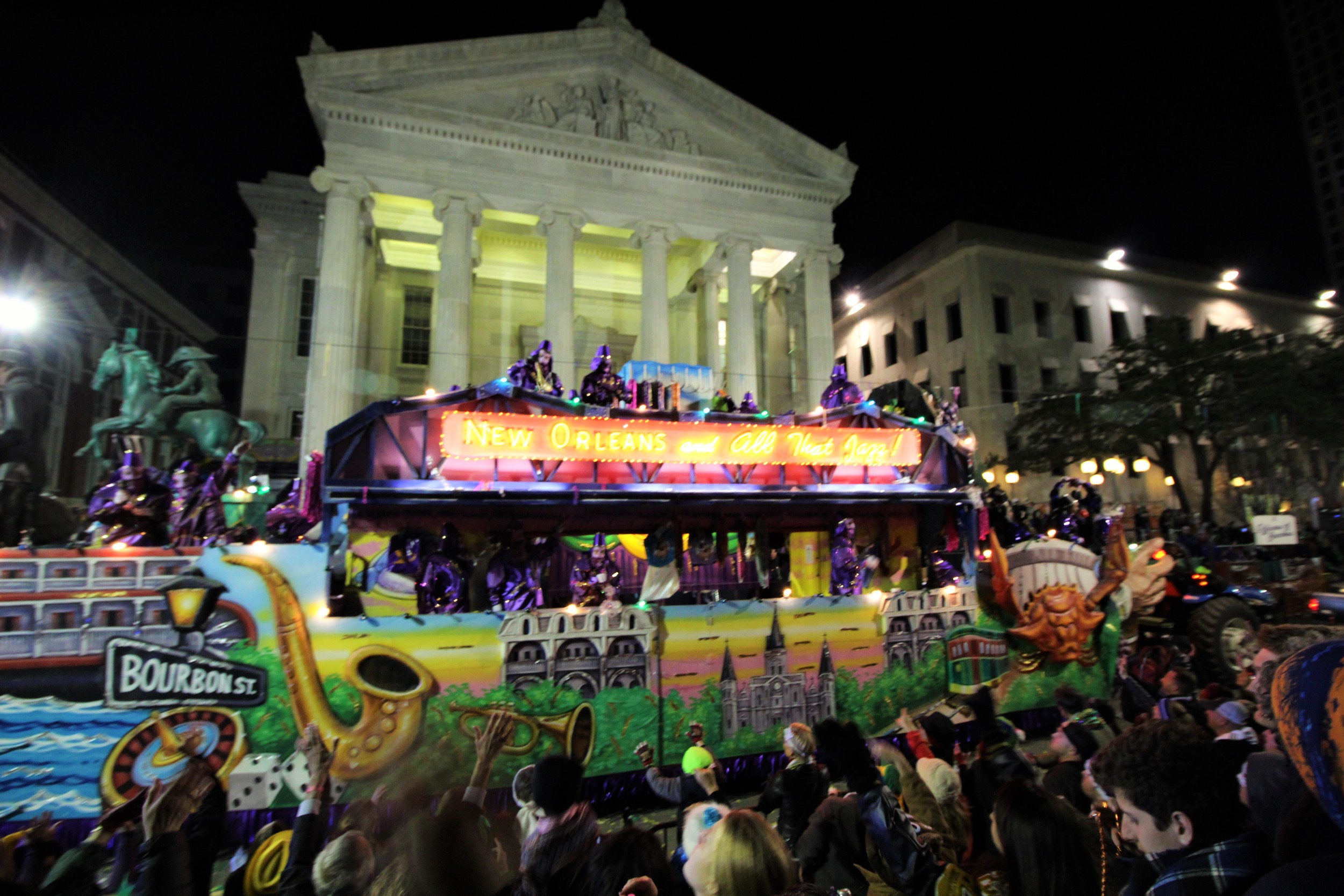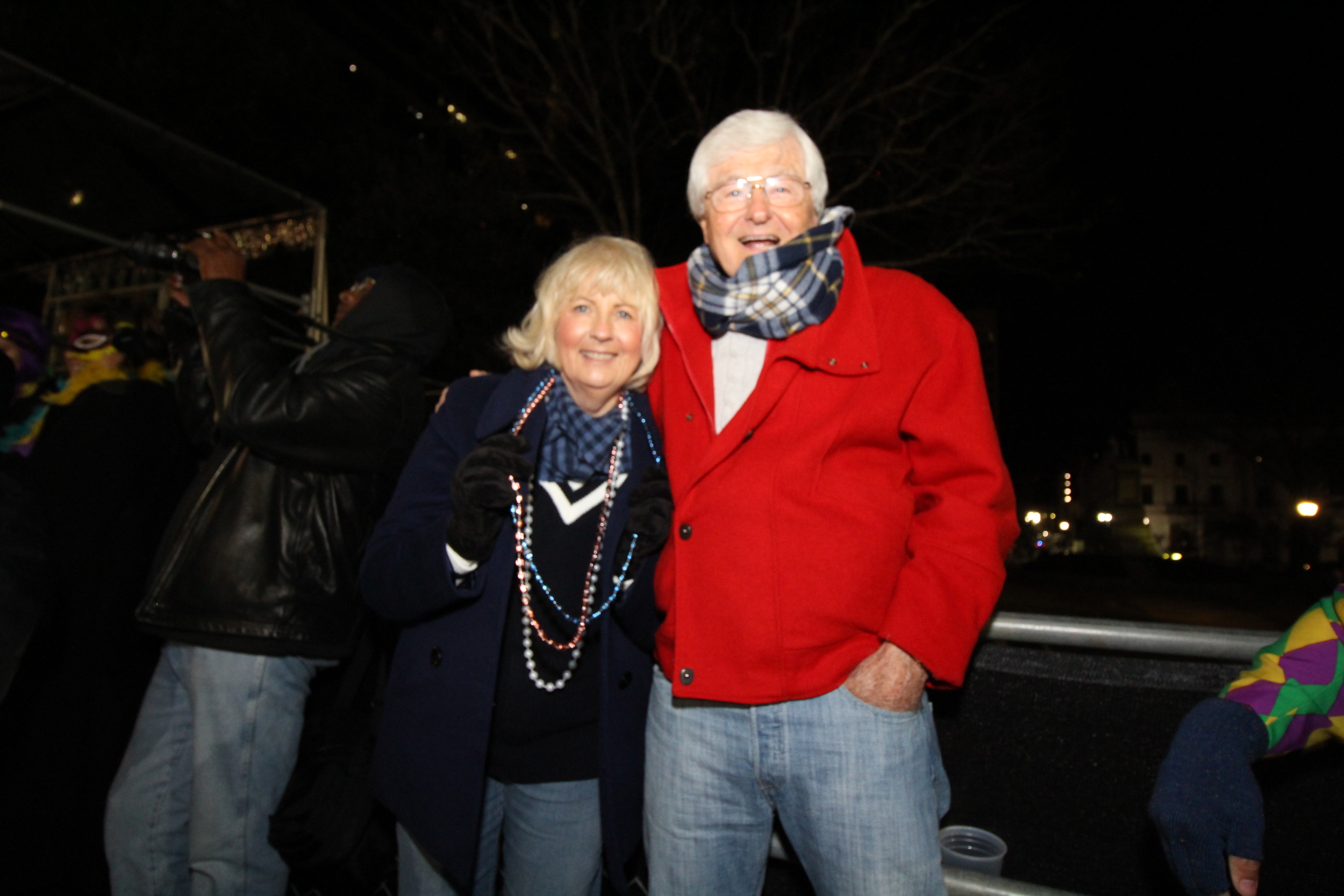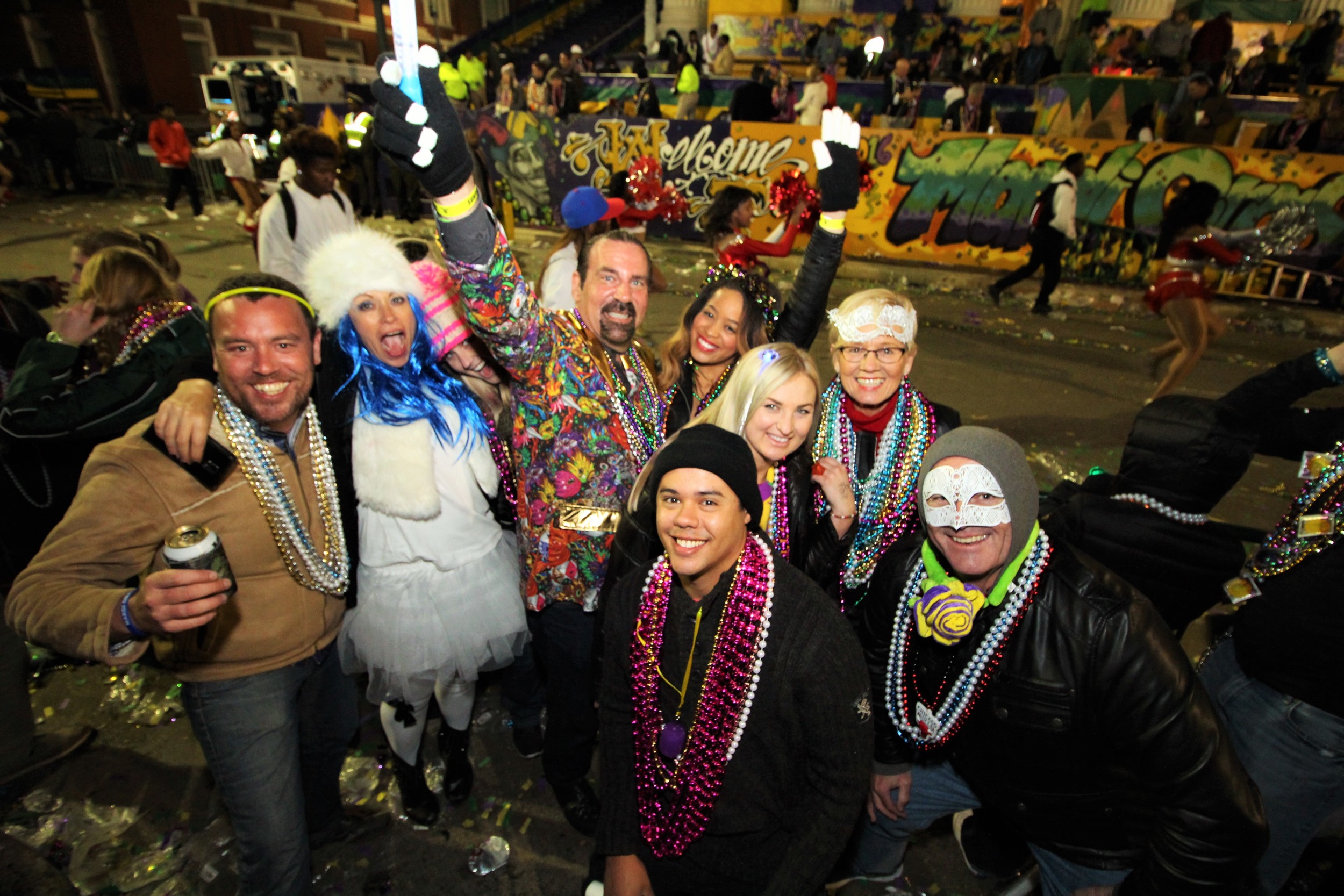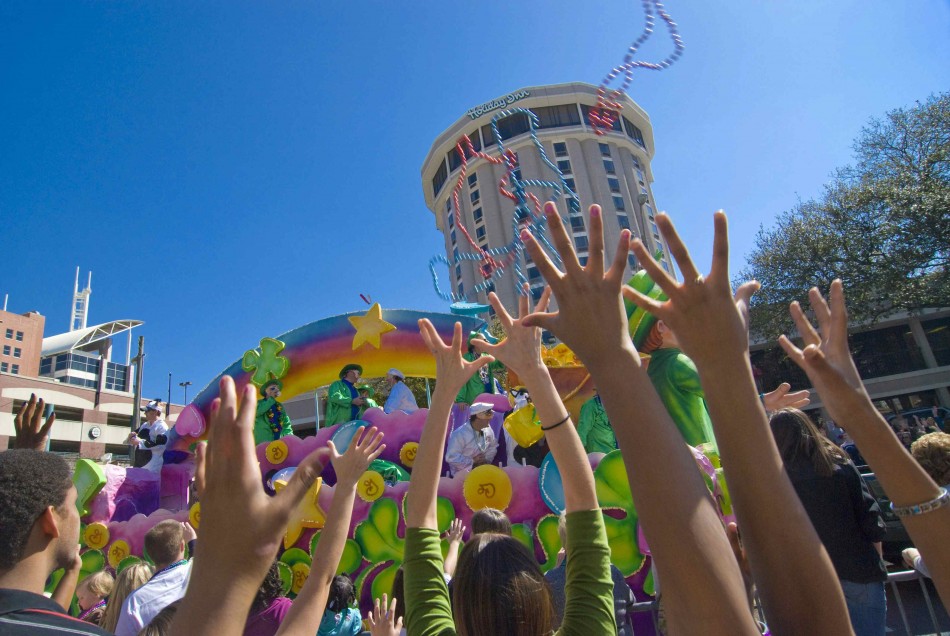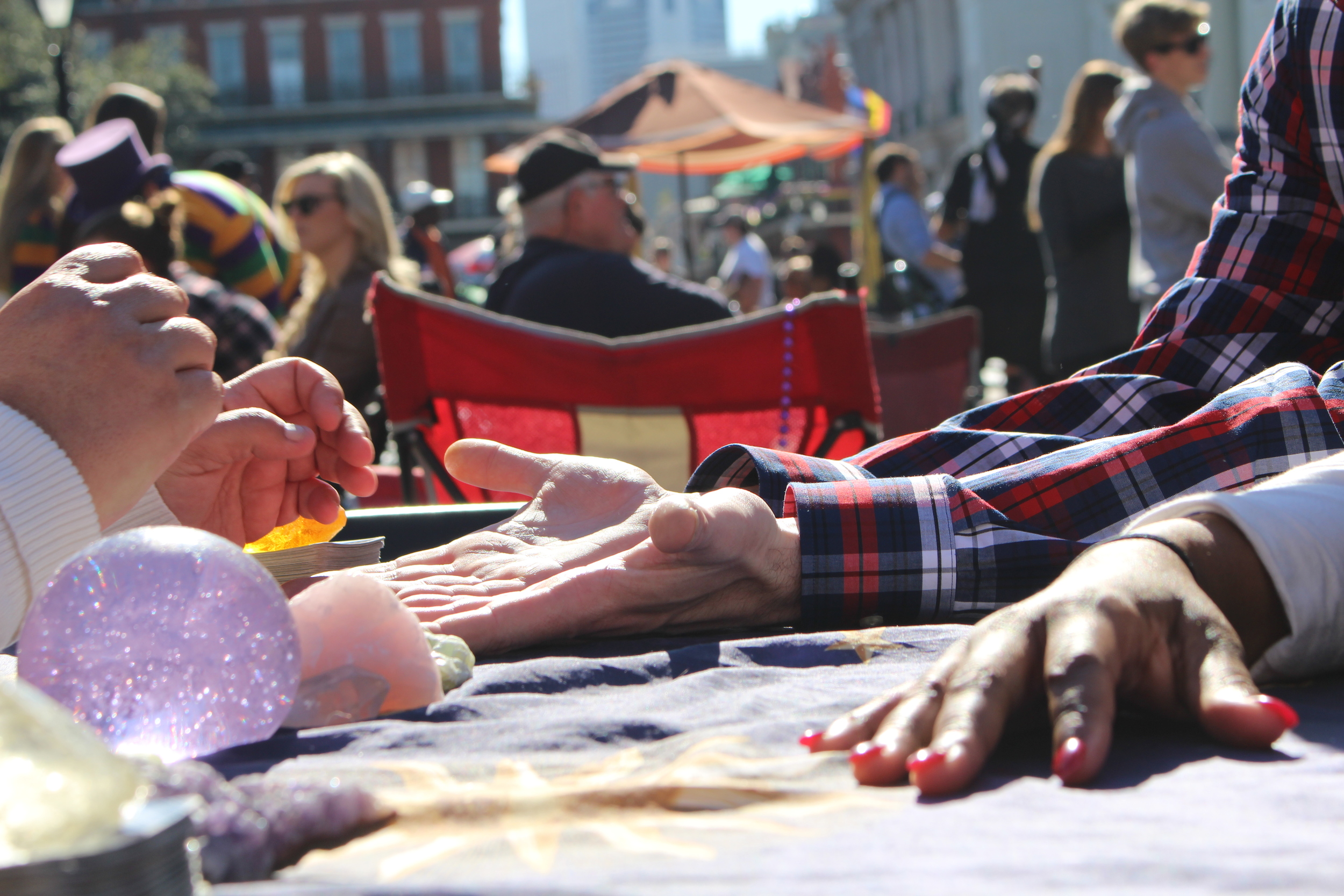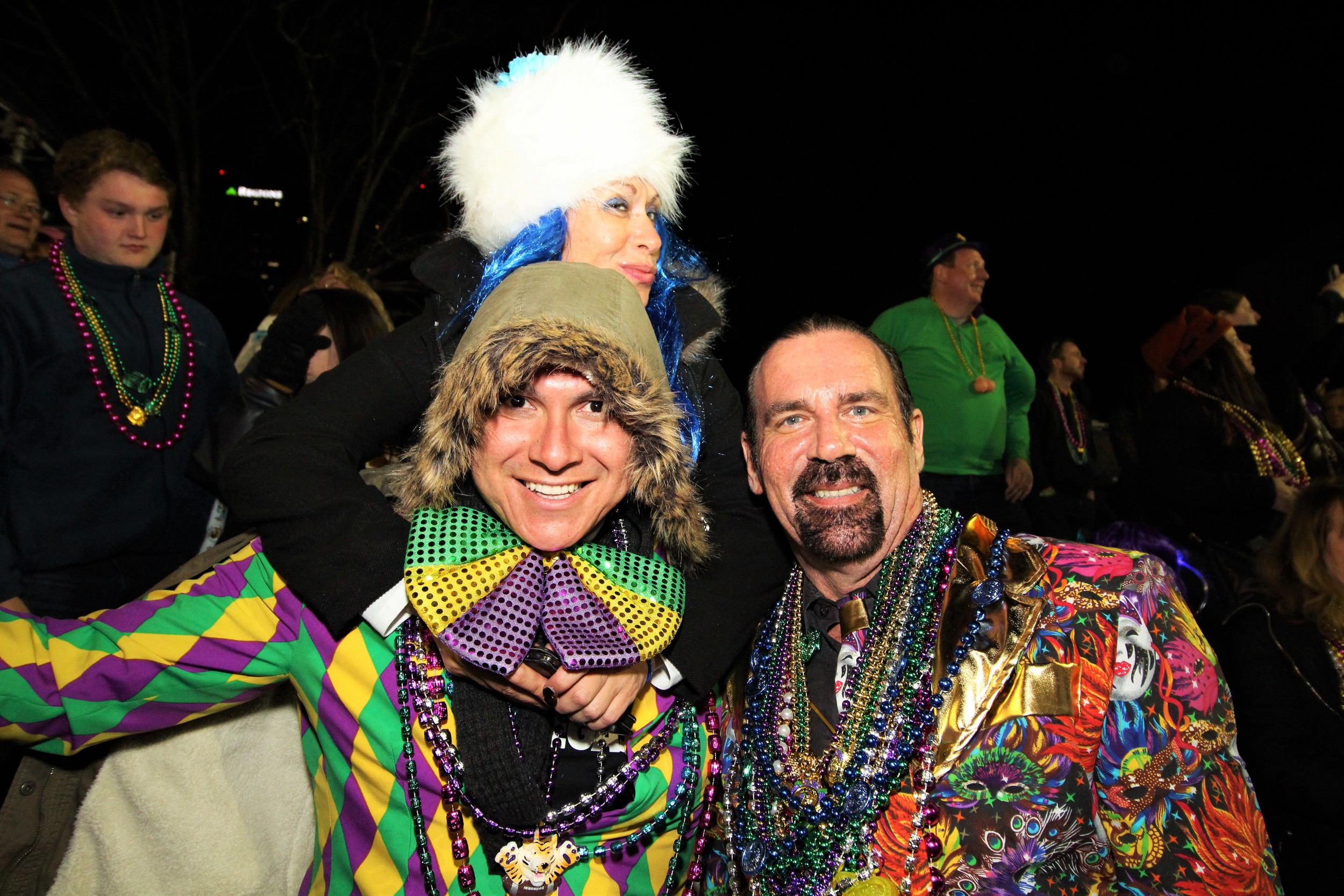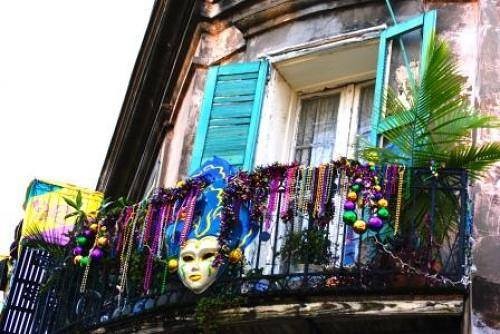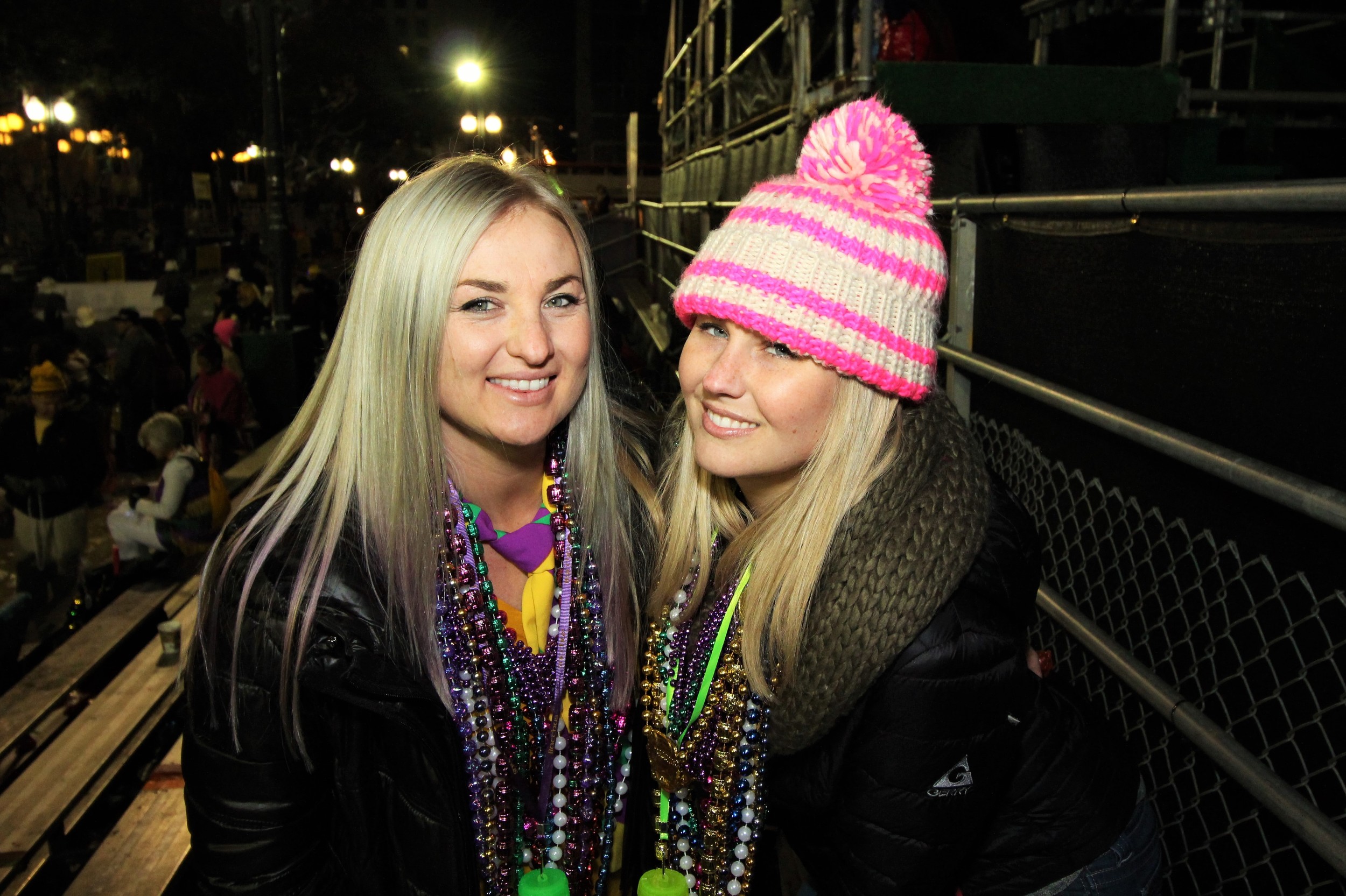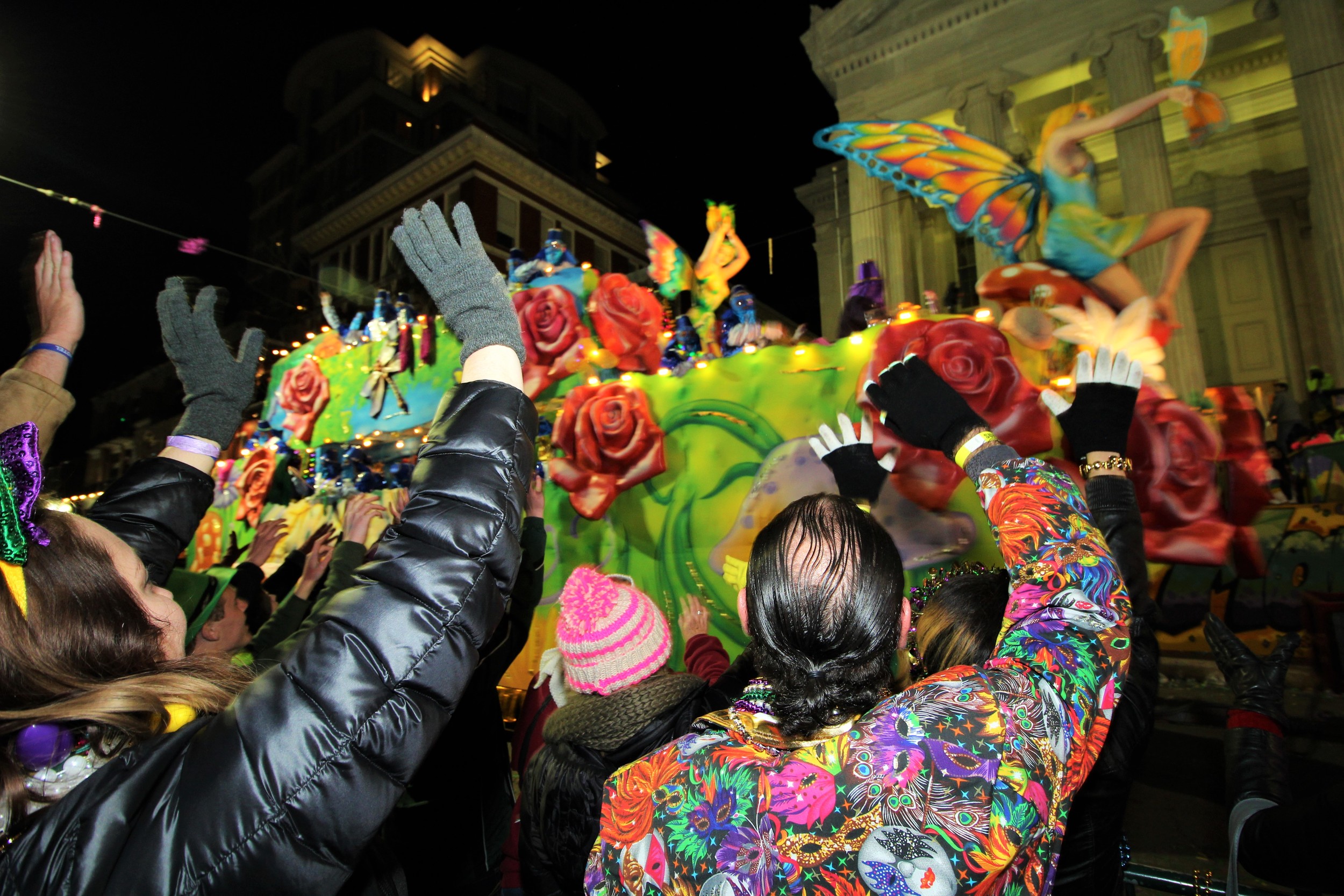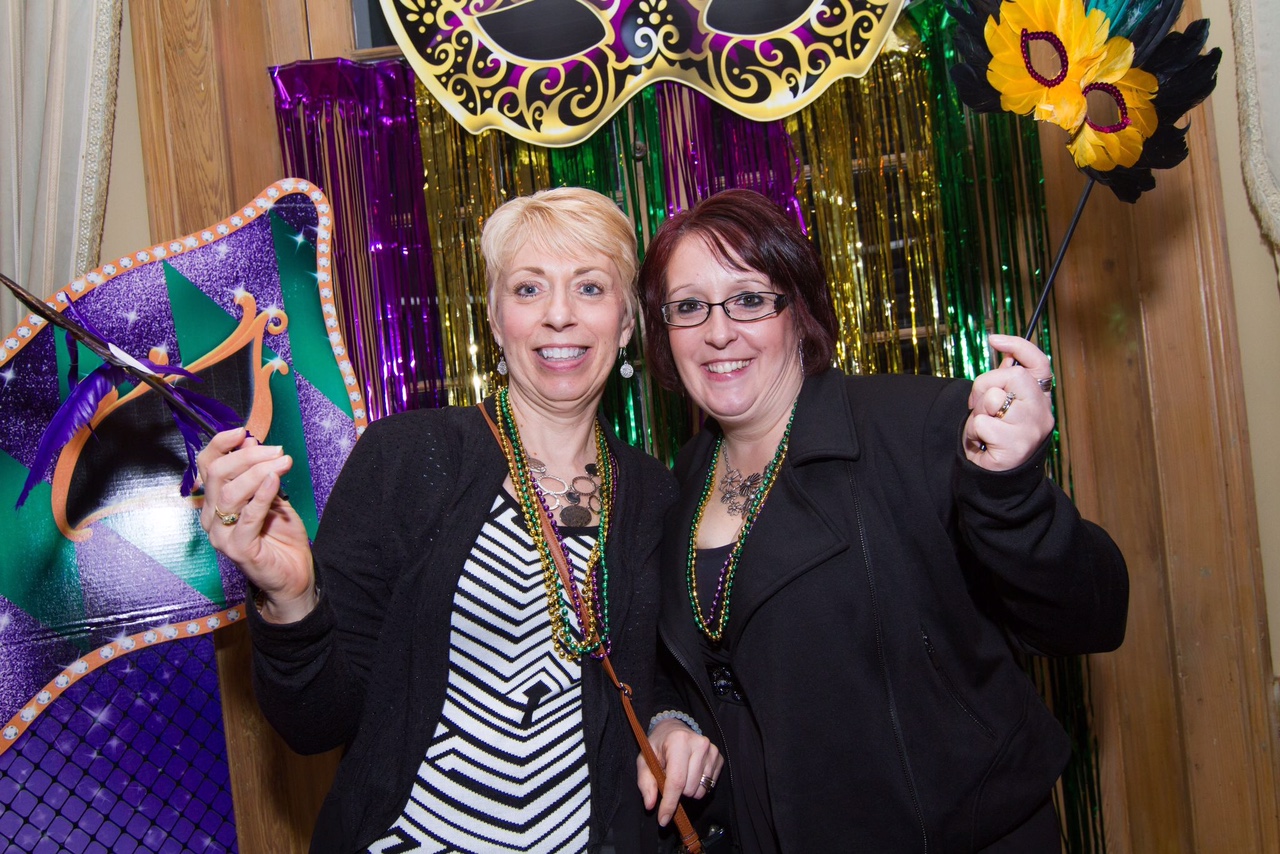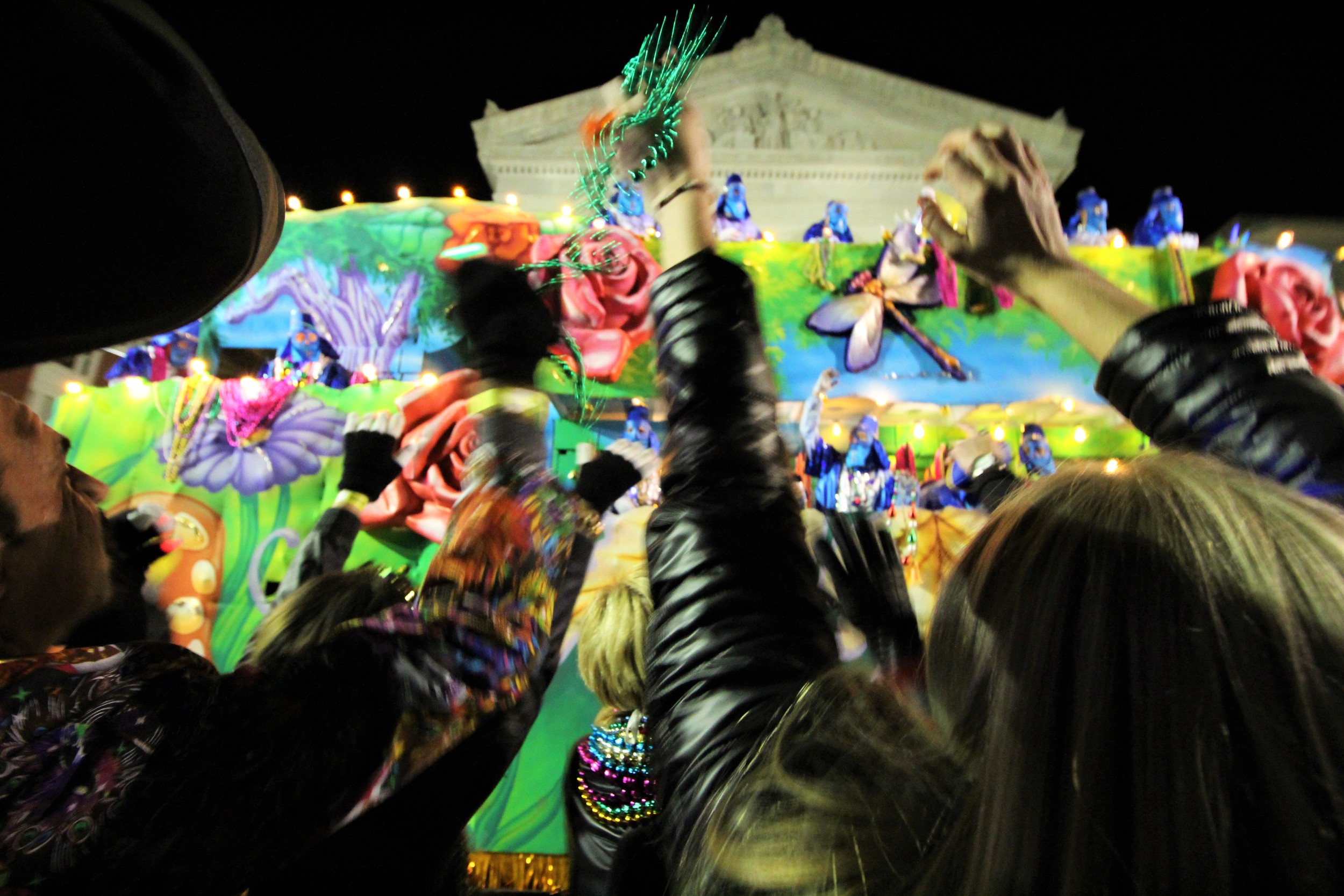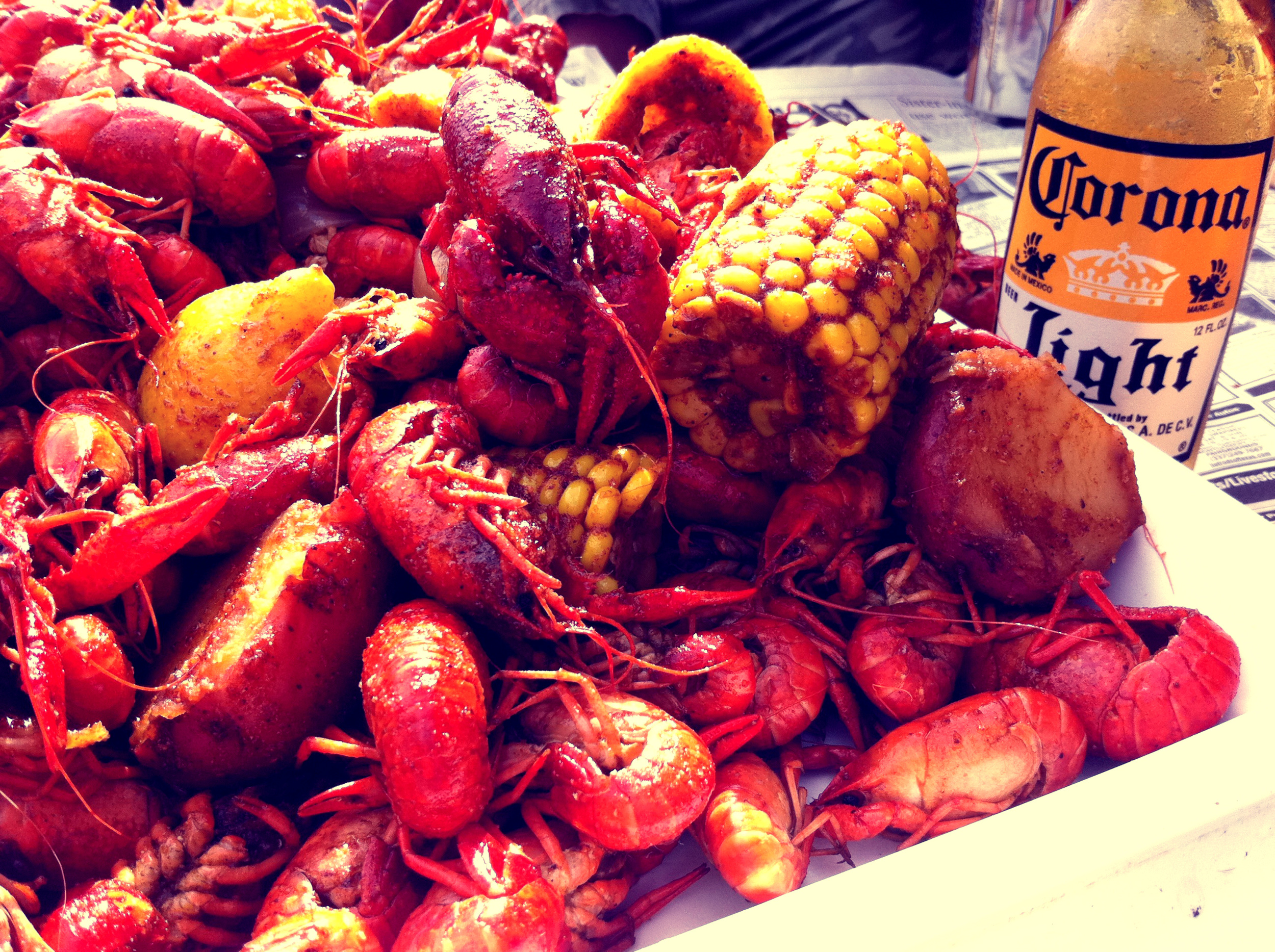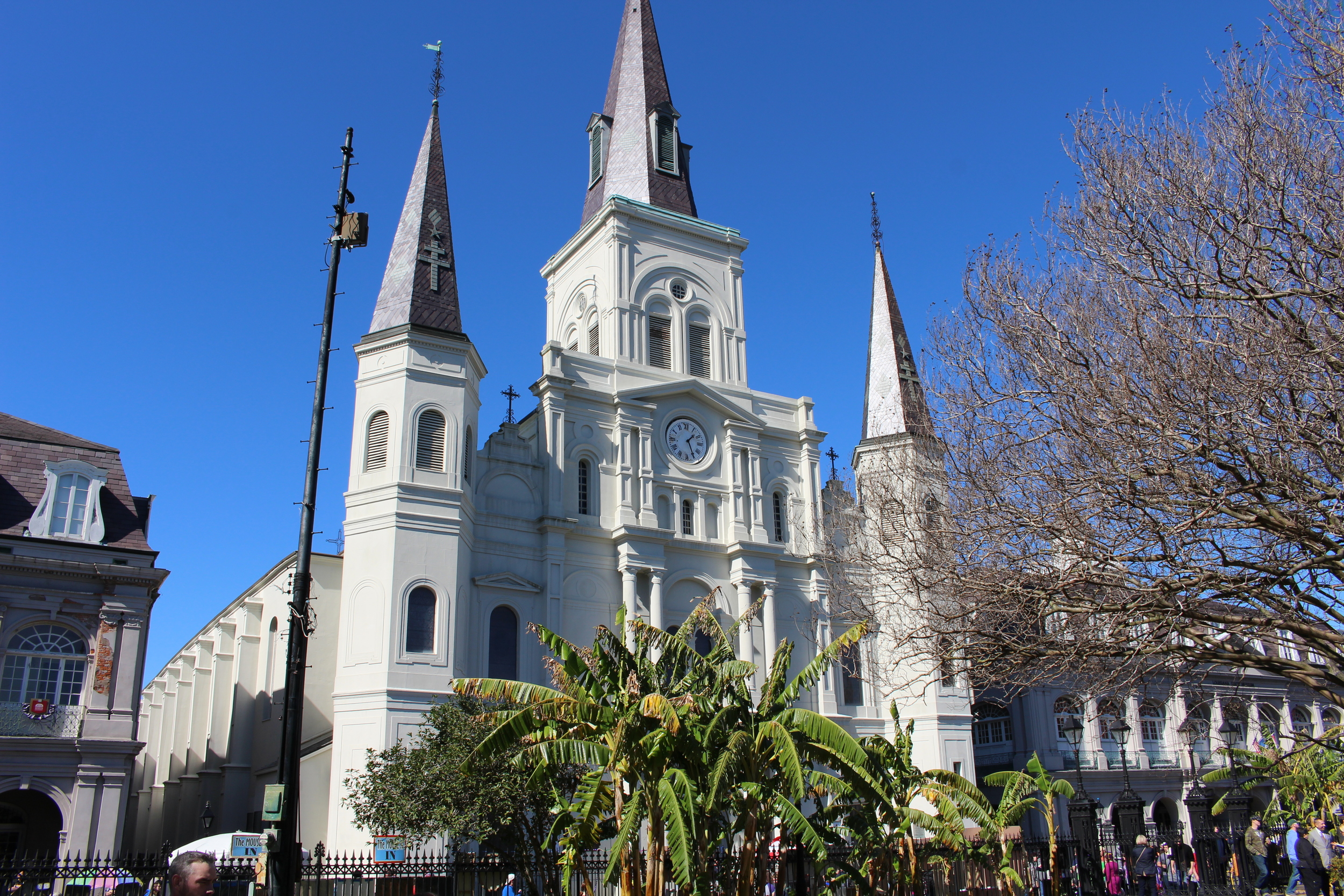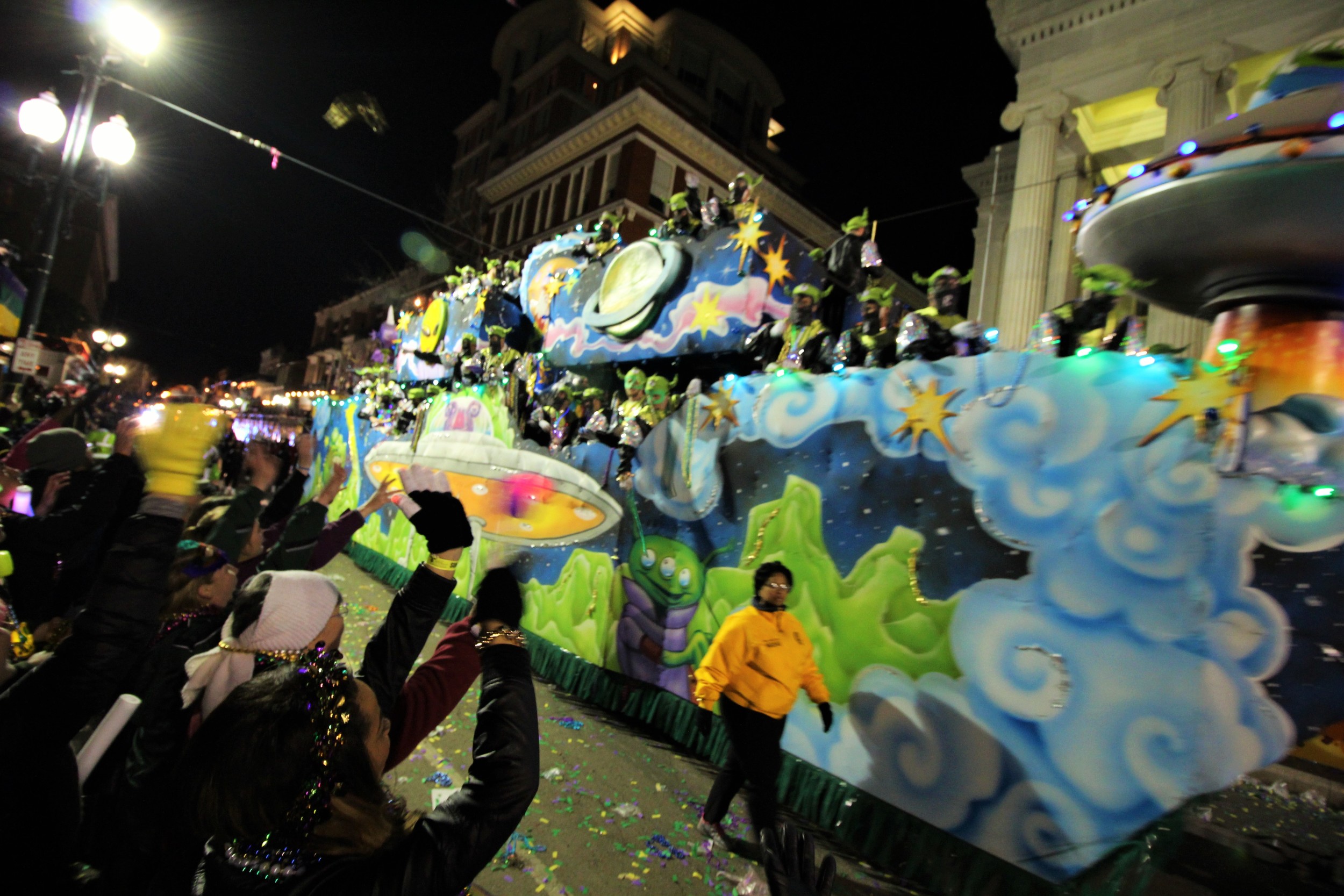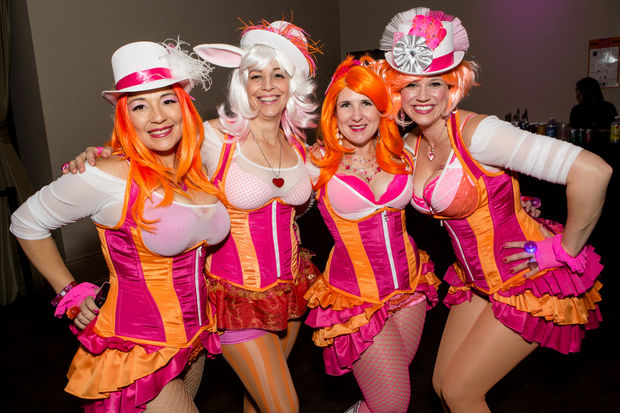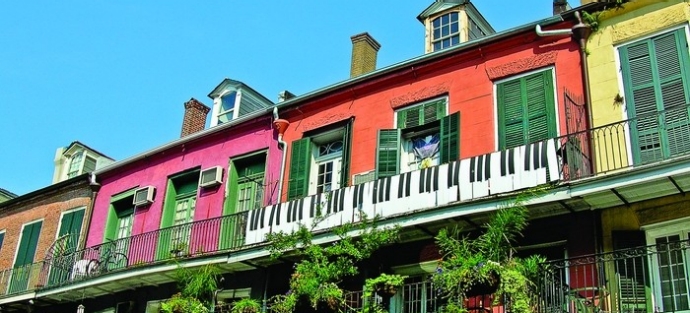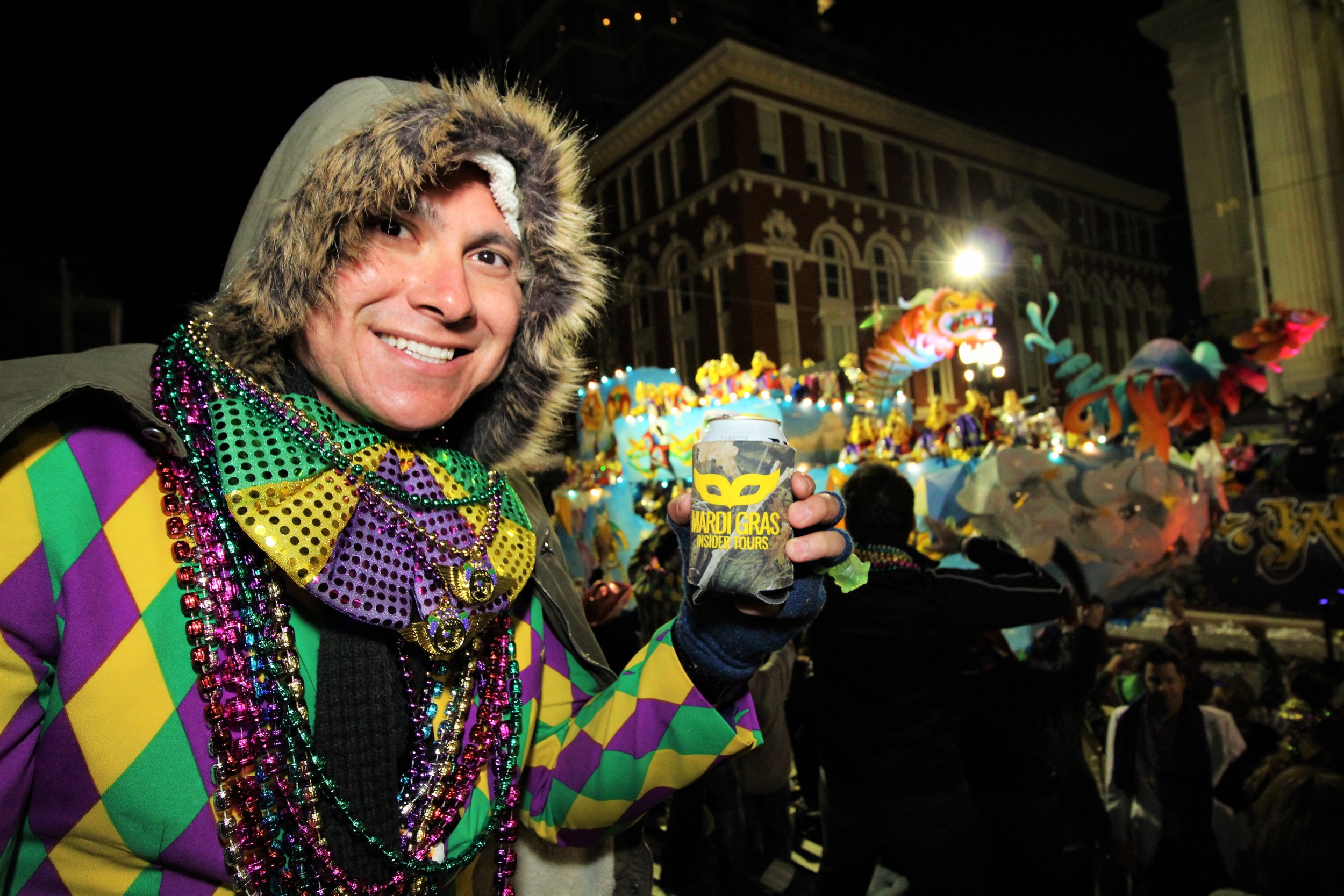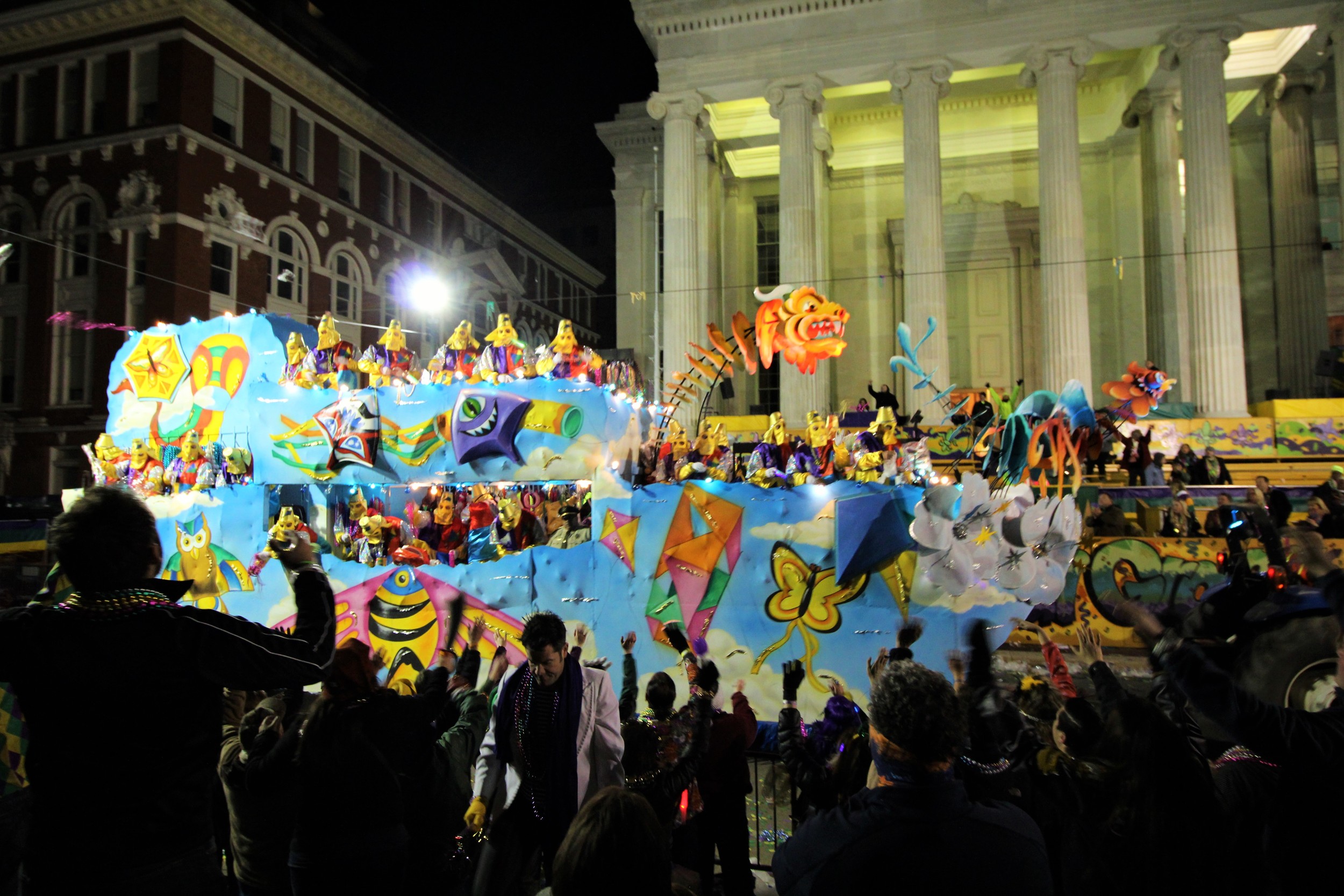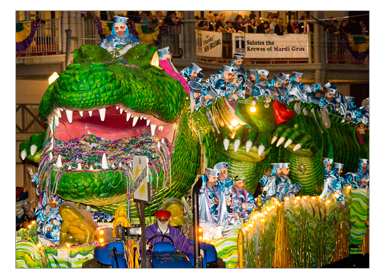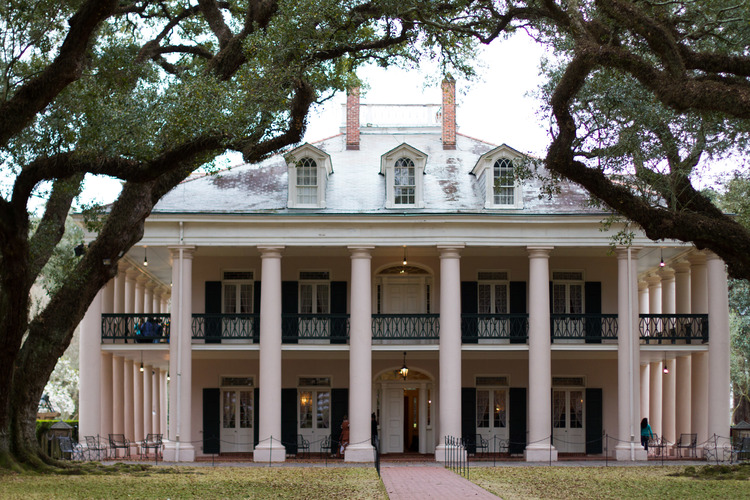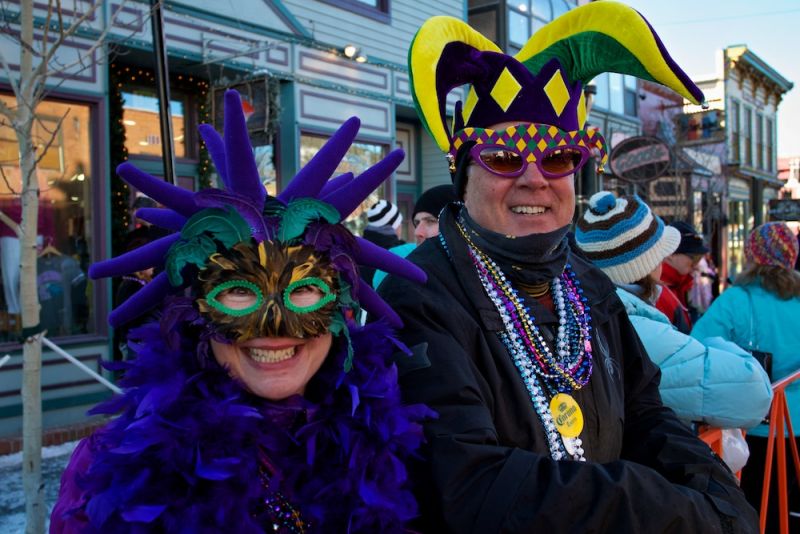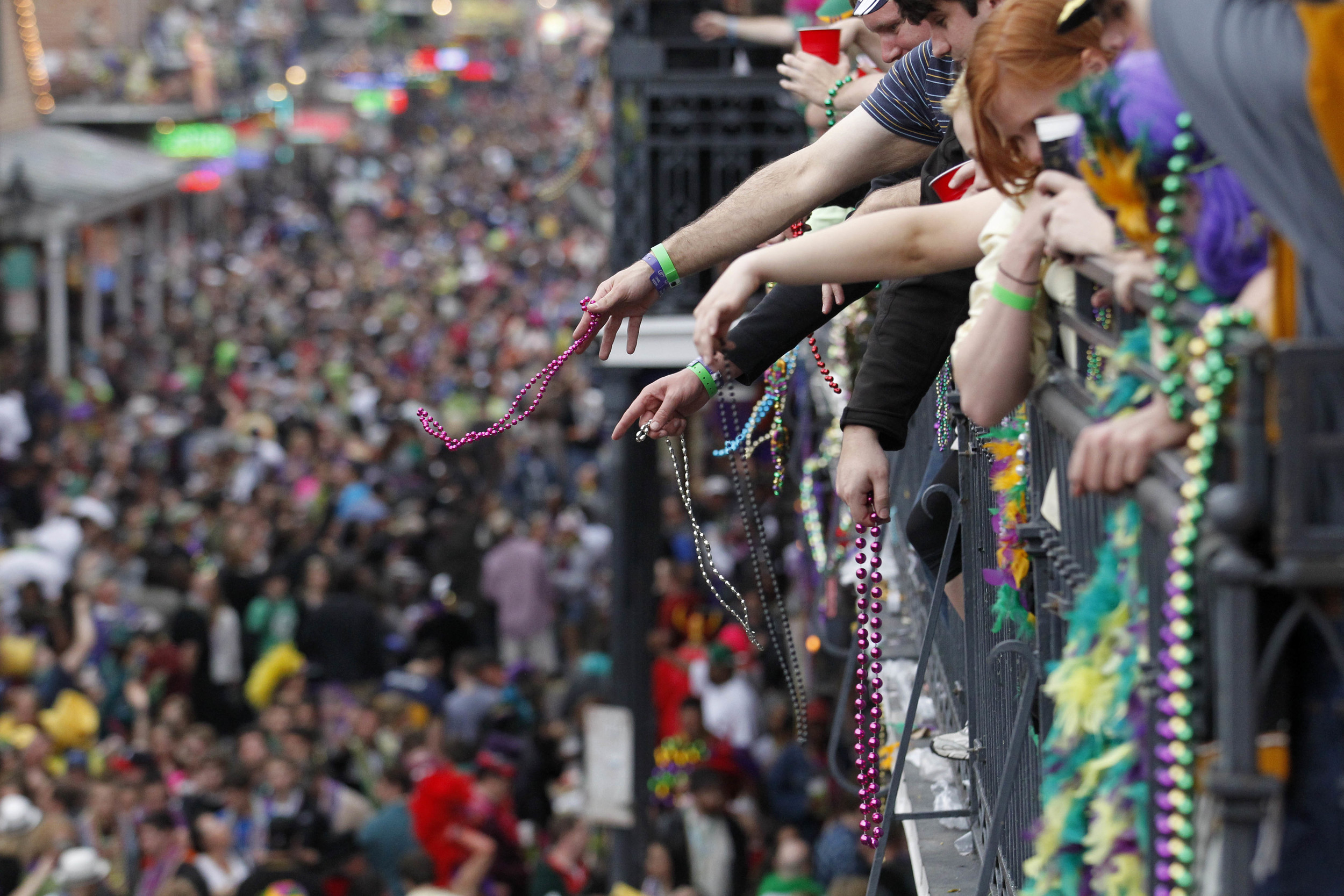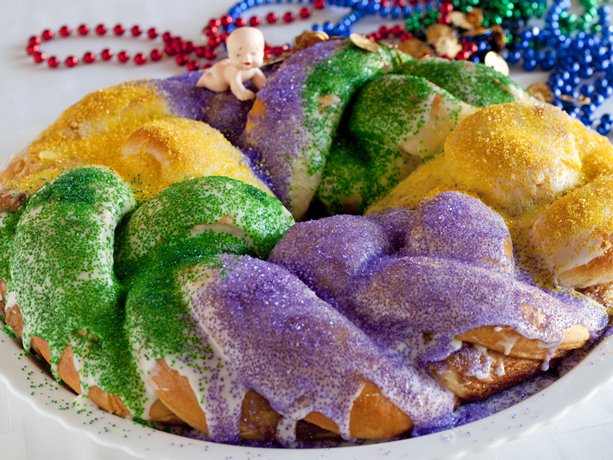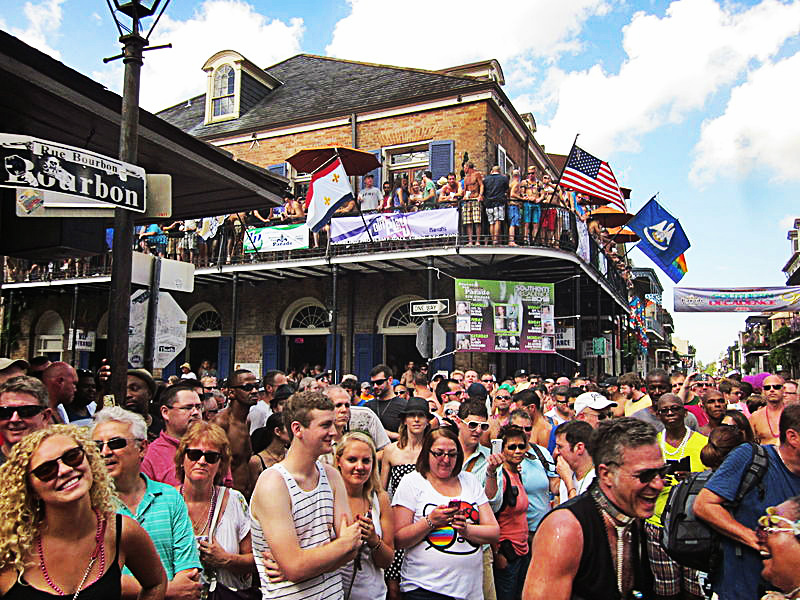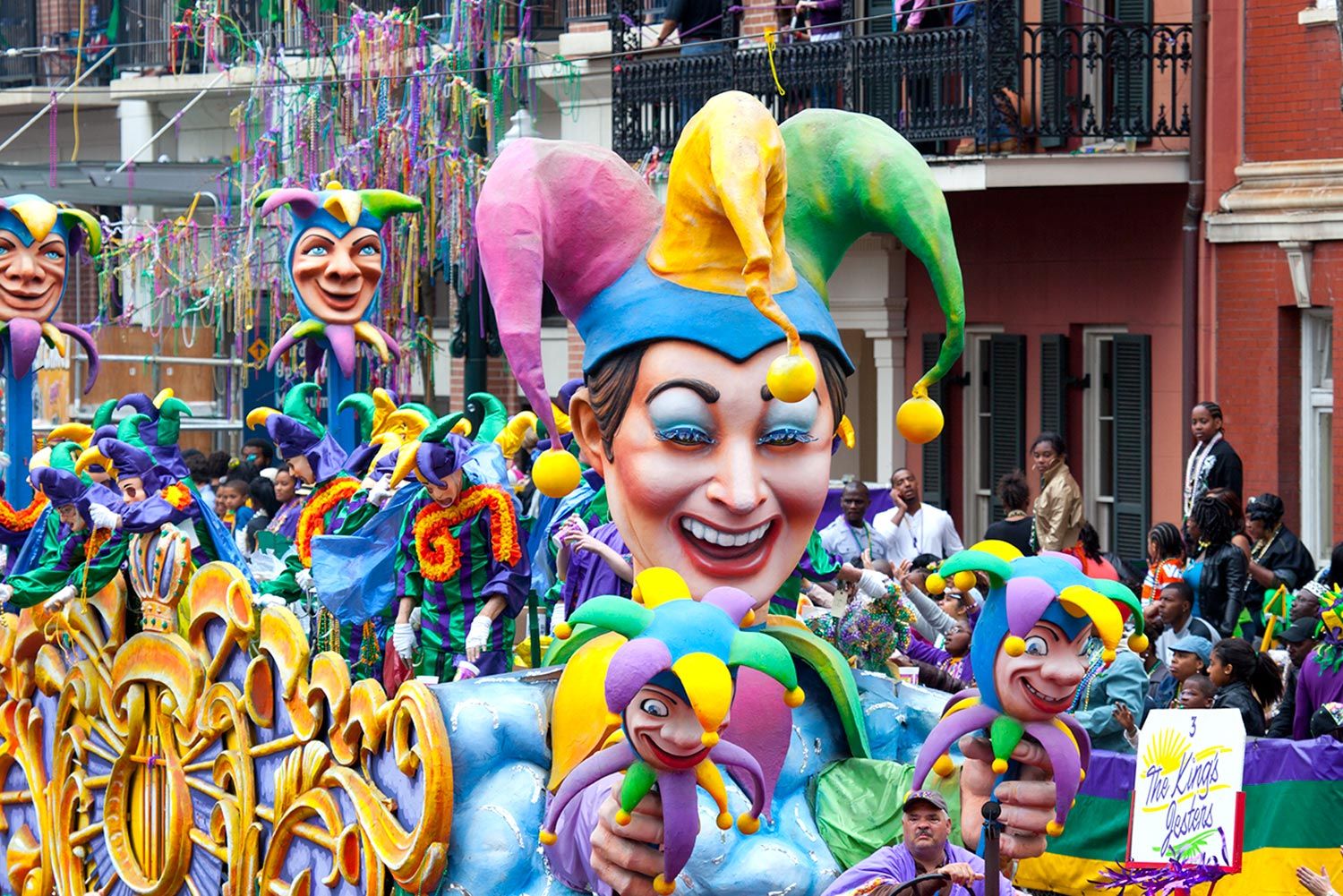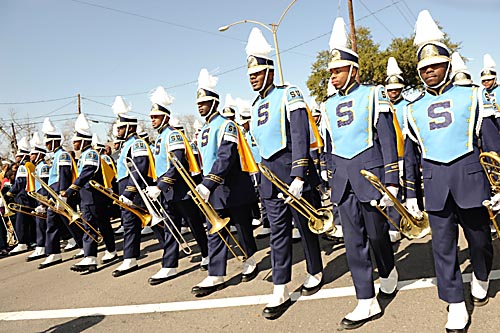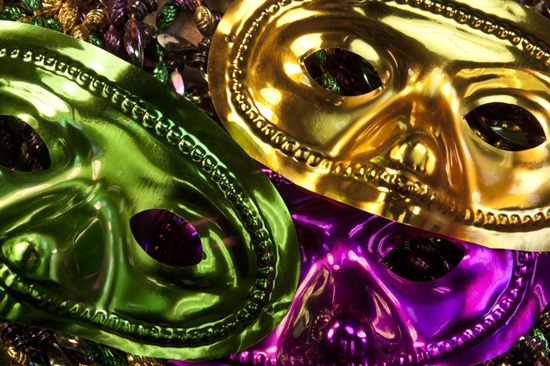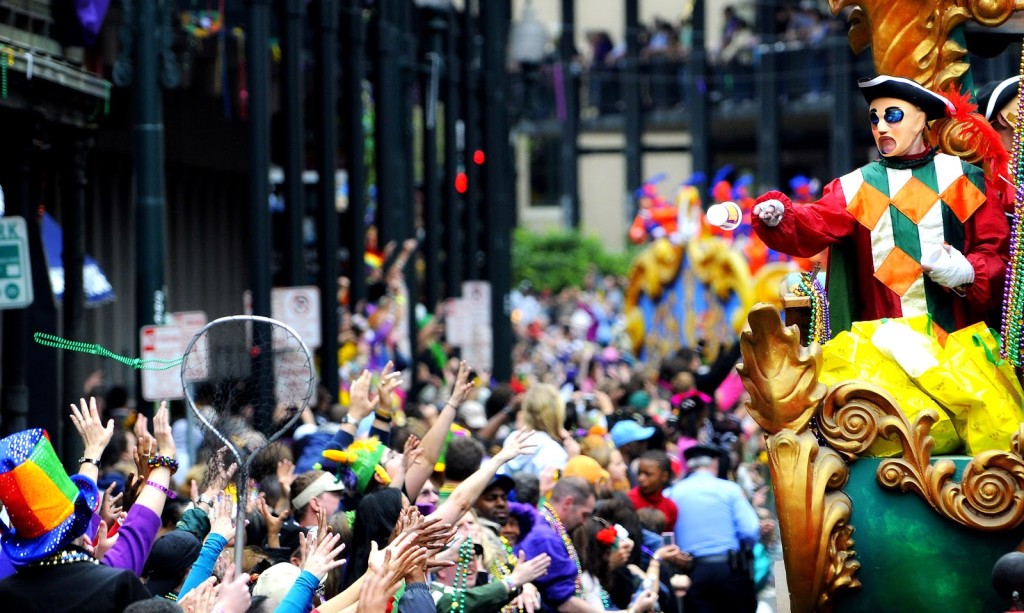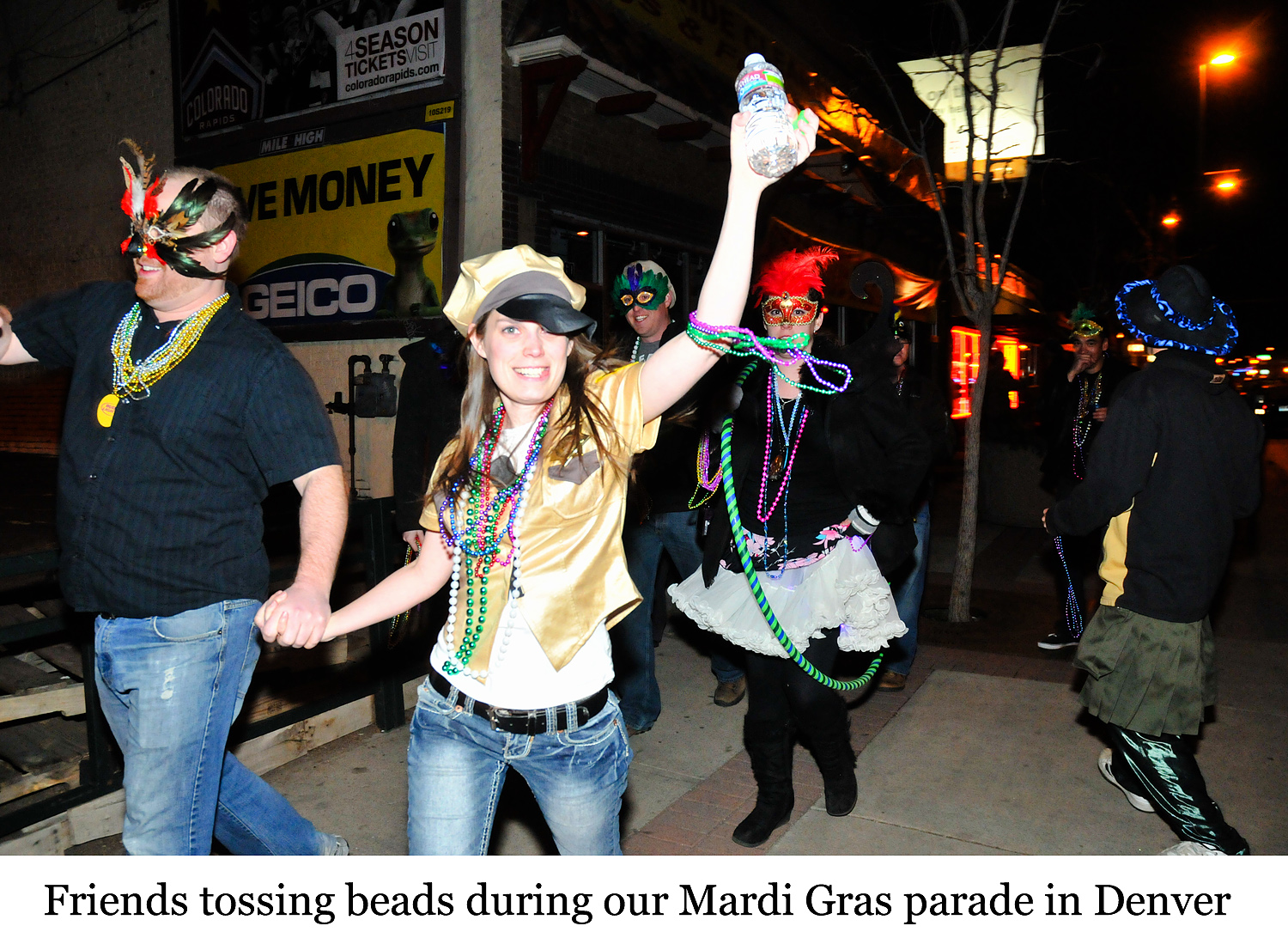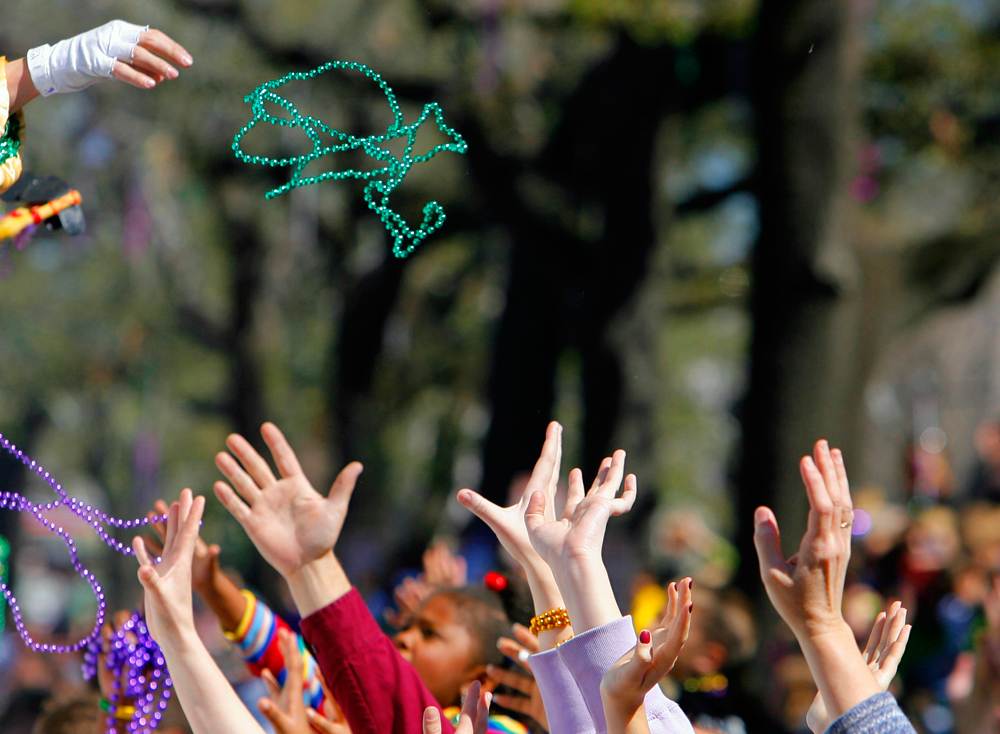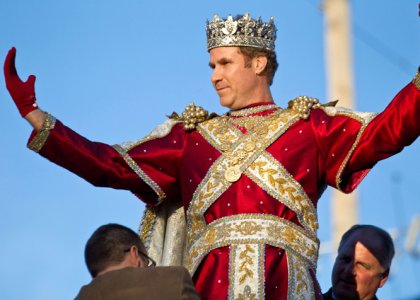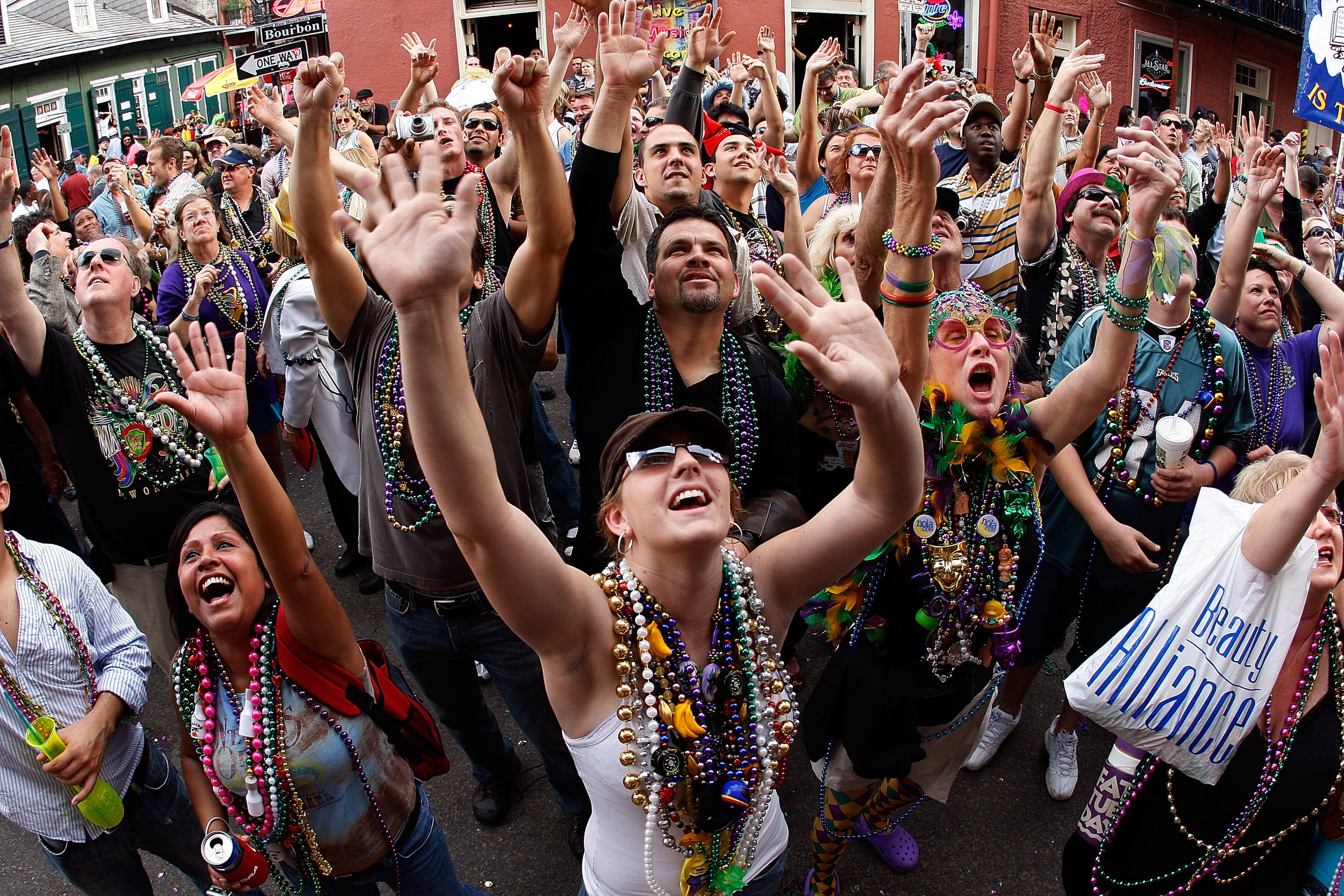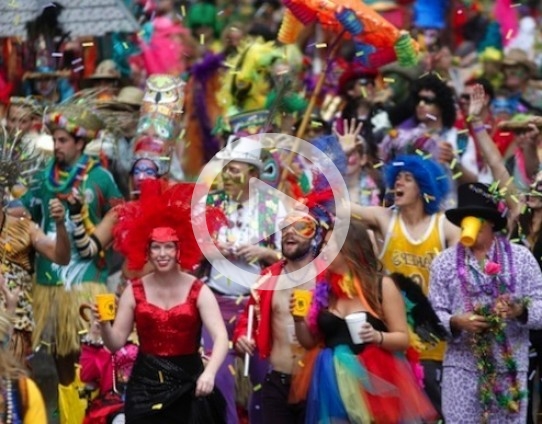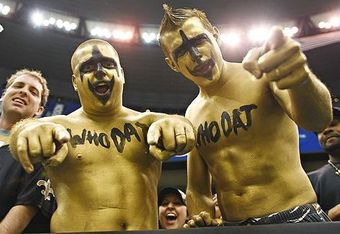Mardi Gras Traditions
New Orleans is a city rich in culture and tradition, and there is no tradition that runs deeper than Mardi Gras. Check out some of Mardi Gras' most interesting traditions below.
Mardi Gras Colors:
The official flag of Mardi Gras features the traditional colors of the Carnival: purple, gold and green. Meaning of colors:
- Purple - Justice
- Gold - Power
- Green - Faith
The traditional colors of Mardi Gras are purple, green, and gold. These colors are said to have been chosen by Grand Duke Alexis Alexandrovitch Romanoff of Russia during a visit to New Orleans in 1872.
When planning out your Mardi Gras costume, don't forget to incorporate these 3 super colors of Mardi Gras! Don't worry if you didn't pack your purple onesie, though - it won't take long before you're decked out in beads from friendly fellow party-goers at the parades!
Beads and Throws:
Beads and Throws are a huge part of Mardi Gras fun each year! Strings of beads and toys have been thrown from floats to parade-goers since at least the late 19th century. Until the 1960s, the most common throws were strings of glass beads. These were eventually replaced by cheaper metallic beads, and now flashier throws are common.
Today, fiber optic beads and LED-powered prizes are among the most sought-after items. Krewes have also started to produce limited edition beads and plush toys that are unique to the krewe. In a retro-inspired twist, glass beads have returned to parades and are now one of the most valuable throws.
Feathered Masks:
A Mardi Gras mask is an absolute essential item of the Carnival! Make one of your own or pick one up from one of the many vendors on Bourbon Street. Make sure to get one with purple, gold and green feathers to give it that extra special Carnival flair.
Hiding your face behind a Mardi Gras mask allows you to play a totally different role, it gives you the liberty to assume another personality. It is symbolic and magical, anonymous and mysterious!
Historically, masks were worn to cover the identity of secret society members and the richer folk. Now, as then, wearing a mask can cover a lot of atypical behavior that may shock the neighbors.
Rex, King of Mardi Gras:
Rex is Latin for "king". Specifically, it was the title of the kings of ancient Rome. Each year krewes are responsible for electing Rex, the king of the carnival. It is time honored tradition that the Rex arrives into his kingdom by boat via the Mississippi River the Monday before Mardi Gras (Lundi Gras). He is then transported to City Hall where he is presented the keys to his temporary kingdom. In 2006, the King of Carnival was Tabasco tycoon Paul McIlhenny, a New Orleans native. People thought that this was an appropriate choice given McIhenny’s jovial demeanor and long-time ties to New Orleans. The Rex motto is, "Pro Bono Publico—for the public good."
Doubloons:
One of the many Mardi Gras throws which krewes fling into the crowds, doubloons are large coins, either wood or metal, made in Mardi Gras colors. Standard krewe doubloons usually portray the Krewe's emblem, name, and founding date on one side, and the theme and year of the parade and ball on the other side. Royalty and members of the court may throw specialty doubloons, such as the special Riding Lieutenant doubloons given out by men on horseback in the Rex parade. In the last decade, krewes have minted doubloons specific to each float.
King Cake:
King cakes are a huge Mardi Gras tradition, and hundreds of thousands of King cakes are made, bought and eaten every year at mardi Gras. The traditional King cake is a coffee cake, and is oblong and braided. It is iced with a simple icing and covered with purple, green and gold sugar. Each cake contains a hidden trinket or small plastic baby, and custom tells that whoever finds it must either buy the next King cake or throw the next King cake party. King cakes first appeared after 1872, when the Rex Krewe selected the Mardi Gras colors.
New Orleans Lingo
The people of New Orleans have a very special tradition - their own language. Its tone, lilt, and slang are indigenous to this city and reflect its ethnic history and tradition. New Orleans is part of the deep south, but you won't find much of a stereotypical southern drawl; in fact, there are several distinctive dialects. One of the most surprising is a Brooklynese style heard in the 9th Ward, Irish Channel, and Chalmette sections of New Orleans. Little or no French is spoken by the majority of folks in New Orleans, but common parlance isn't without French influence. Aside from having everyday words and expressions that aren't used elsewhere in the States, New Orleanians throughout the city give meaning to and pronounce certain words their own way.
The below terms have been contributed by ExperienceNewOrleans.com.
Most Popular Terms:
- Bayou (by' you)
Slow stream, or body of water running through a marsh or swamp. - Cajun (kay' jun)
French Acadians who settled here after immigrating from Canada. - Creole (cree' ole)
Descendents of French, Spanish, and Carribean slaves and natives; has also come to mean any person whose ancestry derives from the Caribbean's mixed nationalities. - Doubloons (duh bloons')
Aluminum coins stamped with a parade krewe's insignia and theme. - King cake
Extra-large oval doughnut pastry dusted with colored candied sugar. A plastic baby doll is hidden inside the cake--the lucky person who gets the piece of cake with the doll inside (and doesn't break a tooth or swallow it in the process!) buys the king cake for the next party of the Mardi Gras season. - Lagniappe (lan' yap)
Something extra that you didn't pay for--thrown in to sweeten the deal--like a baker's dozen. (See mardigrasneworleans.com for more information) - Laissez les bons temps rouler (Lazay Lay Bon Tom Roulay)
Let the good times roll. - Mardi Gras
Fat Tuesday, the day before Lent...The day to celebrate before the traditional Catholic tradition of sacrificing and fasting during the 40 days of Lent. - Praline (Praw' leen)
Brown sugar pecan-filled candy patty. (Very sweet and so delicious you can't eat just one!) - Snowball
Shaved ice (nearly powder) served with flavored syrups. Those of you in the north might throw 'em...we eat 'em! - Throws
Trinkets such as beads, cups, and doubloons tossed from the floats to the crowds during Mardi Gras parades. - "Who Dat?"
- A New Orleans Saints fan
- A chant for New Orleans Saints fans: "Who dat? Who dat? Who dat say dey gonna beat dem Saints?"
Thank you to our friends at ExperienceNewOrleans.com for sharing their "Say What" New Orleans Lingo page with us. For a complete list of New Orleans Lingo, please visit their website here.








